Apply for a tourist visa to enter Peru
Esta página también está Disponible en Español
If you are a foreign person who wants to visit Peru for recreational or similar purposes and, due to your country of origin, you require a visa to enter the country, you must apply for a tourist visa at the Peruvian consular offices of the country where you are.
Citizens of some Latin American and European countries do not need this type of visa.

Conditions:
- This immigration status does not admit the purpose of immigration, permanent residence or development of remunerated activities.
- The presentation of the visa application and the required documentation does not guarantee the automatic granting of the visa. Each application is evaluated individually by the consul.
- Additional requirements may be required during the processing of the application.
- In case your visa application is denied, you may submit a new application after 6 months. In addition, the denial of a visa, regardless of the immigration status, is final and unappealable.
- Why hop with us
- Hop Login Here
- How We Started
- Who Travels with us?
- Why Hop With Us?
- Unique Hop Stops
- Peru Hop vs Public Buses in Peru
- Frequently asked questions
- Guide to Peru
- How It Works
- Tickets & Trips
- Exclusive Hotel/Hostel Discounts
- Group Travel
- Secret Slave Tunnels
- Nazca Lines Viewing Tower
- Paracas National Reserve
- Pisco Vineyard
- Machu Picchu
- Day Trips from Lima
- Day Trips From Cusco
- Day Trips from La Paz
- Paracas Day Trips
- Huacachina Day Tours
- Extra Tours
- Rainbow Mountain
- Ballestas Islands
- Quad Bike ATV
- Paragliding in Paracas
- Buggy and Sandboarding
- Nazca Lines Flight
- Full Day Tour
- Ruta del Sillar Tour
- Lake Titicaca
- 2 Hour Tour
- Isla del Sol
Peru , Travel Tips
Peru Tourist Visa 2024: What You Need To Know
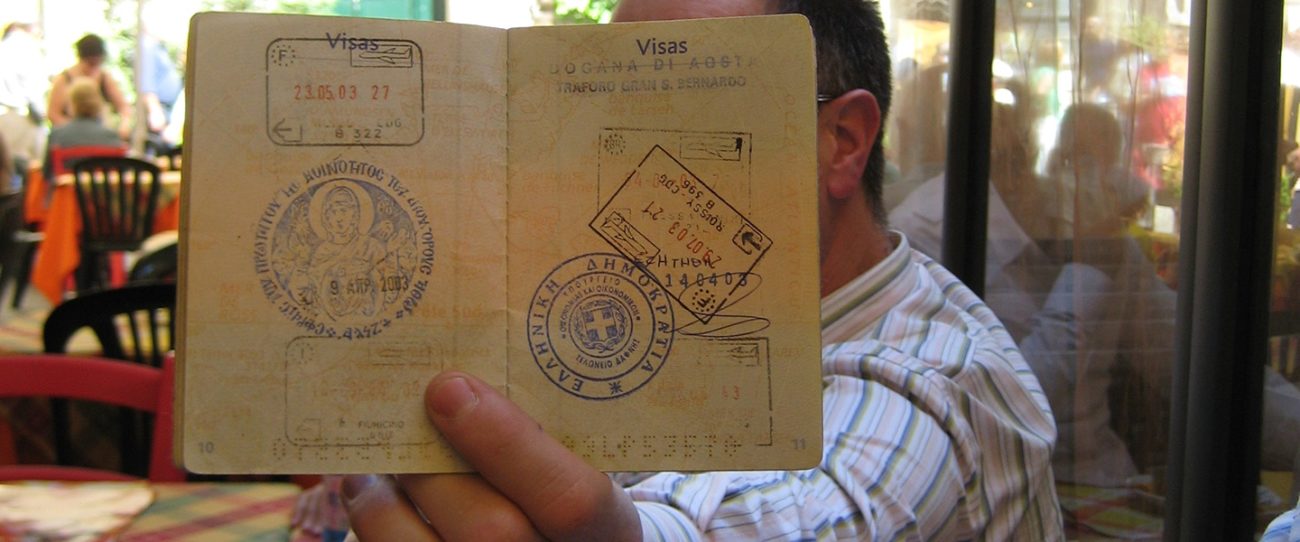
2024 Updated information about how to get your Peru tourist visa, which nationalities require a visa and everything you need to know to visit Peru as a tourist.
Getting a Peru tourist visa has never been easier. Most countries (excluding only a handful of Asian countries) don’t require a visa. Or, at least, the visa is issued upon arrival to the country, be it by air, land, or water. There are no vaccination requirements, just the suggestion of the yellow fever vaccination, particularly when travelers are planning to visit the jungle regions. Even if you don’t get it before entry, it can be found and administered at almost any pharmacy. If you have any doubts or concerns about visas or vaccinations, do not hesitate to speak to one of Peru Hop ‘s trained travel specialists who are available 24/7.
Entering Peru
To enter Peru you must have six months of passport validity remaining at the time of entry, and at least one page for your entry stamp (and, in turn, space for your exit stamp). You may also be required to show proof of return/onward travel- a plane ticket or your Peru Hop ticket if it passes over the border to Bolivia. You can read more about this in the “Exiting Peru” section, or you can get in contact with our travel experts.
A normal tourist visa will last for anywhere between 30 and 183 days, and depends a lot on the person who issues it. This can be extended with a visit to migrations, with a limit of 183 days in total from when you first entered the country. This 183 days is valid for 1 calendar year and cannot be extended after this time. If you overstay your visa you will be required to pay a fine of $1.50 per day, for every day you overstay. This must be paid in cash on exit. Ensure that you have the correct money as you leave, or you could find yourself having problems. There is a limit of $30,000 USD for entry and exit. Anything higher that $10,000 USD must be declared. If your entry is refused for whatever reason, airlines are obliged to return you to your point of origin.
Exiting Peru
If you do not have an entry record, you will not be allowed to exit the country until immigration authorities officially confirm the time and place of your entry. This is a long, expensive process and best avoided. Be sure that you have a correct entry record. This is particularly important at remote border crossings, where the proper officials may not be present.
Stolen or lost passports must be reported to the police immediately. You must keep a record of this report and apply for a new passport at your local embassy, and you must have the replacement before leaving the country.
In order to enter Peru you must have evidence to show that you will be leaving it. This evidence can come in the form of an air ticket, or even using one of Peru Hop’s tickets that pass over the border into Bolivia if you plan to continue your travels in South America. You can check out our full range of passes and also get advice 24/7 on your Bolivian visa with one of our travel experts.
Travel with Minors: Regardless of nationality, all children who are traveling with both birth parents are required to have a valid passport and the necessary visa or citizenship of the country where they are traveling. Peruvian immigration procedures are complex for minors traveling without one or both parents/legal guardians.
This is everything that you need to know about traveling to Peru with a tourist visa. It is always a good idea to be aware of where your countries embassy is when you enter a country, and to know the address or telephone number of it. You can find this out on their official website.
At Peru Hop we do our best to provide the most accurate and timely information regarding the tourist visa, however you should check your local embassy’s website for the most recent information. We do not accept liability for any information that may not be correct on this page.
You May Like
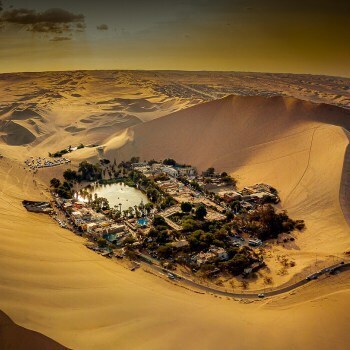
The #1 Thing to Do in Lima - Desert Oasis

How 2 Irish Guys set up Peru's BIGGEST Travel Company

Peru 2024 Travel Updates - All You Need to Know

Lima to Machu Picchu - Agencies DON\'T want you to read this!
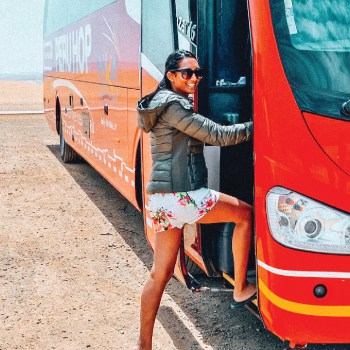
OFFICIAL: View #1 Travel Company in Peru by Tripadvisor

What NOT to do when visiting Rainbow Mountain

These Hidden Destinations close to Lima will AMAZE you

PERU INSIDER - Top Travel Tips in 2024
Update April 12, 2024
Information for u.s. citizens in the middle east.
- Travel Advisories |
- Contact Us |
- MyTravelGov |
Find U.S. Embassies & Consulates
Travel.state.gov, congressional liaison, special issuance agency, u.s. passports, international travel, intercountry adoption, international parental child abduction, records and authentications, popular links, travel advisories, mytravelgov, stay connected, legal resources, legal information, info for u.s. law enforcement, replace or certify documents.
Before You Go
Learn About Your Destination
While Abroad
Emergencies
Share this page:
Travel Advisory November 15, 2023
Peru - level 2: exercise increased caution.
Last Update: Reissued with updates to crime information.
Exercise increased caution due to crime, civil unrest, and the possibility of kidnapping . Some areas have increased risk. Read the entire Travel Advisory.
Do not travel to:
- The Colombian-Peruvian border area in the Loreto Region due to crime .
- The Valley of the Apurímac, Ene, and Mantaro Rivers (VRAEM), including areas within the Departments of Ayacucho, Cusco, Huancavelica, and Junin, due to crime and terrorism .
Country Summary : Crime, including petty theft, carjackings, muggings, assaults, and other violent crime, is common in Peru and can occur during daylight hours despite the presence of many witnesses. Kidnapping is rare, but does occur. The risk of crime increases at night. Organized criminal groups have been known to use roadblocks to rob victims in areas outside of the capital city of Lima.
Demonstrations occur regularly throughout the country. Public demonstrations can take place for a variety of political and economic issues. Demonstrations can cause the shutdown of local roads, trains, and major highways, often without prior notice or estimated reopening timelines. Road closures may significantly reduce access to public transportation and airports and may disrupt travel both within and between cities.
U.S. travelers participating in Ayahuasca and Kambo ceremonies should be aware that numerous persons, including U.S. citizens, have reported that while under the influence of these substances, they have witnessed or been victims of sexual assault, rape, theft, serious health problems and injuries, and even death.
Currently, U.S. government personnel cannot travel freely throughout Peru for security reasons . Read the country information page for additional information on travel to Peru.
If you decide to travel to Peru:
- Be aware of your surroundings.
- Monitor local media for breaking events and adjust your plans as needed.
- Enroll in the Smart Traveler Enrollment Program ( STEP ) to receive Alerts and make it easier to locate you in an emergency.
- Follow the Department of State on Facebook and Twitter .
- Follow the U.S. Embassy on Facebook and Twitter .
- Review the U.S. Embassy webpage .
- Review the Country Security Report for Peru.
- Prepare a contingency plan for emergency situations. Review the Traveler’s Checklist .
- Visit the CDC page for the latest Travel Health Information related to your travel.
Colombian-Peruvian border area in the Loreto Region – Level 4: Do Not Travel
Drug trafficking and other criminal activity, combined with poor infrastructure, limits the capability and effectiveness of Peruvian law enforcement in this area.
The U.S. government has limited ability to provide emergency services to U.S. citizens as U.S. government personnel are restricted from traveling within 20 kilometers of the border with Colombia in the Loreto region, except on the Amazon River itself, without permission. This includes travel on the Putumayo River, which forms most of the Peru-Colombia border.
U.S. government personnel must receive advance permission for any travel to the Peruvian-Colombian border.
Valley of the Apurímac, Ene, and Mantaro Rivers (VRAEM) includes areas within the Departments of Ayacucho, Cusco, Huancavelica, and Junin – Level 4: Do Not Travel
Remnants of the Shining Path terrorist group are active in the VRAEM. The group may attack with little or no warning, targeting Peruvian government installations and personnel.
Drug trafficking and other criminal activity, combined with poor infrastructure, limit the capability and effectiveness of Peruvian law enforcement in this area.
U.S. government personnel are restricted from traveling in the VRAEM except for certain areas during daylight hours. U.S. government personnel must receive advance permission for any travel to the VRAEM. The U.S. government has limited ability to provide emergency services to U.S. citizens due to these travel restrictions.
Visit our website for Travel to High-Risk Areas .
Embassy Messages
View Alerts and Messages Archive
Quick Facts
Must have six months validity at time of entry.
One page required for entry stamp.
Free, issued at the port of entry.
None Required.
$30,000 USD. More than $10,000 USD must be declared upon entry.
Same as entry.
Embassies and Consulates
U.S. Embassy Lima Avenida La Encalada cdra. 17 s/n Surco, Lima 33 Peru Telephone: + (51)(1) 618-2000 Emergency After-Hours Telephone: + (51)(1) 618-2000 Fax: + (51) (1) 618-2724 Email: [email protected]
U.S. Consular Agency - Cusco Av. El Sol 449, Suite #201 Cusco, Peru Telephone: + (51)(84) 231-474 Emergency After-Hours Telephone: + (51)(1) 618-2000 Fax: + (51)(84) 245-102
Email: [email protected]
Destination Description
See the Department of State’s Fact Sheet on Peru for information on U.S.-Peru relations.
Entry, Exit and Visa Requirements
COVID-19 Requirements
- There are no COVID-related entry requirements for U.S. citizens.
Requirements for Entry :
- A passport with six months validity is required to enter Peru. Migraciones (Immigration) authorities may also require evidence of return/onward travel.
- Be sure your date and place of entry is officially documented by Migraciones, whether you arrive at a port, airport, or land border.
- Your length of approved stay will be determined by border officials at the time of entry, and can range from 30 to 183 days. Extensions for tourists are usually not approved, and overstays result in fines.
- The Embassy is unable to assist if you are denied entry. Peruvian immigration requires airlines to return travelers who are denied entry to their point of origin.
Requirements for Exit :
- If you do not have an entry record, you will not be allowed to exit the country until immigration authorities confirm the time and place of your entry into the country. This can be a difficult process, costing considerable time and money to resolve.
- Make sure Migraciones (Immigration) records your entry, and then save the record for your exit. An entry record is required even at remote border crossings, where often the proper officials are not present.
- Immediately report lost/stolen passports to local police and keep the report. You must apply for a new passport at the Embassy and obtain a replacement entry record from Migraciones using your police report prior to exiting Peru.
Travel with Minors : Regardless of nationality, all children who are traveling with both birth parents are required to have a valid passport and the necessary visa or citizenship of the country where they are traveling. Peruvian immigration procedures are complex for minors traveling without one or both parents/legal guardians.
For entry/exit from Peru, U.S. citizen minors under the age of 18, traveling alone (or with only one parent), generally do not require additional documentation if entering as a tourist for less than 183 days. However, if the stay lasts more than 183 days, then a Permiso Notarial de Viaje is required (see below).
U.S. citizen minors who are dual national Peruvians, traveling alone (or with only one parent), require a Permiso Notarial de Viaje. Furthermore, step-parents or guardians accompanying a dual U.S.-Peruvian citizen minor must provide a Permiso Notarial de Viaje from the non-traveling minor’s parents (as listed on the birth certificate). Finally, if an accompanying parent has sole custody, legal documentation is required (such as a foreign court-approved custody document stating sole custody, a death certificate, a Peruvian court-approved document for travel, or a birth certificate listing only one parent).
A Permiso Notarial de Viaje is a written, notarized authorization from the non-traveling parent(s). Peruvian immigration will not accept a document notarized by the U.S. Embassy or a document notarized by a U.S. notary in lieu of a Permiso Notarial de Viaje. Please be aware that these authorizations are valid for 30 days and one trip only.
How to get a Permiso Notarial de Viaje:
- In the United States, at the nearest Peruvian Consulate. There are multiple locations .
- In Peru, at most Peruvian notaries. An apostilled U.S. birth certificate is required for issuance.
The U.S. Embassy is unable to assist travelers who are prevented from traveling for lack of a Permiso Notarial de Viaje.
HIV Restrictions : The U.S. Department of State is unaware of any HIV/AIDS entry restrictions for visitors to, or foreign residents of, Peru.
Find information on dual nationality , prevention of international child abduction , and customs regulations on our websites.
Safety and Security
Terrorism: Terrorist groups and those inspired by such organizations are intent on attacking U.S. citizens abroad. Terrorists are increasingly using less sophisticated methods of attack – including knives, firearms, and vehicles – to more effectively target crowds. Frequently, their aim is unprotected or vulnerable targets, such as:
- High-profile public events (sporting contests, political rallies, demonstrations, holiday events, celebratory gatherings, etc.)
- Hotels, clubs, and restaurants frequented by tourists
- Places of worship
- Schools
- Parks
- Shopping malls and markets
- Public transportation systems (including subways, buses, trains, and scheduled commercial flights)
U.S. Embassy Lima enforces a Restricted Travel Policy for Embassy personnel, which is based on its assessment of conditions and developments throughout the country. See the Overseas Security and Advisory Council’s Country Security Report for Peru. See the latest Travel Advisory for Peru .
The VRAEM (Valley of the Apurímac, Ene, and Mantaro Rivers) is particularly remote and a known safe haven for narcotraffickers and the last operational remnants of the Shining Path terrorist group.
For more information, see our Terrorism page.
Crime : Crime is a widespread problem in Peru.
- Sexual assaults and rapes can occur, even in tourist areas. Travel in groups, do not leave food or drinks unattended, and use caution if a stranger offers you food or drink.
- Intoxicated travelers, including U.S. citizens, also have been sexually assaulted, injured, or robbed while under the influence of drugs and alcohol.
- Pick-pocketing, robbery, and hotel room theft are the most common crimes. Armed robberies have occurred throughout the city, including popular tourist destinations. Armed assailants usually target victims for their smartphones, wallets, or purses. If confronted by someone with a weapon, it is best not to resist.
- Incapacitating drugs, such as rohypnol and scopolamine, have been used to facilitate robberies and sexual assaults. Seek medical attention if you begin to feel ill.
- On routes to and from the airport in Lima, robberies have occurred where the assailant uses a tool to break a window while the vehicle is stopped in traffic. Keep your belongings in the trunk or out of sight. Authorized taxi booths are present at the airport in Lima that will charge a flat rate according to the destination.
- Use hotel safes, if available. Avoid wearing obviously expensive jewelry or clothing, and carry only the cash or credit cards that you need.
- Stay alert in crowds and on public transportation. Be aware that thieves might create distractions to target you.
- Avoid isolated areas when on foot, especially after dark.
- Be alert for robberies in which criminals enter a taxi and force victims to withdraw money from ATMs.
- Use an app-based taxi service, order a taxi by phone, or use a service affiliated with a major hotel, as it is usually safer than hailing an unknown taxi on the street.
- Use ATMs in well-protected indoor areas such as banks or shopping malls. Avoid withdrawing large amounts of cash at one time.
- Do not let your credit card out of your sight in order to avoid credit card “skimming.” You should expect the vendor to use a credit card reader in your presence. The vendor will ask for your passport or ID number on the receipt.
- To avoid carjacking or theft from your car while you are stopped at intersections, drive with your doors locked and windows rolled up. Do not leave valuables in plain view.
There is little government presence in many remote areas of the Andes and Amazon basin. Illicit activities, such as illegal mining, logging, and coca production, are common.
Drug trafficking and other criminal activity, combined with poor infrastructure, limit the capability and effectiveness of Peruvian law enforcement in these areas.
The U.S. government has limited ability to provide emergency services to U.S. citizens along the Colombian border and in the VRAEM, as U.S. government personnel are restricted from traveling in these regions.
Demonstrations occur frequently. They may take place in response to political or economic issues, on politically significant holidays, and during international events.
- Demonstrations can be unpredictable; avoid areas around protests and demonstrations.
- Past demonstrations have turned violent.
- Check local media for updates and traffic advisories.
International Financial Scams: See the Department of State and the FBI pages for information.
Financial scams are prevalent in Peru. Scams are often initiated through Internet postings/profiles or by unsolicited emails and letters. Scammers almost always pose as U.S. citizens who have no one else to turn to for help. Common scams include:
- Money transfers
- Grandparent/Relative targeting
Victims of Crime : U.S. citizen victims of sexual assault are encouraged to contact the U.S. Embassy for assistance. Report crimes to the local police and contact the U.S. Embassy in Lima. Remember that local authorities are responsible for investigating and prosecuting crime.
- U.S. Embassy: +51-1-618-2000 (phone is answered 24 hours a day, seven days a week)
- Local police: 105 (National Police)
- Tourist Police: 0800-22221
- IPeru: 01-574-8000 (a tourist information service that has English-speaking personnel)
See our webpage on help for U.S. victims of crime overseas .
- Help you find appropriate medical care.
- Assist you with reporting a crime to the police.
- Contact relatives or friends with your written consent.
- Provide general information regarding the victim’s role during the local investigation and following its conclusion.
- Provide a list of local attorneys.
- Provide information on victims’ compensation programs in the United States .
- Provide information on assistance programs for victims of crime in Peru .
- Provide an emergency loan for repatriation to the United States and/or limited medical support in cases of destitution.
- Help you find accommodation and arrange flights home.
- Replace a stolen or lost passport.
Domestic Violence : U.S. citizen victims of domestic violence are encouraged to contact the Embassy for assistance. Telephone (answered 24 hours): +51-1-618-2000
Tourism : The tourism industry, including adventure activities (e.g. paragliding, sandboarding, etc.), is unevenly regulated, and safety inspections for equipment and facilities do not commonly occur. Hazardous areas/activities are not always identified with appropriate signage, and staff may not be trained or certified either by the host government or by recognized authorities in the field. U.S. citizens are encouraged to pay attention to waiver and liability policies of tour companies, as they may vary or not exist. In the event of an injury, appropriate medical treatment is typically available only in/near major cities. First responders are generally unable to access areas outside of major cities and to provide urgent medical treatment. U.S. citizens are encouraged to purchase medical evacuation insurance .
Local Laws & Special Circumstances
Criminal Penalties : You are subject to local laws. If you violate local laws, even unknowingly, you may be expelled, arrested, or imprisoned. Individuals establishing a business or practicing a profession that requires additional permits or licensing should seek information from the competent local authorities prior to practicing or operating a business.
Ayahuasca/Kambo/Hallucinogens: Traditional hallucinogens, often referred to as ayahuasca or kambo, are often marketed to travelers as “ceremonies” or “spiritual cleansing,” and typically contain dimethyltryptamine (DMT), a strong hallucinogen that is illegal in the United States and many other countries.
- Intoxicated travelers, including U.S. citizens, have been sexually assaulted, injured, or robbed while under the influence of these substances.
- Health risks associated with ayahuasca are not well understood, and, on occasion, U.S. citizens have suffered serious illness or death after taking these drugs.
- These incidents often occur in remote areas and far away from modern medical facilities, making the risks even greater.
- Penalties for possessing, using, or trafficking in illegal drugs in Peru are severe.
- Offenders can expect long pre-trial detention and lengthy prison sentences under harsh conditions with significant expense for themselves and/or their families.
- Never agree to carry a suitcase or package through customs for anyone.
- Peru uses strict screening procedures for detecting narcotics smuggling at its international airports.
Customs Currency Regulations :
- $30,000 USD or its equivalent in cash or negotiable items is the maximum allowed for entry or exit.
- Any amount in excess of $10,000 USD must be declared and the legal source proven.
Artifacts :
- Peruvian law forbids the export of pre-Columbian objects and other artifacts protected by cultural patrimony statutes.
- U.S. customs officials are required to seize pre-Columbian objects and certain colonial religious artwork brought into the United States.
Animal Products/Plants :
- Avoid products made of wild plants and animals, as many are of illegal origin and may involve protected or endangered species, whose sale and export are illegal.
- Peruvian authorities will seize any protected species that is sold or transported, either live or transformed into food, medicinal beverages, leather, handcrafts, garments, etc.
- Some products, including live animals, require special permits when leaving Peru.
- Knowingly importing into the United States wildlife or plants that were taken from the wild or sold in violation of the laws of Peru (or any other country) is a violation of the Lacey Act (16 USC § 3371).
Furthermore, some laws are also prosecutable in the United States, regardless of local law. For examples, see our website on crimes against minors abroad and the Department of Justice website.
Arrest Notification : If you are arrested or detained, ask police or prison officials to notify the U.S. Embassy immediately. See our webpage for further information.
Special Circumstances : Many popular destinations in Peru are remote. These areas have few facilities that are able to provide advanced or emergency medical care.
- Local rescue capabilities are severely limited. Many mountain areas are too high for helicopters to reach safely. Accidents or injuries while hiking or climbing are common; crisis responders may take hours or even days to reach you if they are traveling over great distances and/or rough terrain.
- When using tourist company services, travelers are encouraged to use qualified and licensed operators. Many do not meet international safety standards. Inquire about safety standards prior to engaging in adventure activities. The Ministerio de Comercio Exterior y Turismo (Tourism Ministry) website provides information on tourism companies.
- Always check with local authorities before traveling about local geographic, climatic, health, and security conditions that may impact your safety.
- Be aware that you may not have access to phone or internet for days at a time. Check in with family prior to going to remote areas and leave detailed written plans and timetables. Use of a personal GPS beacon is encouraged.
Seismic Activity : Earthquakes are common throughout Peru. On May 26, 2019, a magnitude 8.0 earthquake struck the Loreto region of Peru. One fatality in the Cajamarca region and 11 injuries as well as isolated power outages and some infrastructure damage were reported.
- Visit Peru’s National Emergency Operations Center (COEN) for more information.
- In the event of a natural disaster, monitor local media and government agencies, including IPeru , the Commission to Promote Peru for Exports and Tourism (PROMPERU) , and Peru’s National Meteorology and Hydrology Service (SENAMHI) for updates.
- WhatsApp: IPeru +51-944-492-314
- Twitter: @Promperu @COENPeru @SENAMHIPeru @Sismos_Peru_IGP
- Visit the U.S. Centers for Disease Control and Prevention website for information on emergency preparedness and response.
Legal Issues in Peru :
- The legal system in Peru may require victims or their families to hire lawyers to advance their cases through the legal system, even for victims of serious crimes.
- U.S. citizens have reported unethical practices by lawyers and others, resulting in costly losses and little hope of remedy through the local judicial system.
- Peruvian laws are subject to change with little notice . The Peruvian government publishes little information in English. The U.S. Embassy cannot give detailed advice about Peruvian law.
Counterfeit and Pirated Goods : Although counterfeit and pirated goods are prevalent in many countries, they may still be illegal according to local laws. You may also pay fines or have to give them up if you bring them back to the United States. See the U.S. Department of Justice website for more information.
Faith-Based Travelers : See the following webpages for details:
- Faith-Based Travel Information
- International Religious Freedom Report – see country reports
- Human Rights Report – see country reports
LGBTQI+ Travelers : There are no legal restrictions on same-sex sexual relations or the organization of LGBTI events in Peru.
See our LGBTQI+ Travel Information page and section 6 of our Human Rights report for further details.
Travelers with Disabilities: Peruvian law prohibits discrimination against persons with physical and mental disabilities, and the law is enforced. Social acceptance of persons with disabilities in public is as prevalent as in the United States. The most common types of accessibility may include ramps, special cashiers for those with disabilities, and elevators. Expect accessibility to be limited in public transportation, and common in lodging, communication/information, and general infrastructure. There is a significant difference between Lima (and other large cities) and the rest of the country.
- Rental, repair, and replacement services are available for aids/equipment/devices.
- The Ministry of Foreign Affairs has a list of translators .
Students : See our Students Abroad page and FBI travel tips .
Women Travelers : See our travel tips for Women Travelers .
COVID-19 Testing:
- PCR and/or antigen tests are available for U.S. citizens in Peru, and test results are reliably available within one calendar day.
- Peru is able to test for COVID-19 in country. Private hospitals and laboratories as well as the Peruvian Ministry of Health (MINSA) are administering tests.
- U.S. citizens are responsible for their own COVID-19 testing costs.
COVID-19 Vaccines:
The COVID-19 vaccine is available for U.S. citizens to receive in Peru. Visit the FDA's website to learn more about FDA-approved vaccines in the United States.
- Pfizer-BioNTech, Moderna, AstraZeneca, and Sinopharm vaccines are available in Peru.
- For more information about the Peruvian Ministry of Health’s (MINSA) national vaccine strategy, see (in Spanish) MINSA's website .
Medical Care :
- Specialized medical care can cost tens of thousands of dollars, and you are expected to pay in full at the time of discharge.
- Pharmacies are widely available. However, some medications might not be offered, and brand names will differ from products in the United States.
- Exercise caution if you explore herbal and folk remedies.
For emergency services in Peru, dial 113 .
Ambulance services are not present throughout the country or are unreliable in most areas except Lima and other major cities. Training and availability of emergency responders may be below U.S. standards. Injured or seriously ill travelers may prefer to take a taxi or private vehicle to the nearest major hospital rather than wait for an ambulance.
We do not pay medical bills . Be aware that U.S. Medicare/Medicaid does not apply overseas. Most hospitals and doctors overseas do not accept U.S. health insurance.
Medical Insurance : Make sure your health insurance plan provides coverage overseas. Most care providers overseas only accept cash payments. See our webpage for more information on insurance overseas. Visit the U.S. Centers for Disease Control and Prevention for more information on type of insurance you should consider before you travel overseas.
We strongly recommend supplemental insurance to cover medical evacuation.
Always carry your prescription medication in original packaging, along with your doctor’s prescription. Check with the Government of Peru to ensure the medication is legal in Peru.
Vaccinations : Be up-to-date on all vaccinations recommended by the U.S. Centers for Disease Control and Prevention.
Further health information :
- World Health Organization
- U.S. Centers for Disease Control and Prevention (CDC)
Air Quality : Visit AirNow Department of State for information on air quality at U.S. Embassies and Consulates.
The U.S. Embassy maintains a list of doctors and hospitals . We do not endorse or recommend any specific medical provider or clinic.
Health Facilities in General:
- Adequate health facilities are available in Lima and other major cities, but health care in rural areas may be below U.S. standards.
- Public medical clinics lack basic resources and supplies.
- Hospitals and doctors often require payment “up front” prior to service or admission. Credit card payment is usually available. Some hospitals and medical professionals require cash payment.
- Private and public hospitals usually require advance payment or proof of adequate insurance before admitting a patient.
- Travelers should make efforts to obtain complete information on billing, pricing, and proposed medical procedures before agreeing to any medical care.
- Medical staff may speak little or no English.
- Generally, in public hospitals only minimal staff is available overnight in non-emergency wards.
- Patients bear all costs for transfer to or between hospitals if they do not have insurance.
- Psychological and psychiatric services are limited, even in the larger cities, with hospital-based care only available through government institutions.
Medical Tourism and Elective Surgery :
- U.S. citizens have suffered serious complications or died during or after having cosmetic or other elective surgery.
- Medical tourism is a rapidly growing industry. People seeking health care overseas should understand that medical systems operate differently from those in the United States and are not subject to the same rules and regulations. Anyone interested in traveling for medical purposes should consult with their local physician before traveling and visit the U.S. Centers for Disease Control and Prevention website for information on Medical Tourism, the risks of medical tourism, and what you can do to prepare before traveling to Peru.
- We strongly recommend supplemental insurance to cover medical evacuation in the event of unforeseen medical complications.
- Your legal options in case of malpractice are very limited in Peru.
- Although Peru has many elective/cosmetic surgery facilities that are on par with those found in the United States, the quality of care varies widely. If you plan to undergo surgery in Peru, make sure that emergency medical facilities are available and professionals are accredited and qualified.
Pharmaceuticals:
- Exercise caution when purchasing medication overseas. Pharmaceuticals, both over the counter and requiring prescription in the United States, are often readily available for purchase with little controls. Counterfeit medication is common and may prove to be ineffective, the wrong strength, or contain dangerous ingredients. Medication should be purchased in consultation with a medical professional and from reputable establishments.
- U.S. Customs and Border Protection and the Food and Drug Administration are responsible for rules governing the transport of medication back to the United States. Medication purchased abroad must meet their requirements to be legally brought back into the United States. Medication should be for personal use and must be approved for usage in the United States. Please visit the U.S. Customs and Border Protection and the Food and Drug Administration websites for more information.
Please review Peru's rules on medication .
Non-Traditional Medicine:
- U.S. citizens have suffered serious complications or died while seeking medical care from non-traditional “healers” and practitioners in Peru. Ensure you have access to licensed emergency medical facilities in such cases.
Assisted Reproductive Technology and Surrogacy :
- If you are considering traveling to Peru to have a child through use of assisted reproductive technology, please see our ART and Surrogacy Abroad page .
- Surrogacy is illegal for foreigners in Peru, subject to complex local regulation.
- If you decide to pursue parenthood in Peru via assisted reproductive technology (ART) with a gestational mother, be prepared for long and unexpected delays in documenting your child’s citizenship. Be aware that individuals who attempt to circumvent local law risk criminal prosecution.
Water Quality:
- In many areas, tap water is not potable. Bottled water and beverages are generally safe, although you should be aware that many restaurants and hotels serve tap water unless bottled water is specifically requested. Be aware that ice for drinks may be made using tap water.
- Many cities in Peru, such as Puno, Cusco, Arequipa, Ayacucho, and Huaraz, are at high altitude. Be aware of the symptoms of altitude sickness, and take precautions before you travel. Visit the U.S. Centers for Disease Control and Prevention website for more information about Travel to High Altitudes .
Adventure Travel:
- Visit the U.S. Centers for Disease Control and Prevention website for more information about Adventure Travel .
General Health :
The following diseases are prevalent:
- Travelers’ Diarrhea
- Guillain-Barré Syndrome
- Hepatitis A and B
- Leishmaniasis
- Tuberculosis
- Yellow fever
Use the U.S. Centers for Disease Control and Prevention recommended mosquito repellents and sleep under insecticide-impregnated mosquito nets. Chemoprophylaxis is recommended for all travelers even for short stays.
HIV/AIDS: For more information visit MINSA’s website (in Spanish): https://www.dge.gob.pe/vih/ .
Visit the U.S. Centers for Disease Control and Prevention website for more information about Resources for Travelers regarding specific issues in Peru.
Air Quality:
- Air pollution is a significant problem in several major cities in Peru. Consider the impact seasonal smog and heavy particulate pollution may have on you and consult your doctor before traveling if necessary.
- Infants, children, and teen.
- People over 65 years of age.
- People with lung disease such as asthma and chronic obstructive pulmonary disease (COPD), which includes chronic bronchitis and emphysema.
- People with heart disease or diabetes.
- People who work or are active outdoors.
Travel and Transportation
Road Conditions and Safety : Driving conditions in Peru are very different from those found in the United States, and can be considerably more dangerous. Visitors are strongly encouraged to familiarize themselves with local law and driving customs before attempting to operate vehicles.
- Roads are often poorly maintained and may lack crash barriers, guard rails, signs, and streetlights.
- Fog is common on coastal and mountain highways, making conditions more treacherous.
- Slow-moving buses and trucks frequently stop in the middle of the road unexpectedly.
- Road travel at night is particularly hazardous. Due to safety concerns, U.S. Embassy personnel are prohibited from traveling on mountainous roads at night.
- Traveling in a group is preferable to solo travel. Spare tires, parts, and fuel are needed when traveling in remote areas, where distances between service areas are long.
Traffic Laws: Traffic laws are often ignored and rarely enforced, creating dangerous conditions for drivers and pedestrians.
- Seat belts are mandatory for driver and front-seat passengers in a private vehicle.
- It is against the law to talk on a cellular phone while driving, and violators may be fined.
- When driving in urban areas, taxis and buses often block lanes impeding traffic.
- Directional signals are often not used, and vehicles frequently turn from the middle through traffic lanes.
- While driving outside major cities and on the Pan-American Highway, you must drive with your lights on.
- Traffic officers must wear uniforms and identification cards that include their last name on their chest.
- Traffic officers are not allowed to retain your personal identification or vehicle documents.
- Under no circumstances should you offer or agree to pay money to traffic officers.
- If you are involved in an accident, you MUST contact local police and remain at the scene without moving your vehicle until the authorities arrive. This rule is strictly enforced, and moving a vehicle or leaving the scene of an accident may constitute an admission of guilt under Peruvian law.
- If your car is a rental, call the agency or representative of the insurance company provided by the rental agency.
- Always carry your driver's license, a copy of your passport, and the rental agreement when you drive a rental car.
- International driver's licenses are valid for one year, while driver's licenses from other countries are generally valid for 30 days.
Public Transportation : Many buses are overcrowded, poorly maintained, and lack safety features such as seat belts.
- Bus accidents resulting in multiple deaths and injuries are common due to routes along narrow, winding roads without a shoulder and steep drop-offs.
- Accidents are frequently attributed to excessive speed, poor bus maintenance, poor road conditions, and driver fatigue.
- Individuals should use private taxi companies or car-share applications when traveling as opposed to hailing taxis on the side of the road for safety.
See our Road Safety page for more information. Visit the website of Peru’s national tourist office and national authority responsible for road safety.
Aviation Safety Oversight : The U.S. Federal Aviation Administration (FAA) has assessed the government of Peru’s Civil Aviation Authority as being in compliance with International Civil Aviation Organization (ICAO) aviation safety standards for oversight of Peru’s air carrier operations. Further information may be found on the FAA’s safety assessment page .
Maritime Travel : Mariners planning travel to Peru should check for U.S. maritime advisories and alerts . Information may also be posted to the U.S. Coast Guard homeport website , and the NGA broadcast warnings .
For additional travel information
- Enroll in the Smart Traveler Enrollment Program (STEP) to receive security messages and make it easier to locate you in an emergency.
- Call us in Washington, D.C. at 1-888-407-4747 (toll-free in the United States and Canada) or 1-202-501-4444 (from all other countries) from 8:00 a.m. to 8:00 p.m., Eastern Standard Time, Monday through Friday (except U.S. federal holidays).
- See the State Department’s travel website for the Worldwide Caution and Travel Advisories .
- Follow us on Twitter and Facebook .
- See traveling safely abroad for useful travel tips.
Peru was cited in the State Department’s 2022 Annual Report to Congress on International Child Abduction for demonstrating a pattern of non-compliance with respect to international parental child abduction. Review information about International Parental Child Abduction in Peru . For additional IPCA-related information, please see the International Child Abduction Prevention and Return Act ( ICAPRA ) report.
Travel Advisory Levels
Assistance for u.s. citizens, learn about your destination, enroll in step.

Subscribe to get up-to-date safety and security information and help us reach you in an emergency abroad.
Recommended Web Browsers: Microsoft Edge or Google Chrome.
Make two copies of all of your travel documents in case of emergency, and leave one with a trusted friend or relative.
Afghanistan
Antigua and Barbuda
Bonaire, Sint Eustatius, and Saba
Bosnia and Herzegovina
British Virgin Islands
Burkina Faso
Burma (Myanmar)
Cayman Islands
Central African Republic
Cote d Ivoire
Curaçao
Czech Republic
Democratic Republic of the Congo
Dominican Republic
El Salvador
Equatorial Guinea
Eswatini (Swaziland)
Falkland Islands
France (includes Monaco)
French Guiana
French Polynesia
French West Indies
Guadeloupe, Martinique, Saint Martin, and Saint Barthélemy (French West Indies)
Guinea-Bissau
Isle of Man
Israel, The West Bank and Gaza
Liechtenstein
Marshall Islands
Netherlands
New Caledonia
New Zealand
North Korea (Democratic People's Republic of Korea)
Papua New Guinea
Philippines
Republic of North Macedonia
Republic of the Congo
Saint Kitts and Nevis
Saint Lucia
Saint Vincent and the Grenadines
Sao Tome and Principe
Saudi Arabia
Sierra Leone
Sint Maarten
Solomon Islands
South Africa
South Korea
South Sudan
Switzerland
The Bahamas
Timor-Leste
Trinidad and Tobago
Turkmenistan
Turks and Caicos Islands
United Arab Emirates
United Kingdom
Vatican City (Holy See)
External Link
You are about to leave travel.state.gov for an external website that is not maintained by the U.S. Department of State.
Links to external websites are provided as a convenience and should not be construed as an endorsement by the U.S. Department of State of the views or products contained therein. If you wish to remain on travel.state.gov, click the "cancel" message.
You are about to visit:
What are the visa requirements for visiting Peru?

Dec 14, 2023 • 3 min read
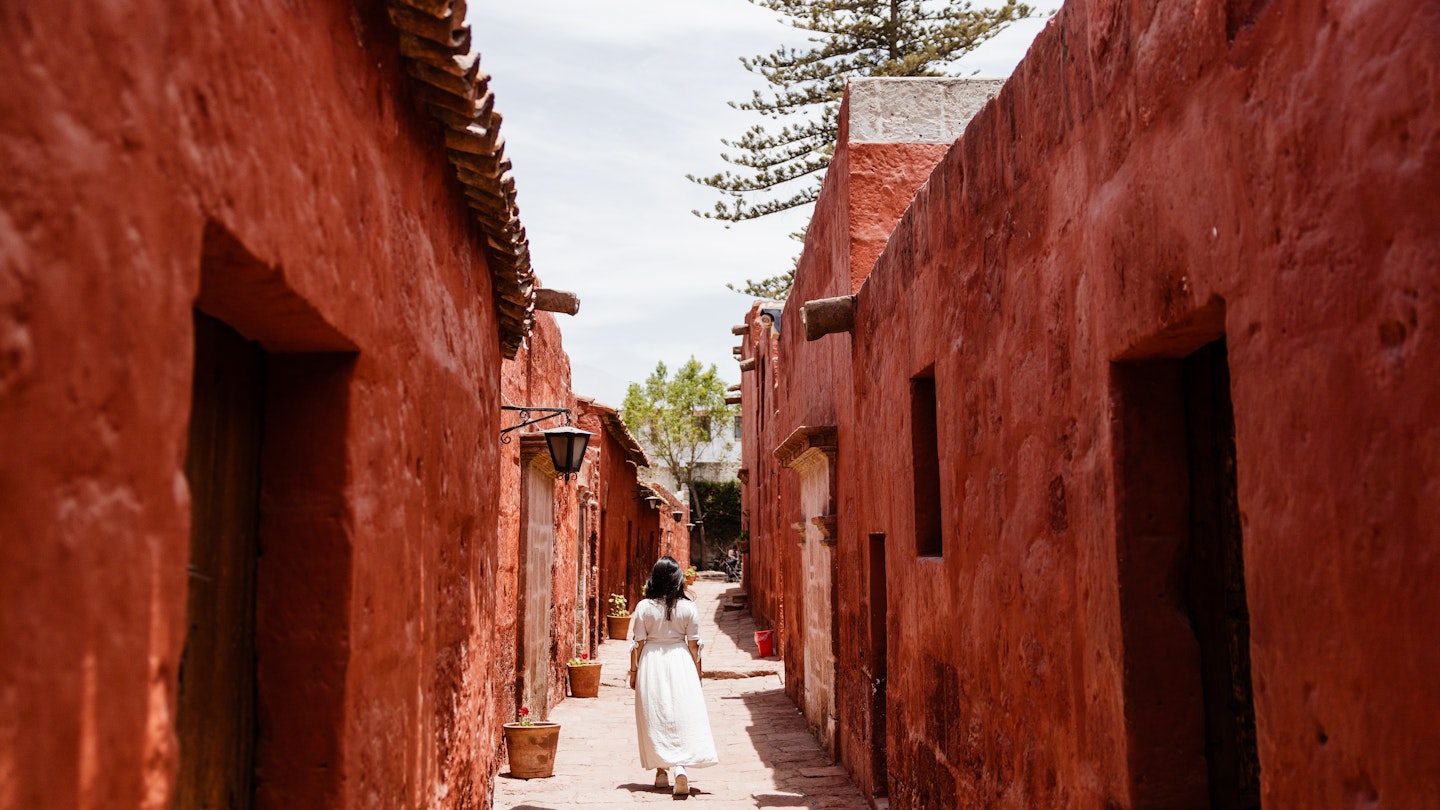
Not sure if you need a visa to visit Peru? We're here to help © Adriana Samanez / 500px / Getty Images
Home to one of the most-visited archaeological sites in the world, diverse ecosystems and a gastronomic scene that’s been booming for over a decade, it’s not difficult to come across a traveler with Peru on their bucket list — or one who has already crossed it off.
If you're one of the former, keep in mind that some prep work is involved. While many citizens of the world can visit the Andean nation without much more than an up-to-date passport, citizens of more than a few countries will require a visa to visit Peru.
To ease your mind and your travels, we’ve gathered some of the top questions regarding Peru visa requirements and visitor permits.
Who can visit Peru without a visa?
Travelers from North America , South America (with the exception of Venezuela), the European Union and Oceania can visit Peru visa-free, as can a few other select countries, including South Africa . Even quite a few citizens from South American countries can enter Peru just by showing their national identity documents.
Check this document from Peru’s Ministry of Foreign Affairs to see if you need a visa based on your nationality.
Even if you can enter Peru visa-free, visitors must have a valid passport for at least another six months upon arrival.
Every visitor to the country via the Jorge Chavez International Airport in Lima receives The Andean Migration Card (TAM). The card, which can be obtained in person or virtually, includes passport and ticket information, along with a fingerprint and photo.
TAM serves as a replacement for a passport stamp which, as of May 2023, travelers to Peru no longer receive.
Travelers are typically granted a 90-day permit in Peru, though that number can dip as low as 30 and reach a maximum of 183. It depends on the border official who receives you in migrations.
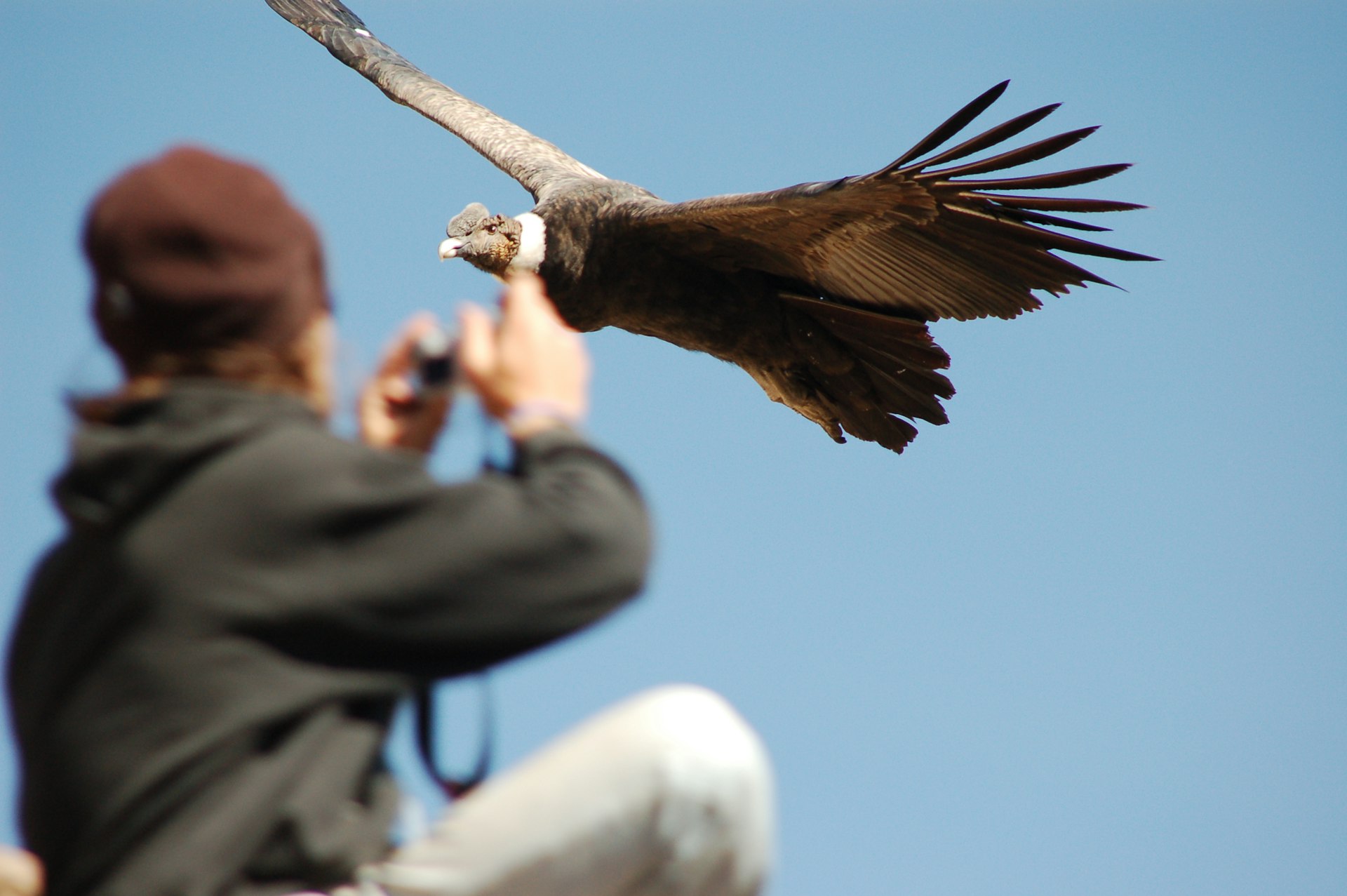
What happens if you overstay in Peru?
Since the country is packed with incredible places to visit in every region , visitors can easily find reasons to extend their vacation. But remember, there’s an S/4.40 per charge for every extra day over your tourist permit. The accrued debt must be paid in cash at the airport before departure.
Can you extend your stay in Peru?
Tourists can stay in Peru for a maximum of 183 days in one calendar year. For permits less than 183 days, you can visit an immigration office in any major Peruvian city to request an extension. The request must come before the visitor permit expires. Only tourist visas under 183 days will be considered.
How can I get a visa to visit Peru?
If you require a visa to visit Peru, you can apply for a Tourist Visa or a Business Visa. To apply, visit a Peruvian consulate or embassy in your country well in advance of your planned trip. Locate the nearest office here .
Both visa types cost about S/112. In general, tourist visa requirements include a passport with a 6-month validity minimum, a round-trip flight itinerary, hotel reservations and proof of financial solvency.
This article was first published August 2021 and updated December 2023
Explore related stories
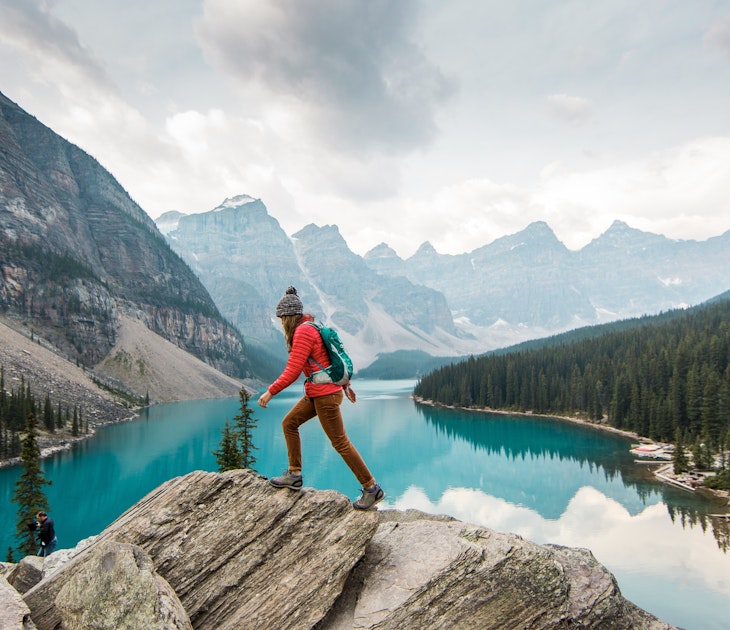
Destination Practicalities
Apr 11, 2024 • 6 min read
First-time visitors will benefit from these tips on planning, etiquette and health and safety as they plan their trips to Canada.

Mar 30, 2024 • 4 min read

Mar 26, 2024 • 6 min read

Mar 19, 2024 • 6 min read

Mar 10, 2024 • 5 min read

Mar 2, 2024 • 8 min read

Mar 1, 2024 • 9 min read

Feb 29, 2024 • 9 min read

Feb 27, 2024 • 6 min read

Feb 20, 2024 • 17 min read
Peru Tourist Visa
- Table of contents
Traveling to Peru
Who needs a peru visa, peru tourist visa validity, application form, personal photos, airline ticket, accommodation or invitation, financial proof, consular fee, peru visa application steps, peru tourist visa fees, where to apply, peru tourist visa processing time, approved visa applications, peru tourist visa faq.
Peru is a South American country that attracts millions of tourists each year for its captivating nature, culture, history, and archeological sites. Almost 100 countries can travel to Peru for tourism activities and stay in Peru for up to 183 days within a one-year period.
Foreign nationals from the following countries must apply for a Peru tourist visa, before traveling to Peru:
Afghanistan, Albania, Algeria, Angola, Armenia, Azerbaijan, Bahrain, Bangladesh, Barbados, Belarus, Benin, Bhutan, Bosnia and Herzegovina, Botswana, Burkina Faso, Burundi, Cambodia, Cameroon, Cape Verde, Central African Republic, Chad, China, Comoros, Congo, Democratic Republic of Congo, Cote D’Ivoire, Cuba, Djibouti, Egypt, El Salvador, Equatorial Guinea, Eritrea, Estonia, Eswatini, Ethiopia, Gabon, Gambia, Georgia, Ghana, Guinea, Guinea Bissau, Haiti, India, Iraq, Iran, Jordan, Kazakhstan, Kenya, Kosovo, Kyrgyzstan, Kuwait, Laos, Lebanon, Lesotho, Liberia, Libya, Madagascar, Malawi, Maldives, Mali, Mauritania, Mauritius, Mexico, Morocco, Mozambique, Myanmar, Namibia, Nepal, Nicaragua, Niger, Nigeria, North Korea, Oman, Pakistan, Palestinian State, Qatar, Rwanda, Sao Tome and Principe, Saudi Arabia, Senegal, Seychelles, Sierra Leone, Somalia, Sri Lanka, Republic of Sudan, Republic of South Sudan, Syria, Tajikistan, Tanzania, Timor Leste, Togo, Tunisia, Turkmenistan, Uganda, Uruguay, Uzbekistan, Venezuela, Vietnam, Yemen, Zambia, and Zimbabwe.
The Peru tourist visa is usually multiple entry, allowing for a maximum 183-day stay within a one-year period. Peru tourist visas not used within the 6-month validity period will be deemed null and void.
Peru Tourist Visa Requirements
Foreign nationals applying for a Peru tourist visa should meet the following requirements:
A machine-readable passport valid for at least 6 months from the date of entry into Peru.
A filled out and signed Peru visa application form.
One recent, standard photo on a white background
An airline ticket showing proof of exit from Peru for another destination
Hotel reservations or proof of lodging during stay in Peru, or an invitation from a Peruvian host
Applicants should provide proof of financial means, e.g. bank statements.
A consular fee payment for the Peru foreign mission where the application is being made.
Please note that certain applicants may be required to provide additional information than those listed above.
Foreign nationals applying for a Peru tourist visa should follow these steps:
Fill out a Peru visa application form, complete with your personal details and other requested information.
• Set an appointment at your nearest Peru embassy, consulate or representation office. • Submit the Peru visa application form and all required documents at your nearest Peru embassy, consulate, or foreign mission abroad. • Attend a personal interview, if required. • Pay the Peru visa application fees.
• Collect approved Peru visa from the Peru embassy, consulate, or representation office where you applied. • Make sure all information on the visa is correct and matches your passport.
Please note that the Peru embassy or foreign office where you are applying may require you to attend a personal interview during the Peru tourist visa application process.
The cost of a Peru tourist visa varies depending on your nationality and the location where you are applying. It is advisable for applicants to contact their nearest Peruvian embassy or consulate to inquire about the specific visa application conditions.
Foreign nationals applying for a Peru tourist visa should visit their nearest Peru embassy, consulate, or foreign mission abroad.
Peru visas are usually processed within 5 to10 business days, but processing times may vary, depending on the Peru foreign office where you are applying. Applicants are advised to apply as early as possible, in case of delays or unforeseen circumstances.
Approved Peru tourist visas can be collected from the Peru embassy, consulate, or foreign office where you applied.
Foreign nationals from almost 100 countries can travel to Peru visa-free for tourism purposes, namely: Andorra, Antigua & Barbuda, Argentina, Australia, Austria, Bahamas, Barbados, Belarus, Belgium, Belize, Bolivia, Brazil, Brunei Darussalam, Bulgaria, Canada, Chile, Columbia, Cook Islands, Costa Rica, Croatia, Cyprus, Czech Republic, Denmark, Dominica, Dominican Republic, Ecuador, Estonia, Grenada, Fiji, Finland, France, Germany, Greece, Guatemala, Guyana, Holy See, Hong Kong, Hungary, Iceland, Indonesia, Ireland, Israel, Italy, Jamaica, Japan, Kiribati, Latvia, Liechtenstein, Lithuania, Luxemburg, Macedonia, Malaysia, Malta, Marshall Islands, Mexico, Micronesia, Moldova, Monaco, Montenegro, Netherlands, Nauru, New Zealand, Niue, Norway, Palau, Panama, Papua New Guinea, Paraguay, Philippines, Poland, Portugal, Russia, Romania, Saint Kitts and Nevis, Saint Lucia, Saint Vincent and Grenadines, Samoa, San Marino, Serbia, Singapore, Slovenia, Slovak Republic, Solomon Islands, South Africa, Spain, Suriname, Sweden, Switzerland, Taiwan, Thailand, Tonga, Trinidad and Tobago, Turkey, Tuvalu & Vanuatu, Ukraine, United Kingdom, United States of America, and Uruguay. Chinese and Indian Nationals can travel to Peru visa-free, provided they hold a US, Canada, UK, Australia, or Schengen visa or residence card, valid for 6 months from the date of entry into Peru.
The Peru tourist visa costs depend on your nationality and the Peru foreign office from where you are applying. You are advised to check with the Peru embassy or representation office nearest you for their particular Peru visa application procedures and conditions.
Peru does not issue visas-on-arrival or transit visas.
Check if you need a visa for your next destination
Latest news and articles.

Greece unveils visa-on-arrival program for Turkish tourists to 10 islands

Ireland imposes visa requirements on citizens of Dominica, Vanuatu, and Honduras

The essential traveler's guide to understanding various types of visas
Cookies on GOV.UK
We use some essential cookies to make this website work.
We’d like to set additional cookies to understand how you use GOV.UK, remember your settings and improve government services.
We also use cookies set by other sites to help us deliver content from their services.
You have accepted additional cookies. You can change your cookie settings at any time.
You have rejected additional cookies. You can change your cookie settings at any time.
- Passports, travel and living abroad
- Travel abroad
- Foreign travel advice
Entry requirements
This advice reflects the UK government’s understanding of current rules for people travelling on a full ‘British citizen’ passport from the UK, for the most common types of travel.
The authorities in Peru set and enforce entry rules. If you are not sure how these requirements apply to you, contact the Peruvian Consulate General in the UK .
COVID-19 rules
There are no COVID-19 testing or vaccination requirements for travellers entering Peru.
Passport validity requirements
To enter Peru, your passport must have an ‘expiry date’ at least 6 months after the date you arrive.
Check with your travel provider that your passport and other travel documents meet requirements. Renew your passport if you need to.
You will be denied entry if you do not have a valid travel document or try to use a passport that has been reported lost or stolen.
Visa requirements
You do not need a visa to travel to Peru for tourism or short visits. If you are travelling for any other reason, check requirements with the Peruvian Consulate General in the UK .
You are normally given permission to stay for up to 30 days when you arrive. If you need to stay longer, you must apply for permission on arrival. Immigration officials can grant you up to 180 days a year as a visitor or tourist.
If you overstay, you will need to pay a fine or you could be detained.
Arriving at an international airport
If you arrive in Peru at an international airport your entry will be registered digitally through a Tarjeta Andina de Migración (TAM) - a virtual immigration control document.
You can check the number of days you have been granted to stay legally in Peru on the Superintendencia Nacional de Migraciones website (in Spanish).
Arriving by land
Land entry: make sure you get your passport stamped.
If you enter Peru overland from any neighbouring country, go to the immigration checkpoint and get your passport stamped. If you do not get an entry stamp, you will not be allowed to leave Peru until you get a new entry stamp. If you do not get one, you will need to:
- complete the online application form (form in Spanish)
- provide your passport details
- provide evidence of your entry to Peru, such as a bus ticket in your name
- show an exit stamp from the last country you visited
The British Embassy can help you to apply for a new entry stamp. You should start this process as soon as possible.
If you cannot provide the information needed, you must apply for an exit order or expulsion order to leave Peru in person at the Immigration Office in Lima . These orders may stop you from re-entering Peru for a number of years. The British Embassy cannot intervene in these decisions, but can help you with the exit procedure.
If your passport has been lost or stolen and you plan to travel internally, contact your travel agency, airline or bus company to check their requirements. Some airlines and bus companies will not allow you to travel internally carrying a police report only. You may need a new passport or an emergency travel document .
Processing at the Peru-Chile border
Clashes between the police and migrants on the border between Peru and Chile in April and early May 2023 have led to delays in processing at this border crossing. See regional risks .
Vaccine requirements
At least 8 weeks before your trip, check the vaccinations and certificates you need in TravelHealthPro’s Peru guide .
Travelling with children
Children aged 17 and under who are travelling on a British passport and have Peruvian resident status need written permission (‘Autorización de Viaje Notarial’) from the non-accompanying parent or parents to leave Peru.
You must get permission in a letter signed by a public notary in Peru. The letter must include:
- proposed destination
- purpose of the trip
- departure date
- return date
If you’re unable to get notarial permission, you’ll need to get judicial written permission (‘Autorización de Viaje Judicial’) from a judge. If one parent has committed certain crimes, the other can request a judicial written permission. If one parent is deceased, the other will need to submit the death certificate to a notary public, so that an indefinite notarial permit to travel with the child is issued.
These requirements do not normally apply to children with tourist status, but immigration officers may ask for them in circumstances considered suspicious, or if the child has overstayed in Peru.
For further information, contact the Peruvian Consulate General in the UK (in Spanish) or the Peruvian Immigration Department (in Spanish).
Customs rules
There are strict rules about goods you can take into or out of Peru . You must declare anything that may be prohibited or subject to tax or duty.
You can bring one laptop and 2 mobile phones into Peru without paying tax.
When you leave Peru, you may be stopped and prosecuted if you are carrying:
- products made from wild animal skins
- crafts made with preserved butterflies, spiders, starfish, sea horses or other fish or insects
- crafts and jewellery made with condor or other wild bird feathers, turtle shells, teeth, bones and other animal parts
The sale of souvenirs made with wild animal parts, including condor feathers, is illegal in Peru. These products are often sold in tourist markets in Cusco and Iquitos.
You’re not allowed to remove any archaeological artefacts from Peru without authorisation.
Related content
Is this page useful.
- Yes this page is useful
- No this page is not useful
Help us improve GOV.UK
Don’t include personal or financial information like your National Insurance number or credit card details.
To help us improve GOV.UK, we’d like to know more about your visit today. We’ll send you a link to a feedback form. It will take only 2 minutes to fill in. Don’t worry we won’t send you spam or share your email address with anyone.
Your client portal login provides access to your organization’s preferred pricing and customized features
- About Us CIBTvisas Global Offices Immigration Services CIBTvisas Global Leadership CIBTvisas Careers Contact CIBTvisas In The News
- Travel Visas Do I Need a Visa? Expedited Visa Solutions Travel Visa FAQs Corporate Travel Solutions
- Passports Same Day Passport Passport Renewal First-Time Passport Lost or Stolen Passport Child Passport Name Change Second Passport Passport FAQs
- Document Services
- Resources CIBTvisas Travel Blog Destination Entry Requirements Podcast ETIAS White Papers Research
- Services Global Immigration Services US Immigration CIBTvisas Service Directory Learn More About Our Services Corporations Cruise Lines Tour Operators Onsite Services All Partner Solutions Learn More About Our Client Solutions
- Your Order Check Order Status View Invoice Upload Documents
Get a Peru Visa
- When is the best time to apply for my Peru visa? The best time to apply for your Peru visa is 1-2 months before your travel date.
- Do I have to send you my passport to get a Peru visa? Is it safe to send a passport? You will need to send your actual passport, not a copy of it. The Peru visa is stamped on your passport and will become one of your passport pages. Visa requests cannot be processed without your original passport. Because of the importance of your passport, we strongly suggest that you send your application and passport to CIBTvisas in a secure way, using a traceable courier such as FedEx, UPS, Express Mail or Certified Mail.
Business Visa Application Requirements for a Peru Visa
- Be valid for at least six months on entry
Photographs
You must provide two color, passport-type photographs that meets the following criteria: Be taken within the last three months and printed on high-quality photo paper Be taken against an all white background Be two inches by two inches Provide the full frontal view of your head with your face centered in the middle and displaying a neutral (non-smiling) expression You may wear neither eyeglasses nor headwear except for religious purposes Your photos should not be affixed to your application and it may not display evidence of adhesive tape or staples
Business Cover Letter
You are required to provide a Business Cover Letter from your U.S.-based company. All letters must be printed on company letterhead that displays a U.S. mailing address. Use the included sample Business Cover Letter to complete your letter.
Letter of Invitation
You must obtain a letter of invitation from the sponoring organization or business in Peru. The letter must:
- Be written on a company letterhead
- Be written in Spanish
- Include the full local address and phone number of the organization or business to be visited
- Request the same visa validity as in the Business Introduction Letter
- Specify the number of entries you are requesting for your visa
- Include your name as it appears on your passport
Visa Application Form
You must provide one fully completed copy of the visa application form found in this kit. The application form must: Include answers for all fields Include right hand index finger print at the designated place on the visa application Display your full name as it appears in your passport Be signed
Proof of Travel Arrangements
You must provide proof of travel arrangements for the duration of your trip. Details of your intended arrangements must: Include a copy of an itinerary or e-ticket that displays your round trip travel and entry and exit dates for your destination Show the traveler's full name (as printed in his or her passport)
CIBTvisas Order Form
Provide the CIBTvisas Order Form included in this kit.
Proof of Sufficient Funds
You must provide proof that you possess sufficient funds. Your financial details must: Include a copy of your most recent bank statement Display your full name
Urgent Applications
If you have an urgent visa application that carries a tight deadline, CIBTvisas can help you to save valuable time and avoid expensive delays. A CIBTvisas expert will review all of your documents to certify your application is accurate, complete and ready for submission. We will contact you personally to quickly handle any mistakes ensuring your application is submitted correctly. Visit https://cibtvisas.com/visa-pre-check-service to learn more about this service.
Tourist Application Requirements for a Peru Visa
Visa Exempt
- Hold a passport valid at least six months on entry with one blank visa page
- Hold proof of onward/return flights
- Hold proof of sufficient funds relative to your intended length of stay
- Hold documents showing proof of purpose of trip
- Hold all documents required for the next destination
- Confirm with your airline that boarding will be permitted without a visa
Visa Pre-Check
Have an urgent visa application that carries a tight deadline? CIBTvisas can help you to save valuable time and avoid expensive delays. A CIBTvisas expert will review all of your documents to confirm your application is accurate, complete and ready for submission. We will contact you personally to quickly handle any mistakes ensuring your application is submitted correctly.
Fast Track Your Visa
Need your visa processed quickly? CIBTvisas can fast track your order and process it in the fewest days possible.
View A Sample Visa
Don't know what a visa for your destination looks like?
You can view a sample visa for your country of destination and see the information it contains.
About CIBTvisas
- Travel Visas
CIBT Around the World
- netherlands
- switzerland
- United Kingdom
- United States
Top Destinations
- Vietnam Visa
- Brazil Visa
- Australia Visa
- Indonesia Visa
- Saudi Arabia Visa
- 800-929-2428
- Learn More About Our Client Solutions
- Privacy Policy
- Terms & Conditions
- Copyright 2024
- Privacy Shield Compliant
- TRAC Certified
- As Seen in The New York Times
- Skip to main content
Additional menu
The Visa Project
A place for your visa experiences and more
A Final Guide to Peru Visa Application, Fees, Overstay, Extension and Types
Right after Brazil and Argentina, Peru is the biggest country in South America. While Machu Pichu is probably the most well-known destination for people travelling to Peru, Peru is so much more than Machu Pichu. The floating islands of Puno, UNESCO world heritage city of Cusco, Nazca lines, the Amazon rain forests, and the architectural wonders of Incas are only a few of them.
If you are visiting Peru or planning to work or retire in Peru, you must accustom yourself with the Peru visa application process.
In this article, we will cover who needs a visa for Peru, the visa types, extension of Peru visa, overstay and all other relevant details.
Table of Contents
Do You Need a Visa to Travel to Peru?
As a country that’s hugely popular with backpackers, this is a question that gets asked a lot of times: do I need a visa to visit Peru or not. Citizens of many countries can enter Peru visa-free, by receiving a Peru TAM card at Peruvian immigration and an entry stamp. However, citizens of many countries need to apply for a tourist visa for Peru in a Peruvian embassy.
As per, Peru visa policy, here are the countries that need a visa can enter Peru visa-free. If your country is not listed, then you need a visa to enter Peru.
Who Can Enter Peru with an ID Card and no Passport?
Citizens of Mercosur countries can enter Peru with an ID card.
Peru Visa-free with Green Card or Visas or Residency from Third Countries
Citizens of India and China can enter Peru visa-free for a maximum of 180 days during a six-month period if they hold
- a valid green card or permanent residence permit from the US.
- a valid permanent residence permit issued by Australia, Canada, United Kingdom, or a Schengen member.
- a visa with a validity of minimum six months from Unites States of America, Canada, United Kingdom, Australia, or any Schengen country.
Peru Visa Sample : What Does Peru Visa Look like?

Peru Visa Types
Peru visas can be either temporary visas or resident visas.
Temporary Visas
1. peru vistor visa.
Citizens of countries who want to visit Peru for tourism, sightseeing etc, can apply for a Peru tourist visa through an embassy of Peru, if they belong a country whose citizens need a visa for Peru.
- Personal experience of getting Peru visa as Indian citizen in Bolivia .
2. Peru Business Visa
Foreign nationals who want to conduct business in Peru should apply Peru business visa, unless the country of origin of the citizen has an agreement with the Peruvian government to allow travel to Peru without a business visa for this purpose.
Here are the countries whose citizens don’t need a business visa for Peru to conduct business in Peru.
Brazil, Canada, Chile, Mexico
Austria, Belgium, Bulgaria, Czech Republic, Croatia, Cyprus, Denmark, Estonia, Finland, France, Germany, Greece, Hungary, Iceland, Italy, Latvia, Lithuania, Liechtenstein, Luxemburg, Malta, Netherlands, Norway, Poland, Portugal, Romania, Slovenia, Slovakia, Spain, Sweden, Switzerland
Indonesia, Japan, Malaysia, Singapore, South Korea, Thailand
3. Peru Student Visa
Foreign nationals wanting to study in Peru or doing an internship, can apply for a Peru student visa through an university or institution recognized by DIGEMIN (General Directorate of Migrations and Naturalization).
4. Artist Visas for Peru
Foreigners who carry out artistic, cultural, sports, or other similar activities can apply for a Peru artist visa to come and perform in Peru. In case a foreigner carries out any such activities without possessing the artist visa for Peru, he/she will be penalized.
5. Peru Religious Visa
Priests or missionaries who want to stay in Peru to perform missionary or religious work can apply for a Peru religious visa. This has to be authorized from the General Directorate of Migrations and Naturalization – DIGEMIN, after which it can be issued from the Peruvian embassy where you are applying for the visa.
6. Peru Visa for Journalists
This type of visa is issued to who wish to work as a film producer, journalist or reporters in Peru. EU citizens of the following countries don’t need a journalist visa for Peru, although they still need to apply for the authorization for bringing equipment into Peru.
7. Diplomatic Visas for Peru
Foreign diplomats who will be staying in Peru on official missions, can obtain a diplomatic visa.
Resident Visas
1. peru work visa.
For foreigners wanting to work in Peru legally, General Directorate of Immigration and Naturalization (DIGEMIN) issues the Peru work visa. The employment contract for your job would have to be for at least one year for this.
2. Peru Professional Worker Visa
Foreigners can apply for a visa for independent professionals or Peru professional visa, to work as a freelancer while living in Peru. This gives you the right to work in Peru as a freelancer, while not being employed under a contract.
3. Peru Investor Visa
Foreign investors who can invest $ 30,000 dollars in an existing Peruvian company or establish a company in Peru themselves with a capital exceeding $30,000 can apply for a Peru investor visa. An investor visa for Peru is valid for one year, and can be extended further. It doesn’t give you the right to work in Peru.
4. Peru Family Resident Visa
Peru family resident visa can be issued to foreigners who are related to a Peruvian citizen by birth or marriage or adoption. It can be issued to foreign nationals who are
- married to a Peruvian citizen.
- married to a foreigner who has a resident visa for Peru.
- minor children of a Peruvian or resident foreigner.
- parents of a Peruvian citizen or resident foreigner.
5. Peru Retirement Visa
Foreign nationals who can prove a minimum monthly income of $ 1000 dollars, can apply for a Peruvian retirement visa. Working is prohibited if you have this visa.
Peru Visa Application Process
Many people wonder if they can apply for Peru visa online. However Peru visa application process is not online yet. Here is the step-by-step process to apply Peru visa.
1. Choose the Peru visa type as per your purpose
Make sure that you are choosing the right type of visa when applying for a Peru visa. As the requirements are different for every visa, it’s important to decide on the purpose of your presence in Peru and apply for the requisite visa.
2. Find out the nearest Peruvian Embassy in Your Country
Is there a Peruvian embassy in your country? Peru has many embassies worldwide. Check if there is a Peruvian embassy from where you are applying the visa, here .
You can call or email them to ask about the visa you are applying for and the timings before proceeding with the visa application for Peru.
3. Come up with the Documents Required for Peru Visa
The list of documents for a Peru visa will vary a little from one country to another. Make sure to contact the embassy of Peru in this regard. You might also need to provide some documents that are translated to Spanish depending on your visa type and the embassy instructions.
4. Submit the Documents and Application at Peru Embassy
Once you have the required documents, you can submit them at the embassy of Peru along with your Peru visa application form and other documents.
5. Attend the Interview
Although not always, some embassies might ask you to come down for an interview when you apply visa for Peru. This might happen when you submit the documents. During the interview, a consular officer, who would ask you some questions about your intended trip, employment, and other details.
6. Pay the Peru Visa Fees
Once your interview is done, you would be required to pay the Peru visa fees. It’s very common for Peruvian embassies to ask you to pay only when the visa is approved so that you don’t lose your money. The payment can be done directly in the embassy or in a bank account of the embassy, depending on the country it’s in.
7. Receive the Peru Visa Stamp
You will receive the Peru visa sticker in your passport from the embassy once you have paid the visa fees and it’s approved.
Peru Visa Requirements
The visa requirements for Peru will vary depending on the country you are applying from, your employment status, the purpose of your visa and many other factors.
Here are the general requirements for Peru Visa.
- Peru Visa Application Form DGC 005 visa application forms duly filled and signed. You can download it from the website of the Peruvian embassy or you can get it from the embassy in person.
- Peru Visa Photo Requirements Recent passport-size color pics (4.3 X 3.5 cm) with white background. The face size should cover between 70% – 80% of the photograph.
- A Valid Passport Passport with a minimum validity of six months after expected date of arrival to Peru.
- Travel Itinerary for Visa Roundtrip flight tickets or reservations from the country you are applying from.
- Proof of Accommodation for Visa You must show proof of hotel or hostel reservations in Peru, or proof of a tour package that you have bought.
- Financial Solvency Personal Bank Statement of the applicant for the last 3 months, credit card statements to prove that you can sponsor your trip. Your balance must be more than $1500 for the last 3 months.
If Employed
- Salary slips, for the last six months.
- No-objection letter written and signed by your employer. The letter must have information on the purpose of your trip, the time you have been working with them, the period of your stay in the letterhead of the employer. Please make sure that the letter includes your passport number.
- The most recent income tax return.
If a Student
- A letter from your school confirming your studies.
If your trip is sponsored
- Letter of guarantee from your Sponsor in Peru attesting that he or she will be responsible to bear some or all costs of boarding and lodging of the applicant, or repatriation if needed.
- A valid Id- Peruvian DNI, Passport or any other valid national identification document belonging to the Sponsor.
- Proof of financial solvency of the sponsor- bank statements, fixed deposit.
Peru Visa Fees
The visa fees for Peru are one of the lowest all over the world.
Peru Visa Processing Time
The usual Peru tourist visa processing time is 4-5 business days although depending on your application type, it can go up to 10 business days. And if you are applying from a country that you are not a citizen or permanent resident of, it might be even longer.
Some other visas that need prior authroization from the DIGEMIN of Peru (General Directorate of Migrations and Naturalization), might take 30 business days or more.
What is Tarjeta Andina Peru or Peru TAM?
When entering Peru, you will receive the Peru TAM or Tarjeta Andina Peru. It’s nothing but an entry/exit card with an entry stamp. Make sure to keep it safe and present it when you leave Peru.
Peru Visa Extension
There are two ways to extend Peru visa stay for tourism if you entered Peru with just a Peru TAM/ entry stamp, and without a sticker visa. Peru tourist stay can be extended for up to 90 days and up to the maximum allowed 183 days within a 365 days period.
1. Extend Peru visa online
Extending the Peru visa online is easier and faster. You can pay the extension fees online and upload the documents needed for the extension in the official website of Peru immigration. And then you would receive the email with the extension.
2. Extend Peru visa in an immigration office
Sometimes, the website to extend the Peru visa acts up or doesn’t accept your data. In these situations, you can extend the Peru visa by visiting a Peruvian immigration office and paying the fees at the bank. Also, EU citizens often face issues while extending the visa for Peru online, and can often do it successfully in the immigration office.
Peru Visa Overstay Fines
Peru is known to be liberal when it comes to visa overstay, unlike its neighbors such as Ecuador or Colombia. If you overstay your Peru visa you will be needed to pay a penalty of 0.1% of the Unidad Impositiva Tributaria (UIT). The UIT for 2020 is S/ 4,300, according to the official SUNAT website .
So for 2020, the daily overstay fine in Peru is S/ 4.30 or US$1.25 for each day you’ve overstayed. This must be paid in cash while exiting from Peru. Ensure that you have the right amount of money as you leave, or you could find yourself having problems.
You should avoid it by any means, but in most cases, don’t worry too much if you have.
Peru Visa for Indians: Do Indians Need a Visa for Peru?
Indian citizens need a visa for Peru, no matter what the purpose of their trip is. But if you possess a valid US Green card or permanent residence permit from Canada, Australia, Schengen countries, Singapore or a visa from these countries for 6 months validity, you can enter Peru visa-free.
Peruvian embassy in New Delhi, India caters to all visa applications from Indians as well as for citizens of Sri Lanka, Bangladesh and Maldives.
Do US Citizens Need a Visa for Peru
A tourist visa in not needed for US citizens travelling to Peru for sightseeing or vacationing. However, if the purpose of your travel is business or to study or anything other than tourism, then you need to apply for a visa for Peru before you travel.
Along with the Peruvian embassy in Washington DC, Peru has consulates and diplomatic representations in 13 locations such as San Fran Cisco, Atlanta, Chicago, Denver etc.
Does Peru need a Yellow Fever Certificate for Visa?
No, travellers don’t need to hold a valid yellow fever certificate when applying for Peru visa or when entering Peru.
Be part of the visa smart tribe
Up-to-date information on visas, and visa experiences from travelers, expats and immigrants.
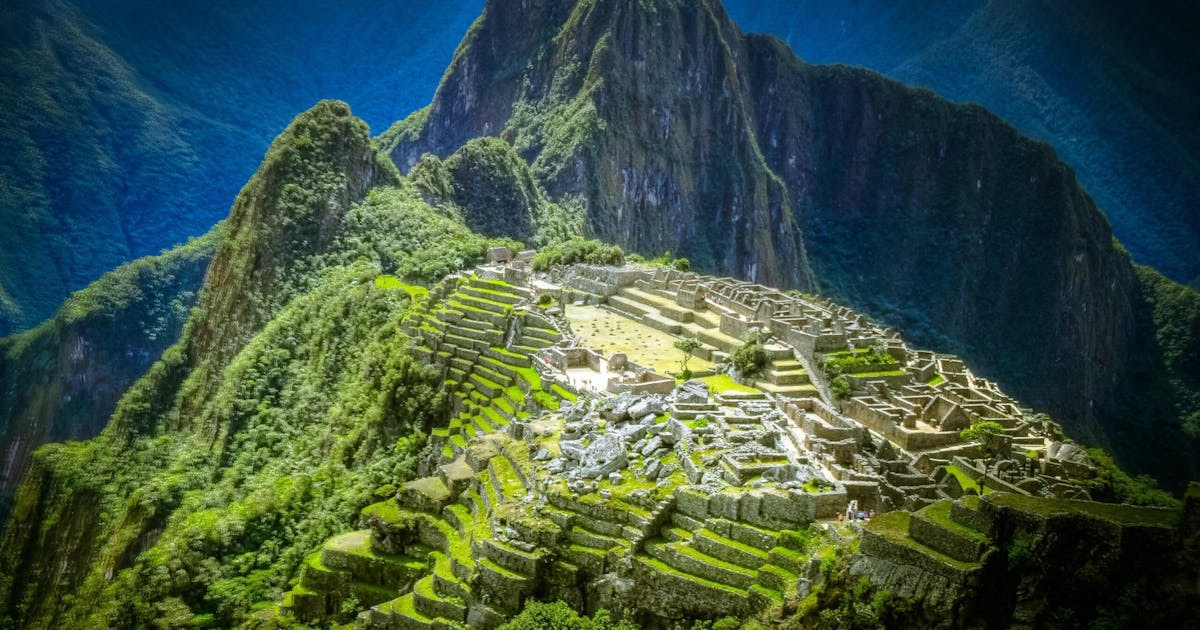
Peru Visa for US citiznes: Application and Requirements
Last Updated : 18 Apr 2024
Last Updated : 18 Apr 2024 at
30-Second Summary
US citizens traveling to Peru for the purpose of tourism do not need to apply for a Peru tourist visa.
US Green Card holders (depending on their nationality) must apply for a Peru visa to enter the country.
US Green Card holders can apply for the visa at the nearest Embassy or Consulate of Peru.
Once your visa gets approved, you'll receive a visa that is stamped directly on your passport.
Important Information
— Visa type
— Peru visa cost
— Peru visa processing time
— Peru visa validity
— Length of stay
Do US citizens need a visa for Peru?
No. US citizens do not need a Peru visa to enter the country as they currently enjoy visa-free access to the Republic of Peru. You are only eligible for visa-free travel if:
The stay does not exceed 183 days.
The visit is for tourism purposes only.
If you wish to travel for purposes other than tourism, it is mandatory to apply for a Peru visa for US citizens at the nearest Peru Embassy.
Can US citizens get a Peru Visa on Arrival?
No. US citizens cannot apply for a Peru Visa on Arrival. You must apply for a visa, if required, prior to your travel.
Can US citizens apply for a Peru visa online from the USA?
No. US citizens do not need a visa to enter Peru if the visit is for tourism purposes and the stay does not exceed 183 days. Otherwise, US citizens (including US Green Card holders) must apply for a visa at the nearest Embassy/Consulate of Peru before travel.
Do US Green Card holders need a Peru visa?
It depends on their nationality. US Green Card holders whose country of nationality is from non-visa-exempt countries must apply for a visa for Peru before traveling. You can easily apply at the nearest Peru Embassy.
Peru visa requirements for US Green Card holders
When applying for a Peru visa for US citizens, ensure you have the following documents:
Application form: You must submit the correctly filled-out Peru visa application form .
Passport: The passport must be valid for at least 6 months from arriving in Peru.
Passport-size photograph: One passport-size colored photograph with a white background.
Proof of residence: Demonstrate your legal and permanent residence in the United States by presenting a Valid Green Card.
Round trip ticket to Peru : It can be a ticket, an electronic ticket, or a reservation.
Hotel reservation: You must provide the details of your hotel reservation. Suppose you will stay at the home of a family member or friend. In that case, you must present the original copy of the Letter of Invitation (which must necessarily be legalized by the Ministry of Foreign Affairs of Peru).
Proof of financial solvency: You must present the last 3 months' original bank account statements.
Police Background Check: Make sure that it is issued in the jurisdiction of the Consulate where you are applying.
Proof of residence in the Consulate’s jurisdiction : It is to ensure that you only apply at the Consulate that overlooks your region. The proof can be a driver's license or ID, etc.
Peru visa fees for US Green Card holders
The Peru visa fee for US citizens is $ 30 . Note that the visa fees can be paid at most of the Embassies or Consulates in cash only.
Peru visa application process for US Green card holders
The entire Peru visa application process is offline. You must submit the required documents and visa fees in person at the nearest Peru Embassy .
Here’s how the process works:
Make an appointment: Contact your closest Embassy/Consulate to schedule an appointment with them. Click here to locate the nearest Peruvian Embassy/Consulate where you can apply.
Visa application form: Complete the visa form and gather all the required documents per the Peru visa requirements.
Attend the appointment: You must go to the appointed Peru Embassy/Consulate to submit documents and make the payment. Note that a personal interview will take place during the appointment. You must honestly and confidently answer the questions asked.
Submit documents: Submit your list of documents at the Embassy. Ensure your documents are correct and accurate before traveling to the Embassy.
Pay the Peru visa fee: After completing the process and submitting all the documents, you will be asked to pay the visa fee in cash at the designated counter.
Get the Peru visa: Once your visa is approved, collect the visa for Peru directly from the Embassy/Consulate.

Tips to apply
Be prepared for your Embassy visit by gathering all the valid documents before booking the appointment.
Make sure that the Police Background Check is issued at the station that falls under your Embassy’s jurisdiction.
Answer the question truthfully and clearly during the interview at the Embassy or Consulate.
Apply for the visa well before your intended travel date to allow ample time to rectify any issues and ensure you receive your visa on time.
Receive your approved Peru visa
Once you've submitted your visa application, it enters the processing phase. You will be notified by the Embassy or Consulate via text, mail, or call when your visa is approved. You can then collect the visa-affixed passport from the Embassy.
Peru visa information for US Green Card holders
How to check peru visa status.
You can only check your visa status by contacting the Peru Embassy or Consulate where you applied for the visa via mail or call. There is no online tracking system that allows you to track the status of your visa in real time.
Peru visa processing time
The general visa processing time for a Peru visa is 10 working days .
The visa processing time may vary depending on the Consulate or Embassy where you apply.
Peru visa validity & length of stay
A single-entry Peru visa for US citizens is valid for 183 days . The Peru Embassy or Consulate will determine your approved stay length, ranging from 30 to 183 days .
Our Commitment to Visa Accuracy
All the information in this blog is sourced from official government websites, ensuring reliability and accuracy. You can trust the content to be accurate, but remember to stay informed, as changes may happen without notice.
Website of the Peru Consulate General in Washington, D.C
USA Travel.State.Gov website
Government fees and processes can change over time. Atlys recommends double-checking the government website for the most current and up-to-date information before applying.
Frequently Asked Questions
Although US citizens enjoy visa-free entry to Peru, they must have the following:
A passport with six months validity is required to enter Peru.
Immigration authorities may also require evidence of return/onward travel.
Ensure the Immigration authorities officially document your date and place of entry, whether you arrive at a port, airport, or land border.
Visas in Under a Week
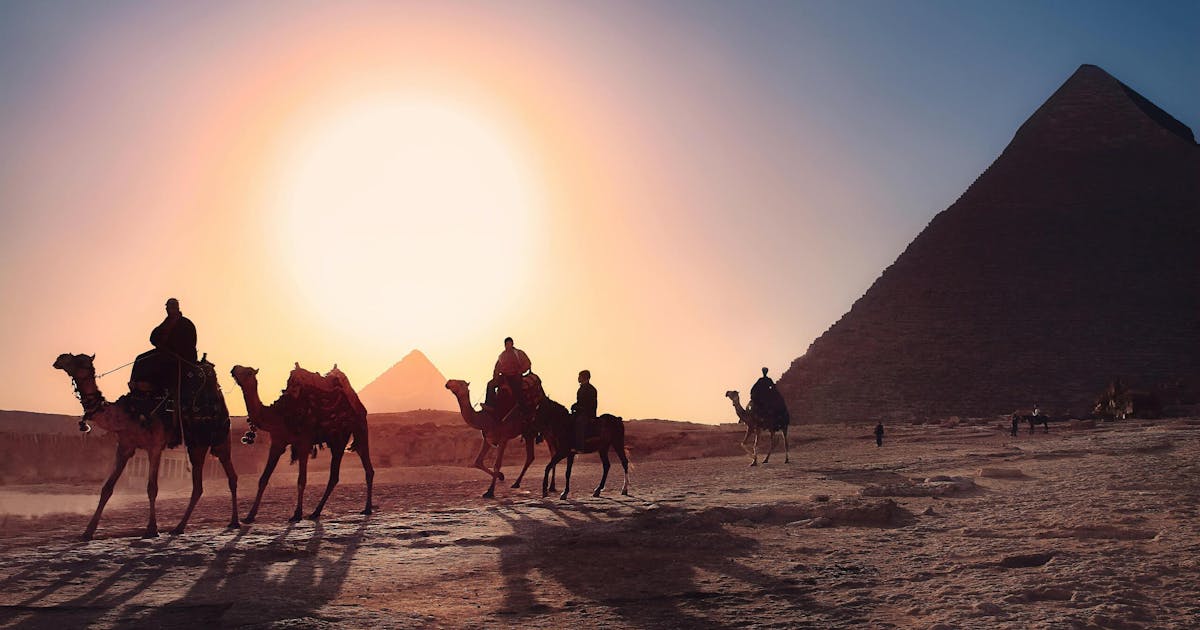
The complete guide for the Egypt visa from the US
Egypt visa for US citizens
In this blog, we'll cover everything US citizens must know about applying for an Egypt E Visa. We'll discuss the visa requirements, application process, processing times, and Egypt visa costs.
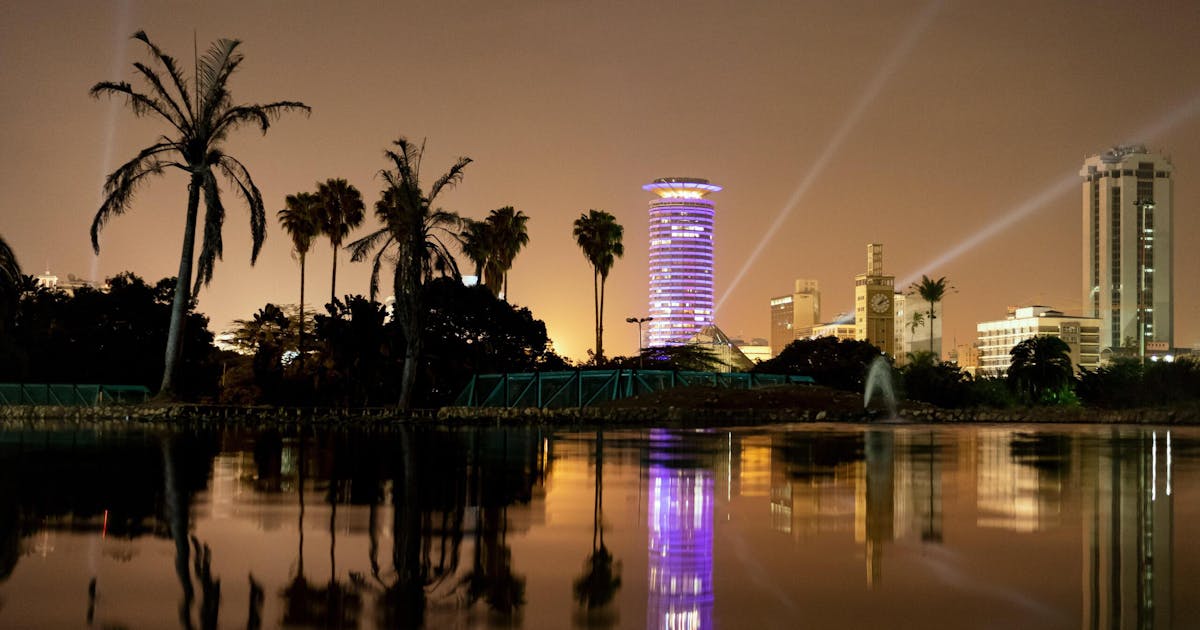
Kenya E-Visa Payment Issues And Solutions
Kenya E Visa Payment Issues
Tips for what to do when you experience issues with your Kenya e-Visa payment process.
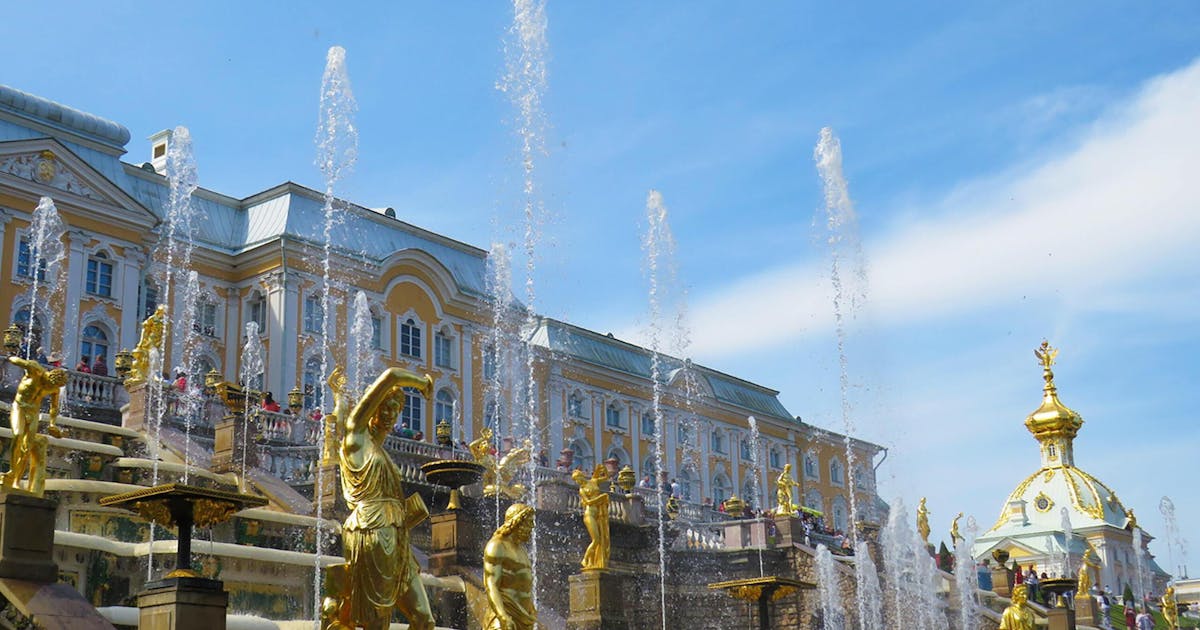
Get a Russian Visa for US Citizens Now - A Guide on How to Apply
Russian tourist visa
Optimise your travel experience! Get your Russian visa for US citizens easily with this helpful guide. The post includes the application process and requirements.
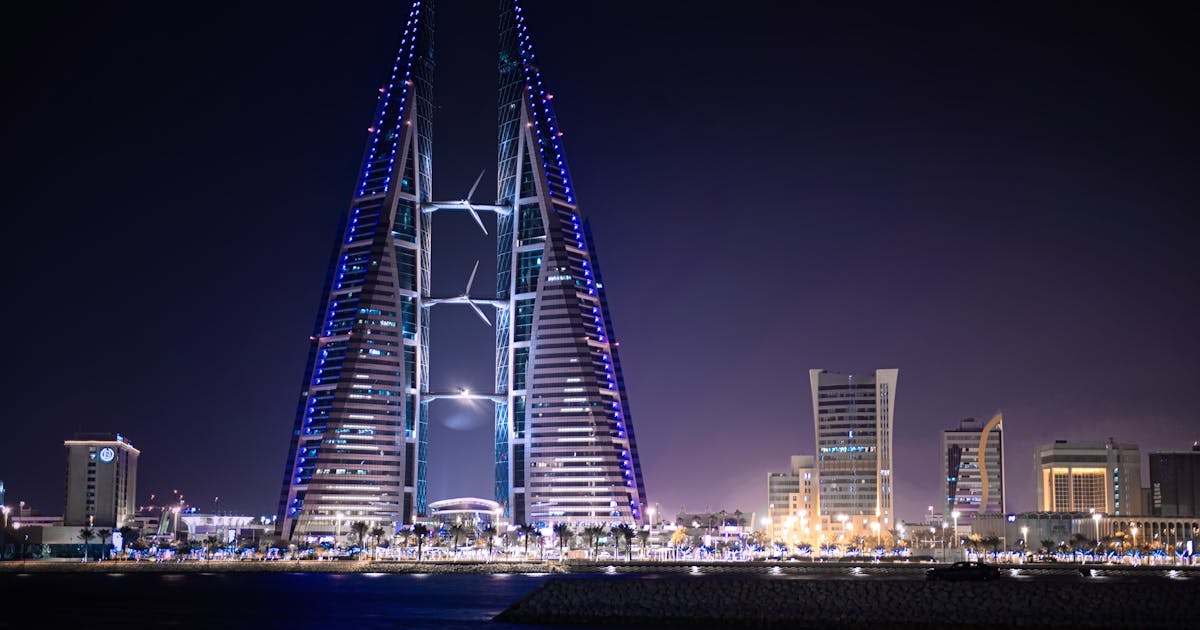
Apply for a Bahrain Visa from the US - Bahrain E-Visa Application Process
Bahrain visa for US citizens
Need a Bahrain visa? You're in luck! This post covers everything you need to know about the Bahrain e-visa including the application process and requirements.
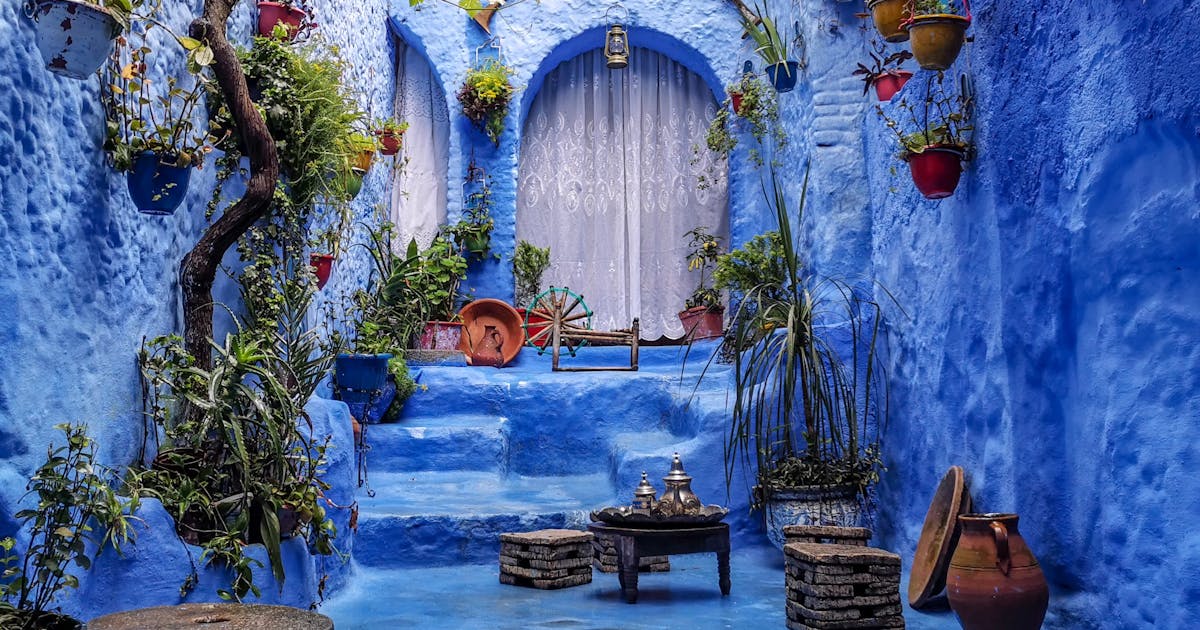
Morocco e-visa: Requirements and Application 2024
Morocco e-visa
US citizens can travel visa-free to Morroco. Discover the Morocco e-visa for US Green card holders. How to apply, eligibility, requirements, and the e-visa fee.
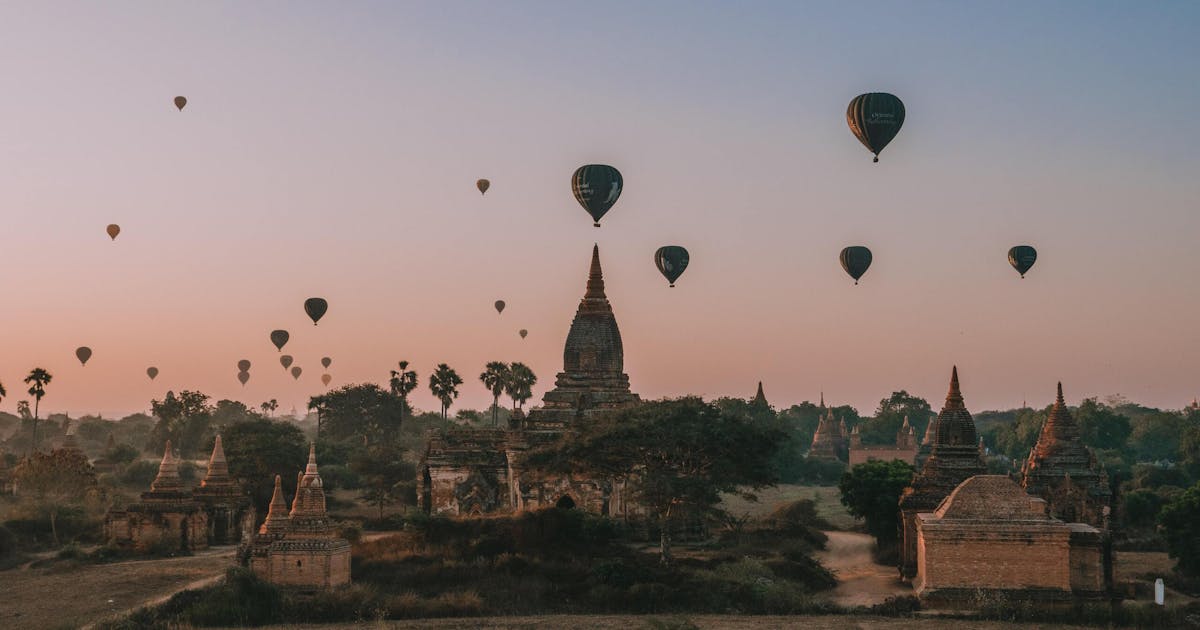
Myanmar e-visa— Application and requirements 2024
Myanmar visa for US citizens
US citizens must apply for a Myanmar Visa. You can apply for an e-visa that allows a stay of up to 28 days. Click to learn the most important visa requirements!
Instant Visas
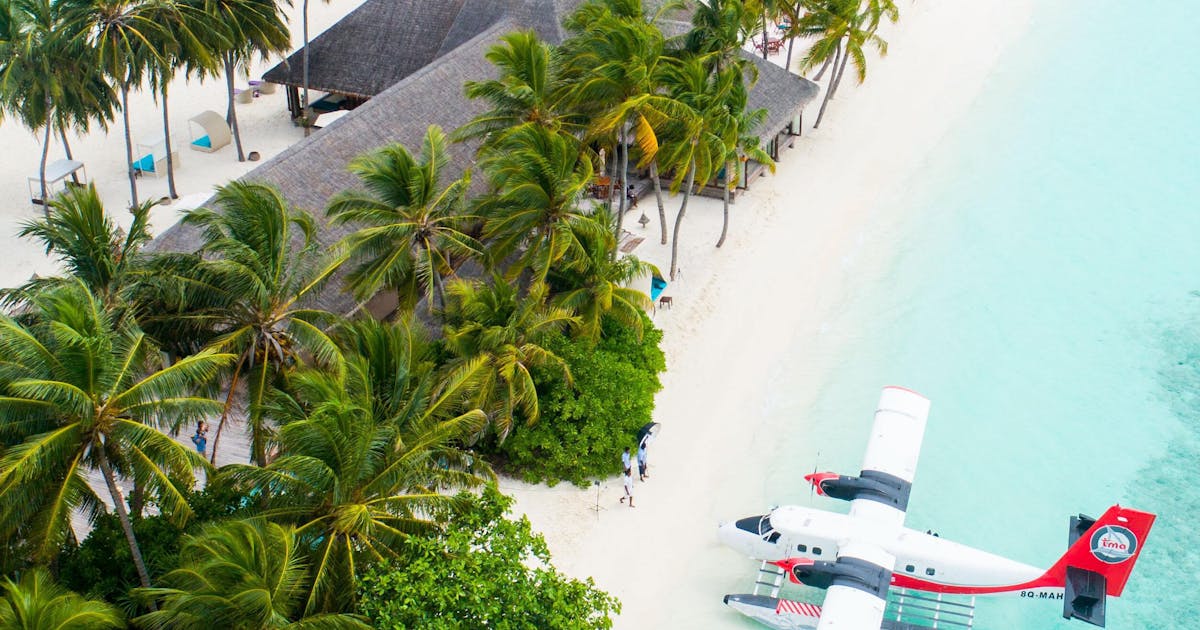
Maldives Tourist Visa: Entry and Visa Requirements to Maldives
Maldives Tourist Visa
In this post you'll learn everything you need to about the Maldives Tourist visa. Including the requirements, costs and other types of Maldives Visas you can apply for.

St Lucia Visa | US Citizens and US Green Card Holders
Travel To St Lucia
Discover the process of obtaining a St Lucia visa for US Green Card Holders. Learn entry requirements, application steps, fees, and visa validity.
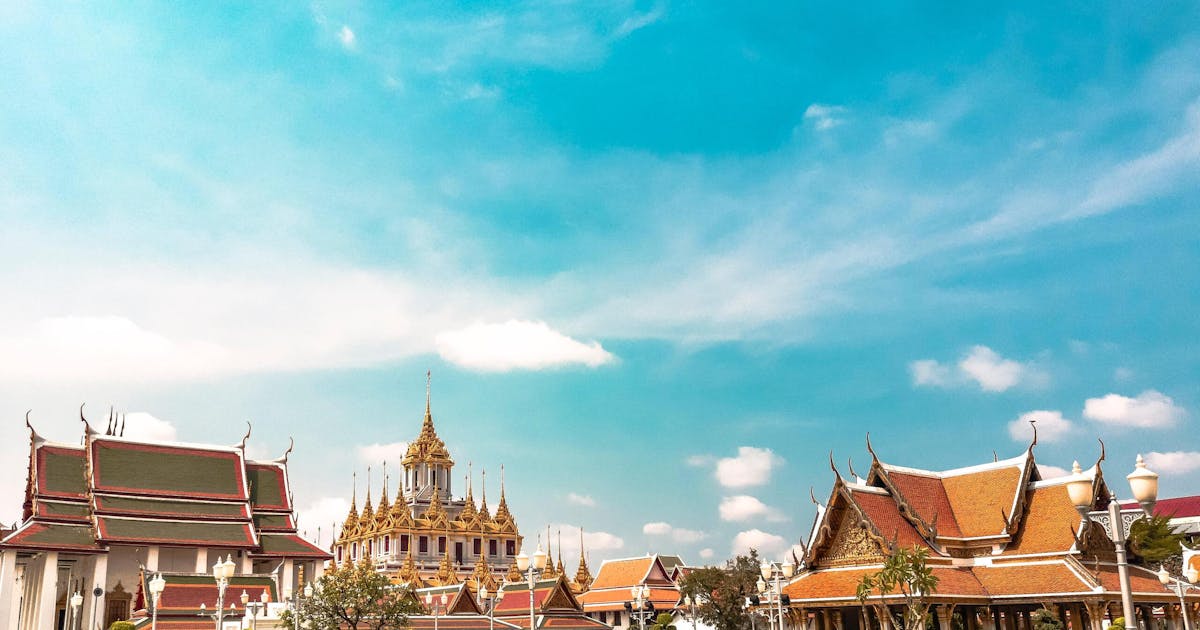
Thailand Pass Requirements and Application Process
Thailand Pass
In this post you'll learn everything about the Thailand Pass including the required documents, entry requirements and how to apply.
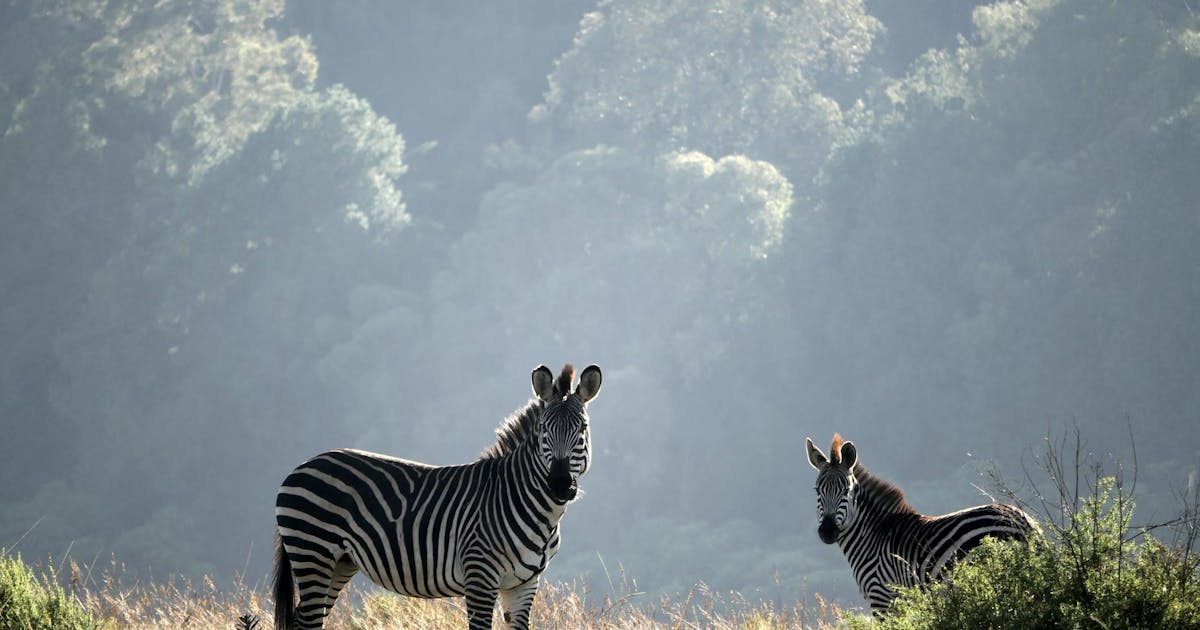
Malawi visa for US Citizens
Malwai visa for US citizens
US citizens enjoy visa-free entry to Malawi. Learn about fees, visa-extension, US green-card holder requirement and more
Visa Guaranteed on
- Tourist Visa
- Student Visa
- Volunteer Visa
- Business Visa
- Family Visa
- Retirement Visa
- Religious Visa
- Digital Nomad Visa
- Public Holidays & Festivals
- Politics of Peru
Peruvian Economy
- Weather & Climate in Peru
- Important Facts & Figures - Peru
- Cultural Centers
- International Parishes & Churches
- Casinos & Gambling
- Customs Regulations & Info
- How many days did I get?
- Tourist Visa extension in Peru
- Peruvian Overstay Fine
- International Document for Antecedentes Peru
- Paying Administration Charges
- Permit to Sign Contracts
- Interpol - Ficha de Canje
- Travel Permit
Subsanacion - Submitting documents
- Extending a Migraciones deadline
- Residence visa extension
- Renewal Carné de Extranjería
- Update Migraciones information
- Carné replacement
- Marrying in Peru
- Driver's License in Peru
- Police Clearance Certificate Peru
- Travel Authorization for Minors
- Finding a Job in Peru
- Domestic Workers in Peru
- Labor Regulations Peru
- Air Passenger Rights
- How Dangerous is Peru?
- Appearance & Behavior
- Money & Credit Cards
- Tips for your Journey
- Taking a Taxi
- Health & Medical Care
- Earthquakes in Peru
- Drugs & Illegal Substances
- Meeting the Opposite Sex
- Woman Traveling Alone
- Cybersecurity Basics
- Crime & Safety Report
- Arts, Crafts & Souvenirs
- Malls & Commercial Centers
- Supermarkets
- Markets - Mercados
- Department Stores
- Shopping Peruvian Way
- Post, Cellphones, Wifi, Internet...
- Courier & Mail Services
- Radio Stations
- Television Stations
- Business Information
- Chambers of Commerce
- Peruvian Ministries
- Institutions & Associations
- Earthquakes
- Emergency Numbers
- Ambulances & Services
- Pharmacies & Medicine
- Homeopathic & Alternative Medicine
- International Hospitals
- Supporting Institutions
- National Symbols of Peru
- Political History of Peru
- Peruvian Legends, Myths & Tales
- Gods, Spirits, Deities & Worshipping
- Personalities & Founders
- Peruvian Archaeology
- International Schools
- Top Universities
- Glossary of Terms
- Lima International Airport
- Important Facts & Figures - Lima
- Population Development in Lima
- Weather & Climate in Lima
- Begging & Beggars in Lima
- Lima History
- Huacas (Adobe Pyramids)
- Historical Buildings
- Plazas (City Squares)
- Historical Churches & Convents
- Citytours & Sightseeing
- Cinemas & Cineclubs
- Parks & Gardens
- Lima for Kids
- Districts of Lima
- Embassies & Consulates
- Tourist Attractions & Sights
- Travel Information
- Long Distances Buses
- National Peruvian Airlines
- Starter & Appetizer
- Main Courses
- Salsas, Sauces & Dips
- Drinks & Beverages
- Peruvian Cheese
- Aji - Chili Peppers
- Grains, Coffee, Beans & Nuts
- Common Herbs
- Other Ingredients
- Distinguish Real & Fake Money
- Monetary Systems of Peru
- Handling Money in Peru
- ATMs, Credit Cards & Travelers Cheques
- Changing Money in Peru
- Tipping in Peru
- Money Transfers - Peru
- Current Peruvian Banknotes
- Current Peruvian Coins
- Wealth and Pride Coin Series
- Natural Resources Coin Series
- Threatened Wildlife Coin Series
- Builders of the Republic Coin Series
- Woman in Process of Independence Coins
- Banks & Banking
- Old Banknotes
- Books & Documents
- Videos, Clips & Documentaries
- Laws, Norms, Legal Codes & Decrees

- Legal Stuff
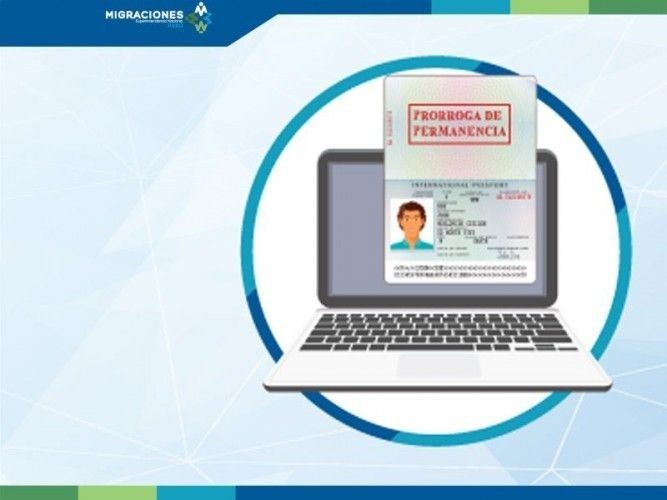
For the past two decades, every few years the regulations in Peru would change, determining if foreigners can extend their stay as a tourist in the country or not. Since August 2021, foreign tourists couldn't extend their time in Peru anymore. However, this general “no” for tourist visa extensions was softened with the implementation of new Migraciones administrative regulations on October 22, 2023, which allow foreign nationals from member countries of the Andean Community, and only these (!), to extend their stay as a tourist again and abolished with the new Foreigner Law, Decreto Legislativo 1582 on November 14, 2023.
The new Foreigner Law , Decreto Legislativo 1582 , published on November 14, 2023, states that foreign tourists can stay in Peru for 183 accumulated days in a 365-day period ; so, half a year within one year. It further describes that in case foreign tourists don't get the full 183 days, an extension can be granted until the 183 days are reached, unless international agreements or conventions determine a shorter period or don't allow extensions.
As till today (end of January 2024) the administrative regulations, called TUPA, necessary for the implementation of the new Foreigner Law still haven't been published, we don't know, which foreign nationals can extend or for which nationalities there might be restrictions or when foreigners might be able to extend or how it works. The only foreign nationals, who already now can extend their stay as a tourist, are Bolivians, Ecuadorians and Colombians, which is stated in the TUPA from October 2023.
Anyway, right now we have to wait for more official news.
Tourist visa extension in Peru, May 2018 to March 2020
Tourist visa extension in peru, march 2020 to august 2021, tourist visa extension in peru, august 2021 to october 2023.
- Tourist visa extension in Peru from October 22, 2023 to November 13, 2023
Tourist visa extension in Peru since November 14, 2023
Overstaying as a tourist in peru.
To understand what's going on with tourist visa extensions in Peru, first some important background information about the situation from May 2018 to March 2020 and from March 2020 to August 2021, and then the unpleasant situation since August 2021 and the new development that gives hope for the future since October 2023.
From May 15, 2018 to March 2020, when Covid hit Peru, tourists who got less than the from the 2017 foreigner law allowed 183 days in a 365-day period when entering the country could extend their tourist visa, for those you can enter Peru visa-free the "temporary authorization to enter and stay as a tourist" (which is nothing more than an entry in the Migraciones database while in Peru quick and easy online. The procedure was and still is called "Prórroga de Permanencia - PRPL". However, it seemed that the online extension process was only supposed to work for South American nationals according to bi- and multilateral agreements and Migraciones was a bit surprised to find that all nationalities, some with problems, could suddenly extend online.
Back then, the platform to extend a “tourist visa” was embedded in the Migraciones website - where you still, however unfunctional, can find it - and didn’t work properly. While some foreigners could extend without any problems, others got seemingly never-ending error messages from “no data record found”, to “information of the bank receipt not found”, to “requested extension days invalid”. If the problems were just the result of bad programming or that the system supposedly only was intended to work for some nationalities - which makes sense to me and seems plausible as the Banco de la Nacion payment code with which you paid for the extension under "prorroga permanencia" explicitly stated that this option is only for South Americans - we will never know.
Anyway, in June 2019, it got a bit more complicated - welcome to Peru. The Peruvian Ministry of Foreign Affairs quietly published an updated list showing which nationals need a "real" tourist visa issued by a Peruvian consulate before coming to Peru and which nationals can travel visa-free to Peru and for how long. With this new publication, the general rule to be allowed to stay 183 days in a 365-day period became outdated for most nationalities.
So suddenly and mostly unnoticed, next to Schengen State nationals, many other nationalities including, for example, US and Canadian nationals were only allowed to stay for up to 90 days in a 180-day period. Immigration officers increasingly applied the new regulations from the Ministry of Foreign Affairs, giving many nationalities only the for their nationality allowed 90 days upon entry, which resulted in an increasing number of visitors in need of an extension and challenging the system.
Please see our PDF " Visas for Peru by country and allowed length of stay" at the end of this article to find out how long you can stay visa-free in Peru - this PDF is an English translation of the original from the Peruvian Ministry of Foreign Affairs which can be found here .
Then, in March 2020, Covid hit Peru, borders and airports were closed from one day to the other and thousands of tourists were stuck in the country for months. The Peruvian government assured all visitors that they can stay in the country, even with an expired "tourist visa" without having to fear any reprisals. As long as Peru is under the State of Emergency “tourist visa” extensions wouldn't be necessary and all overstaying fees would be waved. Additionally, visitors would get a 45-day grace period to leave the country after the State of Emergency is lifted.
Then in mid-2020, Migraciones - back then all offices were still closed - introduced a completely new online platform for Peruvians and foreigners, the Agencia Digital . Since then foreigners can for example change their immigration status (so apply for or change their residence visa), extend their residence visa, apply for different permits (such as the permit to sign contracts ), check the status of several procedures, etc. online. One menu point of the Agencia Digital is named “Prórroga de Permanencia”, so the extension of your temporary stay which technically includes the tourist visa / authorization to enter as a tourist.
However, in March 2021 the Supreme Decree 002-2021-IN , which updated and partly changed the Peruvian foreigner law ( Decreto Legislativo 1350 ) from 2017, and in July 2021 a new TUPA, which establishes new administrative regulations and procedures under the jurisdiction of the National Superintendency of Migration, was published. Both new texts lack any information regarding tourist visa extensions and only establish the rules and regulations for extending "real" temporary visas, such as a temporary student visa or the temporary work visa.
Despite still being in a State of Emergency, in mid-August 2021 Migraciones announced that - with air travel being possible for months now - the grace period for foreigners being in the country on an expired tourist visa /authorization to enter as a tourist is over. Starting August 20, 2021 foreigners who are in the country on an expired tourist visa / authorization to enter as a tourist have to pay the overstay fee of S/ 4.40 (0.1% of an UIT ) per day they overstayed when leaving.
Furthermore, it was communicated that at the moment, the "tourist visas" of those that are already in the country are not extended anymore. Those visitors only have the option of leaving Peru or applying for a temporary or permanent residency.
Visitors who entered Peru in or after August 2021 might have noticed that they only got 90 days, which - except for a few nationalities - is now the number of days most foreigners are allowed to stay in Peru on a "tourist visa". See below pdf document "Visas for Peru by country and allowed length of stay - October 2021" in the attachments.
And even today nothing changed. Tourists still can NOT extend their tourist visa / authorization to enter as a tourist anymore.
Tourist visa extension in Peru from October 22 to November 13, 2023
As already explained above, since August 2021, foreign nationals, those who can travel to Peru visa-free and those who have a real tourist visa in their passport, can not extend their stay as a tourist in Peru anymore.
Upon entry all foreign tourists get up to (!) 90 days, which - except for a few nationalities - is the number of days most foreigners are allowed to stay in Peru as a tourist in a 180-day period. But even those few nationalities, who are allowed to stay longer or who have a real tourist visa allowing them to stay longer, still only get up to 90 days upon entry.
However, while the number of days foreign tourist get when they enter the country for now seems to remain at up to 90 days, on October 22, 2023, a new TUPA, a document establishing the Migraciones administrative regulations and procedures, was published.
There you find that now foreign tourists in Peru, whose home country is a member of the Andean Community, which includes Bolivia, Colombia, Ecuador, and Peru, can extend their stay as a tourist for up to 90 days if they don’t exceed the maximum allowed stay as a tourist of 180 days per year.
If you prefer to read the administrative procedure for the so-called "Prorroga de Permanencia de Turista por Estatuto Migratorio Andino" yourself check out the new TUPA . You find the information on page 235, which is page 238 of the PDF document.
At the moment it’s not clear how the extension works. It's as well unknown if there could be already plans allowing other foreign nationals to extend their stay as a tourist as well (or if there is a glitch in the system as we had from 2018 to 2020 making it possible that everyone, some with problems, could extend).
So, as of today, officially tourist visa extensions are only possible for foreigners from Bolivia, Colombia, and Ecuador . According to the current regulations, other foreign tourists still cannot extend their stay .
On November 14, 2023, a new Foreigner Law, Decreto Legislativo 1582 , was published, stating that foreign tourists can stay in Peru for 183 accumulated days in a 365-day period; so, half a year within one year. It further describes that in case foreign tourists don't get the full 183 days, an extension can be granted, unless international agreements or conventions determine a shorter period or don't allow extensions.
At the moment (end of January 2024) the administrative regulations, called TUPA, necessary for the implementation of the new Foreigner Law still haven't been published. So, we don't know, which foreign nationals can extend (exception: Bolivians, Ecuadorians and Colombians, who at the moment are the only ones, who can extend, as explained in the chapter above) or for which nationalities there might be restrictions or when foreigners might be able to extend or how it works.
Anyway, right now we have to wait for more official news. Or if you have any current information on the topic, please let us know.
If your allowed time as a tourist in Peru is up, you either have to apply for a temporary or resident visa or leave the country. If you, however, decide to overstay, since January 1, 2024, a fine of S/ 5.15 (0.1% of an UIT) per overstayed day in 2024 (S/ 4.95 per overstayed day in 2023) has to be paid when leaving the country.
Our article "Peruvian Overstay Fine for tourists" explains in detail the legal backgrounds of overstaying, consequences of overstaying, and how and where you can pay the overstay fine.
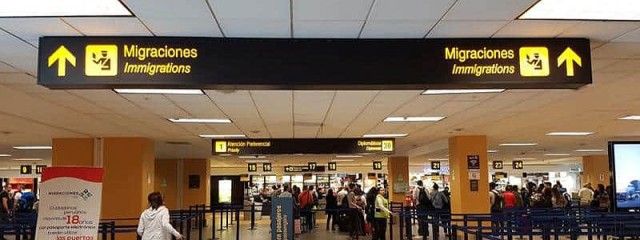
Peruvian Overstay Fine for tourists
Attachments.
- File Description File Size File Type Downloads

- 88 Comments
- Subscribe Unsubscribe
- Collapse All Expand All
or post as a guest
- decreto legislativo 1582 article 29 1 h.jpg ">
Peru Newsflash

New lizard species discovered in Peru

Peru has the second-worst drivers in the world

Machu Picchu reopens for the first time after the social outbreak

Peru extends the state of emergency in 44 districts
Peru event calendar, upcoming events in peru.
More in the Peru Event & Entertainment Calendar
Latest Content...

International Christian School of Lima - ICS Lima

Peruvian Digital Nomad Visa

Legislative Decree No. 1582 (Modification of the Peruvian Foreigner Law, Nov 2023)

Queso Rojo de Lluta

Peruvian Queso Andino

Peruvian Quesillo

Peruvian Queso Mantecoso

Peruvian Queso Paria

Peruvian Queso Fresco

Extension of a Migraciones deadline

Amnesty for Migraciones fines

Update your information in the Migraciones database

Replacement for a lost, stolen or damaged carné

Renewal of the Carné de Extranjería
Latest video.

Maria Reiche - Memories
Long reads....

The Mystery of the Nazca Lines in Peru

Francisco Pizarro González (1474-1541)

The colorful Fabrics and Textiles of Peru

The Jeweled Frog and the Condor

lima·easy - /ˈli mə/ - /ˈi zi/
In loving memory of "Jack" & "Lola"
Are you sure you want to close the session?
La cuenta ya se encuentra activa
Or enter your e-mail:
Recover your offer
We will send you a 4-digit code shortly
Enter the 4-digit code and your new password
Enter your search here
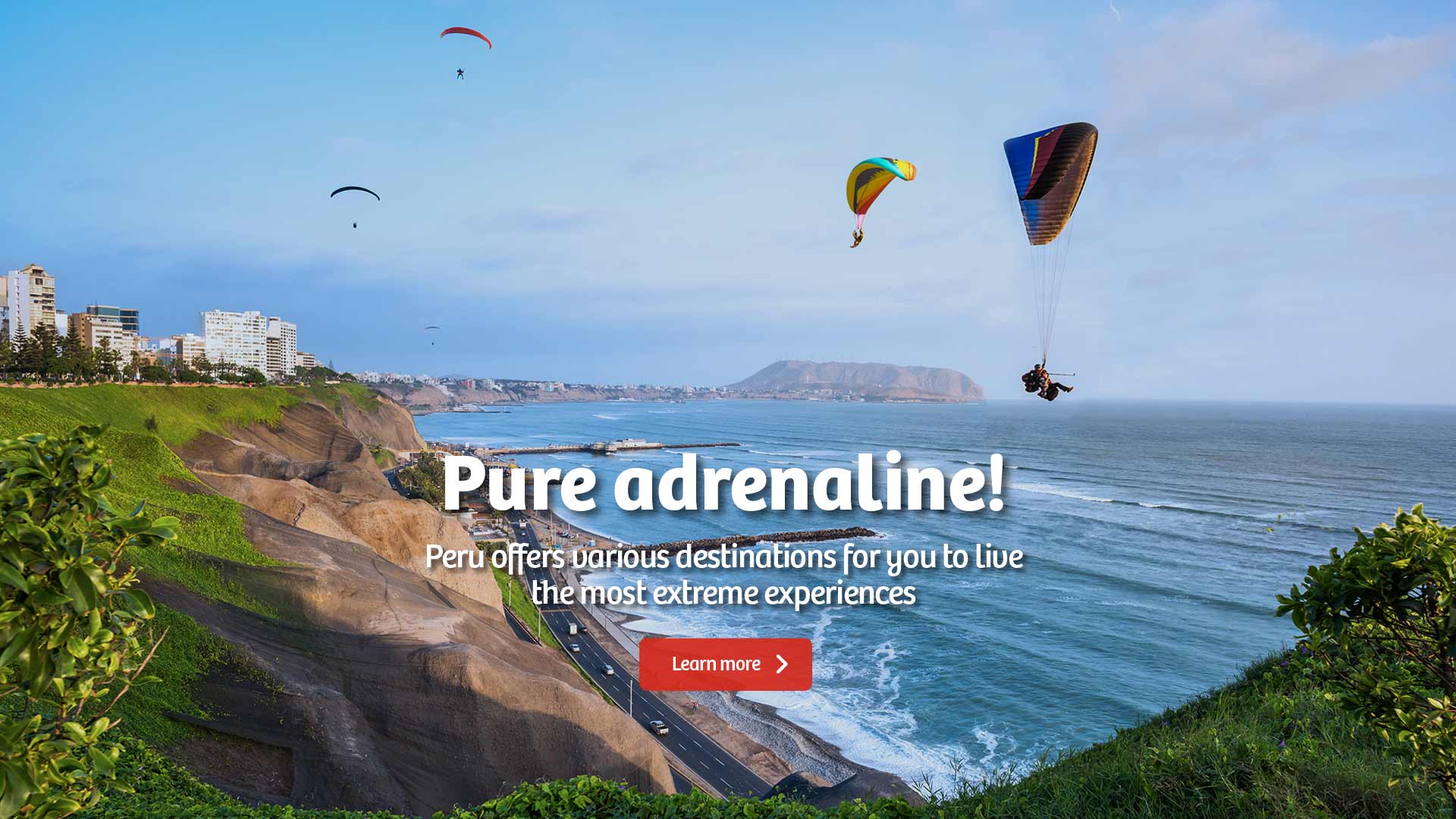
Credit: Shutterstock
Every experience is uniquely special
Cultural history.
Experiential
Entertainment
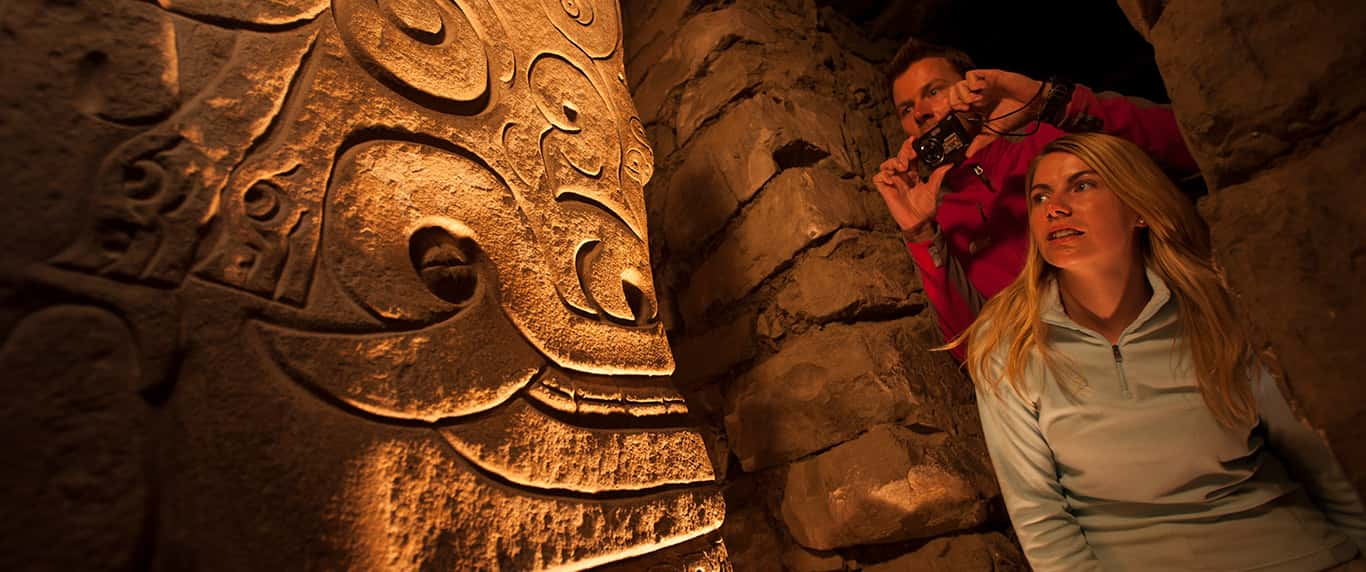
What is the most remarkable vestige of the past in Latin America?
The obvious answer would be Machu Picchu… And, of course, it certainly is. But we believe there are many more. Throughout Peru you can find marvelous vestiges of the past that astonish the world’s travelers. Machu Picchu is a must-see destination, but Peru is also home to Kuelap and Chavin de Huantar, Caral and Chan Chan , the Nasca Lines and Sipan … and we could name even more!
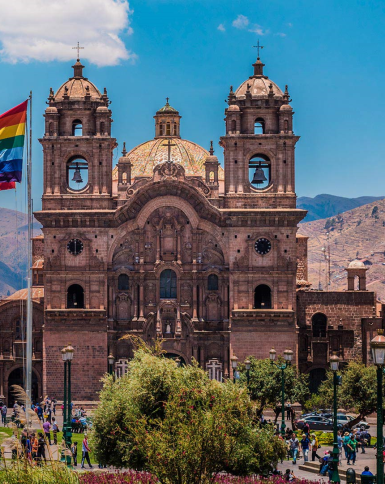
City tour in Cusco’s historic center
Visit the magical sights of the imperial city
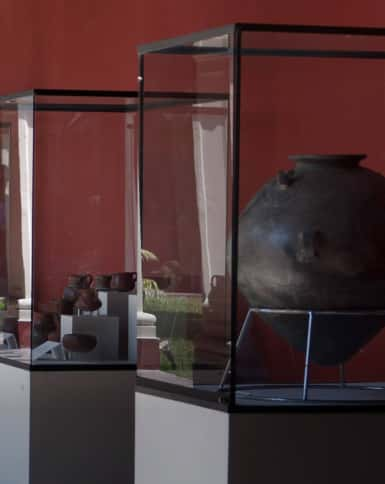
Lima city tour + museums
Lima’s museums
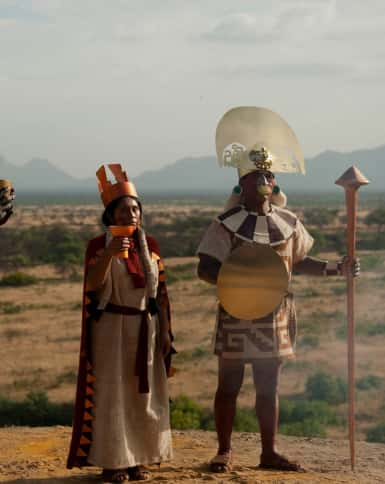
The Moche Route tour
Where ancestral knowledge seems boundless
These are the most searched destinations!

Where the Inca empire was born

Where tradition is today’s trend

A desert, all experiences

Living empire

Fascinating volcanic land
Peru around the world
Be amazed by the diversity of our natural, cultural and historic richness.

The latest updates from Peru: Everything you need to know
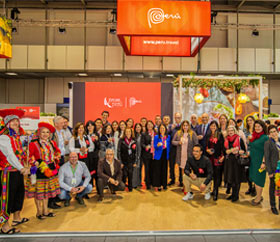
Peru will present its best tourist offerings at ITB Berlin ...
The Peruvian charm once again reaches Europe. ...

Vote for Peru in the 2024 WTA South America! ...
With 17 nominations, Peru consolidates itself as an exceptional tourist destination. ...

Peru will host the SKAL World Congress in 2025 ...
International event brings together tourism leaders in the land of the Inkas. ...

New species of orchid discovered in the Peruvian Amazon ...
Discover the fascinating beauty of a unique and impressive botanical find. ...

This site uses cookies: Learn more
Winter is here! Check out the winter wonderlands at these 5 amazing winter destinations in Montana
- Travel Tips
How To Be An Expat In Peru
Published: December 11, 2023
Modified: December 28, 2023
by Meade Keller
- Central & South America
- Plan Your Trip
- Travel Destinations
- Travel Guide
Introduction
Welcome to the fascinating world of being an expat in Peru! Whether you’re planning to move to the vibrant capital city of Lima or explore the mystical ruins of Machu Picchu, living in Peru offers a unique cultural experience like no other. From its rich history and diverse landscapes to its friendly locals and delicious cuisine, Peru has something to offer for everyone.
As an expat, you will have the opportunity to immerse yourself in the Peruvian way of life, learn a new language, and explore the country’s hidden gems. However, moving to a new country can be a daunting task, especially when it comes to navigating the logistics and adapting to a different culture. But fret not, this comprehensive guide will walk you through the essential steps to becoming an expat in Peru.
Before you embark on this exciting adventure, it is crucial to do your research and gather relevant information about Peru. Familiarize yourself with the country’s geography, climate, history, and culture. Understand the reasons why you want to move to Peru and what you hope to gain from the experience. Having a solid foundation of knowledge will not only help you make informed decisions but also enable you to fully embrace and appreciate your new surroundings.
From visa requirements and finding accommodation to job opportunities and language learning, this guide will provide you with invaluable insights and practical tips to make your transition to life in Peru as smooth as possible. So, grab your suitcase, put on your adventure hat, and get ready to embark on a journey of a lifetime as an expat in Peru!
Step 1: Researching Peru
Before you pack your bags and hop on a plane to Peru, it’s essential to conduct thorough research about the country. Understanding the geography, climate, and cultural nuances will help you prepare for your new life as an expat. Here are some key aspects to consider:
- Geography : Peru is located on the western coast of South America and is known for its diverse geography. From the coastal deserts to the Andean mountain ranges and the vast Amazon rainforest, Peru offers a range of breathtaking landscapes to explore.
- Climate : Peru experiences various climates due to its geographical diversity. Coastal areas have a mild desert climate, the Andean highlands have a cooler climate, and the Amazon rainforest has a tropical climate. It’s crucial to pack accordingly and be prepared for different weather conditions.
- Cultural Heritage : Peru has a rich cultural heritage dating back thousands of years, with the Inca civilization being the most famous. Take the time to learn about Peru’s history, traditions, and customs to better understand and respect the local culture.
- Safety and Security : While Peru is generally a safe country for expats, it’s important to familiarize yourself with the local safety precautions and be aware of any potential risks. Research the areas you plan to live in and travel to, and stay vigilant while exploring.
Additionally, it’s beneficial to explore the cost of living in Peru, healthcare services, transportation options, and available amenities. This will give you a realistic idea of what to expect and assist you in planning your budget accordingly.
Take advantage of online resources, expat forums, and travel guides to gather as much information as possible. Connect with other expats who have already made the move to Peru and seek their insights and advice. Their firsthand experiences can be invaluable in helping you make informed decisions and avoid common pitfalls.
By investing the time to thoroughly research Peru, you’ll be well-equipped to embrace the country’s unique characteristics and make the most of your expat experience. So, grab a cup of Peruvian coffee and let the journey of discovery begin!
Step 2: Understanding Visa Requirements
When planning to become an expat in Peru, it’s crucial to understand the visa requirements and immigration processes. Here are the key points to consider:
1. Tourist Visa: If you plan to stay in Peru for a short period, you can enter the country with a tourist visa, which is typically valid for up to 183 days. Some nationalities are exempt from obtaining a tourist visa and can enter Peru with just a valid passport. However, it’s crucial to check the specific requirements and duration of stay allowed for your nationality.
2. Temporary Residency Visa: If you intend to stay in Peru for a longer period, you’ll need to apply for a temporary residency visa. This visa allows you to live and work in Peru for a specified period, usually up to one year, with the possibility of renewal. To obtain a temporary residency visa, you’ll need to provide various documents, including proof of employment, a criminal background check, and a valid passport with at least six months of validity remaining.
3. Work Visa: If you have a job offer or plan to work in Peru, you’ll need to secure a work visa. The process for obtaining a work visa can be complex and requires sponsorship from a Peruvian employer. Your employer will need to provide a job offer letter, employment contract, and other supporting documentation to initiate the visa application process.
4. Investment Visa: If you plan to invest in Peru, you may be eligible for an investment visa. This type of visa is designed for individuals who wish to start a business, make a substantial investment, or contribute to the development of the Peruvian economy. The specific requirements and application process for an investment visa may vary, so it’s advisable to consult with a lawyer or immigration expert.
It’s important to initiate the visa application process well in advance of your planned move to Peru, as obtaining the necessary documents and approvals can take time. Consider seeking the assistance of a reputable immigration lawyer or consultancy to navigate the complexities of the visa process.
Remember to keep your visa documentation up to date and be familiar with the regulations surrounding your specific visa status. Ensure that you know the duration of stay allowed, work restrictions (if applicable), and any other obligations or requirements imposed by the Peruvian immigration authorities.
Understanding and fulfilling the visa requirements are essential steps to ensure a smooth and legal transition into expat life in Peru. So, get your paperwork in order and embark on this exciting journey with peace of mind!
Step 3: Finding Accommodation
One of the most important aspects of becoming an expat in Peru is finding suitable accommodation. Here are some tips to help you navigate the housing market:
1. Research Different Neighborhoods: Peru offers a variety of neighborhoods, each with its own unique characteristics and atmosphere. Research and explore different areas to find the one that best suits your needs and preferences. Consider factors such as safety, proximity to amenities, access to public transportation, and the overall vibe of the neighborhood.
2. Consider Your Budget: Determine your budget for accommodation and be realistic about what you can afford. Keep in mind that rental prices can vary significantly depending on the location, size, and condition of the property. Consider the cost of utilities and additional expenses such as maintenance fees, security costs, and parking fees.
3. Online Resources: Utilize online platforms, such as real estate websites and expat forums, to search for available properties. These platforms provide a wide range of options, including apartments, houses, and shared accommodations. You can filter your search based on your preferred location, budget, and other specific requirements.
4. Local Real Estate Agents: Engage the services of a reputable local real estate agent who has expertise in the area you wish to live in. They can provide valuable insights, show you properties that meet your criteria, and assist with negotiations and lease agreements. Make sure to communicate your needs clearly and ask for assistance in understanding the terms and conditions of the rental contract.
5. Temporary Accommodation: If you haven’t finalized your long-term accommodation before arriving in Peru, consider staying in temporary accommodations such as hotels, hostels, or short-term rentals. This will give you time to explore different neighborhoods and view properties in person before making a final decision.
6. Language Barrier: Keep in mind that the rental process in Peru may be conducted primarily in Spanish. If you’re not fluent in the language, it can be helpful to have a bilingual friend or hire an interpreter to assist you with communication and understanding the terms of the lease agreement.
7. Negotiation and Lease Agreement: Take your time to review the terms of the lease agreement before signing. Negotiate the terms if necessary, such as rental price, duration of the lease, and any included amenities. Read and understand the clauses pertaining to maintenance responsibilities, security deposits, and possible penalties for breaking the lease.
8. Verify Legalities: Ensure that the property you are considering is legally registered and free from any encumbrances or disputes. Verify the ownership and request copies of relevant documents to protect yourself from potential scams or legal issues.
By thoroughly researching, being proactive, and taking the necessary precautions, you can find the perfect accommodation that meets your needs and enhances your expat experience in Peru. Remember, your home should be a place where you feel comfortable and can fully immerse yourself in the vibrant culture of your new country.
Step 4: Navigating the Job Market
If you plan to work as an expat in Peru, it’s important to navigate the job market effectively. Here are some tips to help you find employment opportunities:
1. Research Industries and Job Opportunities: Start by researching the industries that are thriving in Peru. The country has a strong mining and resources sector, as well as a growing tourism industry. Look for job opportunities in sectors like hospitality, teaching English, IT, finance, and international organizations.
2. Network and Connect: Networking is a vital part of finding job opportunities in Peru. Attend industry events, join professional associations, and network with locals and other expats. Building connections can lead to potential job leads and valuable insights about the job market.
3. Polish Your Resume and Cover Letter: Tailor your resume and cover letter to meet the requirements of the Peruvian job market. Highlight your relevant skills, experiences, and qualifications. If possible, have them translated into Spanish to demonstrate your commitment to working in Peru.
4. Online Job Portals and Websites: Utilize online job portals and websites that specialize in Peruvian job listings. Websites such as LinkedIn, Indeed, and Computrabajo can provide a wealth of opportunities across various industries.
5. Seek Assistance from Recruitment Agencies: Recruitment agencies can help match your skills and qualifications with suitable job openings in Peru. They can guide you through the application process, provide interview preparation, and offer valuable insights into the local job market.
6. Teach English: Teaching English is a popular option for expats in Peru, as there is a high demand for English language skills. Consider getting a teaching certification if you don’t already have one and explore opportunities at language institutes, schools, or tutoring centers.
7. Language Skills: Improving your Spanish language skills can significantly enhance your job prospects in Peru. Fluency in Spanish is often a necessary requirement for many job roles and industries. Take language classes, practice speaking with locals, and immerse yourself in the local culture to become more proficient.
8. Volunteer or Intern: Consider volunteering or interning in Peru to gain local work experience and make valuable connections. This can be a great way to showcase your skills and commitment to potential employers.
9. Work Visa: If you require a work visa, ensure that your prospective employer is willing to sponsor your application. The employer will need to provide necessary documentation and support to help you obtain a work visa.
10. Be Persistent and Flexible: Finding a job in a new country can take time and effort. Be persistent, apply to a variety of positions, and be open to different opportunities. Consider starting with entry-level positions or internships to gain local experience and establish yourself in the job market.
Navigating the job market as an expat in Peru may have its challenges, but with research, networking, and perseverance, you can find rewarding employment opportunities that align with your skills and interests. Good luck with your job search!
Step 5: Learning the Language
One of the most valuable skills you can acquire as an expat in Peru is learning the local language, Spanish. Here are some tips to help you on your language learning journey:
1. Immerse Yourself in Spanish: Surround yourself with the language as much as possible. Watch Spanish movies, listen to Spanish music, and practice speaking with locals. Immerse yourself in the culture and embrace opportunities to use the language in everyday situations.
2. Take Language Classes: Consider enrolling in language classes with a reputable school or language institute. This structured learning environment can provide you with the necessary foundations of grammar, vocabulary, and pronunciation. Look for classes that focus on conversational skills to help you communicate effectively in real-life situations.
3. Practice with Language Exchange Partners: Find language exchange partners who are native Spanish speakers and are looking to improve their English or another language you may speak fluently. This way, you can practice your Spanish while helping them with their desired language. This can be a great opportunity to improve your spoken language skills, expand your vocabulary, and learn about the local culture.
4. Utilize Language Learning Apps and Online Resources: There are numerous language learning apps and online resources available that offer interactive lessons, vocabulary exercises, and pronunciation practice. Some popular options include Duolingo, Babbel, and Memrise. These tools can be conveniently accessed on your smartphone or computer, allowing you to learn at your own pace and in your own time.
5. Join Conversation Groups or Tandem Language Exchanges: Many cities in Peru have conversation groups or tandem language exchange events where language learners and native speakers meet to practice their language skills. Participating in these groups can provide you with valuable speaking practice and the opportunity to make new friends.
6. Immerse Yourself in Peruvian Culture: Learning the language is not just about grammar and vocabulary; it’s also about understanding the culture and context in which the language is spoken. Engage in cultural activities, attend local events, and make an effort to integrate into the community. This will enhance your language learning experience and deepen your understanding of the Peruvian way of life.
7. Be Patient and Persevere: Learning a new language takes time and effort. Be patient with yourself and don’t get discouraged by occasional setbacks. Celebrate small milestones along the way and acknowledge that progress may come gradually. Consistency and perseverance are key to becoming proficient in Spanish.
8. Use Spanish in Daily Life: Practice your Spanish whenever possible, whether it’s ordering food at a restaurant, shopping at local markets, or having conversations with locals. Even small interactions can help you improve your language skills and build confidence in your abilities.
Learning the Spanish language will not only make your daily life as an expat in Peru more enjoyable but also open up doors for meaningful connections and cultural experiences. Embrace the challenge and enjoy the journey of mastering this beautiful language!
Step 6: Adjusting to the Culture
Adjusting to a new culture is an important aspect of becoming an expat in Peru. Here are some tips to help you navigate and embrace the local culture:
1. Learn About Cultural Norms and Customs: Take the time to educate yourself about the cultural norms and customs in Peru. Familiarize yourself with greeting etiquette, dining customs, and social norms. Understanding and respecting the local culture will help you integrate smoothly into your new surroundings.
2. Embrace the Lifestyle: Peruvians have a relaxed and family-oriented lifestyle. Embrace this slower pace of life and soak in the warmth and hospitality of the local people. Take time to enjoy meals, connect with people, and savor the beauty of the country.
3. Open Yourself to New Experiences: Be open-minded and adventurous in trying new experiences. Peru is known for its diverse cuisine, vibrant festivals, and traditional arts. Explore local markets, try traditional dishes like ceviche and pisco sour, and participate in cultural celebrations to fully immerse yourself in the Peruvian way of life.
4. Build Connections with Locals: Engage with the local community and build connections with Peruvians. Join social or hobby groups, attend community events, and volunteer for local causes. This will not only help you make friends but also provide insights into the local way of life and deepen your understanding of the culture.
5. Respect Cultural Differences: Respect is crucial when adjusting to a new culture. Be mindful of differences in attitudes, beliefs, and values. Avoid making generalizations and stereotypes, and approach cultural differences with an open and curious mindset.
6. Learn Some Basic Spanish Phrases: Even if you’re not fluent in Spanish, learning some basic phrases can go a long way in connecting with the locals. Simple greetings, phrases for ordering food, and expressing gratitude are a good starting point. Peruvians appreciate the effort you make to communicate in their language.
7. Patience and Adaptability: Adjusting to a new culture can be challenging at times. Be patient with yourself and allow time for adjustment. Be adaptable and flexible in your approach to situations and expectations. Embrace the differences and learn from them.
8. Educate Others About Your Own Culture: As an expat, you have a unique opportunity to share your own culture with Peruvians. Educate others about your traditions, customs, and values. This exchange of cultures can foster understanding and appreciation for each other’s backgrounds.
Adjusting to the Peruvian culture may take time, but with an open mind and willingness to embrace new experiences, you can fully immerse yourself in the vibrant and diverse tapestry of Peruvian life. Enjoy the journey of cultural discovery and celebrate the richness of this beautiful country!
Step 7: Handling Finances and Banking
Managing your finances and banking effectively is crucial for a successful expat experience in Peru. Here are some tips to help you navigate the financial landscape:
1. Open a Local Bank Account: Consider opening a bank account in Peru to simplify your financial transactions. Choose a reputable bank that offers services in English, if needed, and has a wide network of ATMs for easy access to your funds.
2. Research Banking Options: Compare the services and fees of different banks to find the one that suits your needs. Look for features such as online banking, international wire transfers, and ease of use for expats. Consider customer reviews and recommendations from other expats to make an informed decision.
3. Currency Exchange: Familiarize yourself with the currency exchange rates and find the most favorable options for exchanging your money. Avoid exchanging large amounts of cash at airports or tourist areas, as they often offer less favorable rates. Use reputable currency exchange houses or withdraw local currency from ATMs as needed.
4. Budgeting and Expense Management: Create a budget that reflects your income and expenses in Peru. Consider the cost of living, rent, utilities, transportation, and other daily expenses. Keep track of your expenses to ensure you stay within your budget and plan for savings or investments.
5. Tax Obligations: Familiarize yourself with the tax obligations in Peru, including income tax and any other applicable taxes. Consult with a tax professional to ensure compliance with local tax laws and understand any tax benefits or exemptions available to expats.
6. International Money Transfers: If you need to send money internationally, explore options for cost-effective and secure transfers. Compare the fees and exchange rates offered by different money transfer services to find the best option for your needs.
7. Credit and Debit Cards: Carry a mix of credit and debit cards that are widely accepted in Peru. Notify your bank of your travel plans to avoid any unexpected blocks on your cards. Be cautious with your card usage and keep track of your transactions to prevent fraud or unauthorized charges.
8. Emergency Funds: Have an emergency fund in place to cover unexpected expenses or situations. It is advisable to have a reserve of savings that can support you during times of financial uncertainty or unforeseen circumstances.
9. Seek Financial Advice: If needed, consult with a financial advisor who specializes in expat finances. They can provide guidance on tax planning, investment opportunities, and long-term financial goals specific to your situation.
10. Insurance: Consider obtaining adequate insurance coverage for your health, property, and personal belongings. This will provide security and peace of mind in case of any unforeseen events or emergencies.
By taking the time to understand and manage your finances effectively, you can ensure a secure and stress-free expat experience in Peru. Stay informed, plan ahead, and make wise financial decisions that align with your goals and aspirations in your new home country.
Step 8: Accessing Healthcare Services
Accessing healthcare services is an important consideration when becoming an expat in Peru. Here are some tips to help you navigate the healthcare system:
1. Research the Healthcare System: Familiarize yourself with the healthcare system in Peru. Understand the public and private healthcare options available, as well as the quality of services provided. Research the availability of specialized medical facilities and the reputation of healthcare providers in your area.
2. Health Insurance: It is crucial to have comprehensive health insurance that covers your medical needs in Peru. Research and compare health insurance plans to find the one that best suits your requirements. Ensure that your policy provides coverage for both routine and emergency medical care.
3. Find English-Speaking Doctors: Look for healthcare providers, including doctors, specialists, and dentists, who are fluent in English or have staff members who can communicate effectively in English. This will help overcome language barriers and ensure a better understanding of your medical needs.
4. Seek Recommendations: Connect with other expats, locals, and your community contacts to seek recommendations for trustworthy doctors and medical facilities. Their firsthand experiences and insights can help you make informed decisions regarding your healthcare providers.
5. Emergency Services: Familiarize yourself with the local emergency services and hotlines, such as ambulance services and emergency medical responders. Keep emergency contact numbers readily available and know the nearest hospitals or clinics equipped to handle emergencies.
6. Locate Pharmacies: Identify nearby pharmacies and understand their operating hours. Ensure that you have access to necessary medications and familiarize yourself with the process for obtaining prescription medications in Peru.
7. Medical Records and Prescriptions: Carry copies of your medical records, including vaccination records and any pertinent medical history, translated into Spanish. Also, ensure that you have an adequate supply of your regular medications or prescriptions, and consider carrying a translated copy of the prescription.
8. Vaccinations and Preventive Care: Stay up-to-date with routine vaccinations and preventive care recommended for living in Peru. Consult with healthcare professionals or travel clinics to understand the specific vaccinations required or recommended based on your location and travel plans.
9. Learn about Local Healthcare Customs and Practices: Understand the local healthcare customs and practices, including appointment systems and wait times. Be aware that the healthcare system may operate differently from what you are accustomed to, and be prepared for potential cultural differences in healthcare delivery.
10. Obtain Travel Insurance: If you plan to travel within Peru or explore other countries in South America, consider obtaining travel insurance to cover any medical emergencies that may arise during your trips.
By being proactive in understanding the healthcare system, having appropriate health insurance coverage, and researching healthcare providers, you can ensure that your healthcare needs are well-managed during your time as an expat in Peru. Take care of your health so that you can fully enjoy your new life in this beautiful country.
Step 9: Exploring Peru’s Attractions
As an expat in Peru, you have the opportunity to explore the country’s incredible attractions and landmarks. Here are some tips to help you make the most of your time and uncover the beauty of Peru:
1. Machu Picchu: No visit to Peru is complete without experiencing the awe-inspiring ruins of Machu Picchu. Plan your trip in advance, as tickets to this UNESCO World Heritage Site can sell out quickly. Consider hiking the Inca Trail to Machu Picchu for a unique and rewarding experience.
2. Cusco: Cusco, the former capital of the Inca Empire, is a city steeped in history and culture. Explore the cobblestone streets, visit the historic Plaza de Armas, and immerse yourself in the vibrant cultural blend of ancient Inca and Spanish colonial influences.
3. Sacred Valley: Discover the scenic beauty of the Sacred Valley of the Incas. Explore archaeological sites such as Pisac and Ollantaytambo, marvel at the picturesque landscapes, and visit local communities to learn about traditional Andean customs and handicrafts.
4. Amazon Rainforest: Take a trip to the Peruvian Amazon and immerse yourself in the incredible biodiversity of the rainforest. Explore the jungle on guided tours, spot exotic wildlife, and experience the unique cultures of indigenous communities.
5. Lake Titicaca: Visit Lake Titicaca, the highest navigable body of water in the world. Take a boat tour to the Uros Islands, constructed entirely out of floating reeds, and experience the way of life of the local indigenous communities.
6. Nazca Lines: Discover the mysterious Nazca Lines, enormous geoglyphs etched into the desert floor. Take a scenic flight over the lines to appreciate their intricate designs and speculate on their purpose.
7. Colca Canyon: Explore the stunning Colca Canyon, one of the deepest canyons in the world. Marvel at the majestic Andean condors as they soar through the canyon, and enjoy the breathtaking views of the surrounding landscapes.
8. Lima: Spend time exploring Peru’s vibrant capital city, Lima. Visit the historic center of Lima, a UNESCO World Heritage Site, and indulge in the diverse culinary scene, which has earned Lima the reputation as the gastronomic capital of South America.
9. Adventure Activities: Peru offers a range of adrenaline-pumping activities for adventure enthusiasts. Try sandboarding in the desert, go white-water rafting in the rivers, or trek through the rugged landscapes of the Cordillera Blanca mountain range.
10. Local Festivals: Experience the vibrant and colorful festivals celebrated throughout the country. From Inti Raymi in Cusco to the Carnival of Oruro, these festivals showcase Peru’s rich cultural heritage and provide a glimpse into traditional customs and rituals.
Peru is a country brimming with natural wonders, ancient history, and cultural treasures. Take the time to explore and appreciate all that Peru has to offer. Whether you’re discovering world-renowned archaeological sites or immersing yourself in local traditions, embracing the attractions of Peru will undoubtedly make your expat experience even more enriching.
Step 10: Building a Support Network
Building a support network is an essential step in your journey as an expat in Peru. Having a strong support system will help you navigate the challenges of living in a new country and provide a sense of belonging. Here are some tips to help you build a support network:
1. Connect with Other Expats: Reach out to fellow expats in Peru through social media groups, expat forums, and networking events. Expats who have already experienced the transition can provide valuable insights, advice, and a sense of community.
2. Join Local Clubs and Organizations: Get involved in local clubs or organizations that align with your interests or hobbies. It could be a sports club, book club, language exchange group, or volunteer organization. These groups offer opportunities to meet like-minded people and make new friends.
3. Attend Expat Events and Meetups: Stay updated on expat events in your area and attend meetups specifically organized for expats. These events often include cultural activities, social gatherings, and networking opportunities that can help you connect with others and create new friendships.
4. Learn from the Locals: Engage with locals and learn about their customs, traditions, and way of life. Developing friendships with Peruvians can provide you with a deeper understanding of the local culture and an opportunity to practice your language skills.
5. Language Exchange Partners: Find a language exchange partner who is willing to help you improve your Spanish while you assist them with learning your native language. This mutual learning experience not only helps you improve your language skills but also fosters meaningful connections.
6. Attend Work-related Events: Participate in work-related activities, conferences, and networking events to meet professionals in your field. Building connections with colleagues and industry experts can provide support in your career and help you navigate the work environment in Peru.
7. Engage in Online Communities: Join online expat communities and forums dedicated to living in Peru. Interact with others, ask questions, and share your experiences. These platforms can be a valuable source of information and a way to connect with like-minded individuals.
8. Seek Professional Help or Counseling: If needed, consider seeking professional help or counseling services. Moving to a new country can be emotionally challenging, and having a therapist or counselor to talk to can provide support and guidance during the transition.
9. Stay in Touch with Family and Friends: Maintain regular contact with your loved ones back home. Technology allows us to easily stay connected through video calls, messaging apps, and social media. Having the support of family and friends from afar can provide comfort and a sense of belonging.
10. Be Open and Approachable: Be open to new experiences, approachable, and friendly. A positive attitude and willingness to engage with others will attract like-minded individuals and help you establish meaningful connections.
Building a support network takes time and effort, but it is an invaluable asset in your expat journey. Having a reliable network of friends, both expats and locals, will provide support, encouragement, and a sense of community as you navigate your new life in Peru.
Congratulations on taking the step to become an expat in Peru! As you embark on this exciting adventure, remember that preparation, adaptability, and an open mind are key to a successful transition. This comprehensive guide has provided you with the essential steps to navigate your new life in Peru.
Researching Peru, understanding visa requirements, finding accommodation, navigating the job market, learning the language, adjusting to the culture, handling finances and banking, accessing healthcare services, exploring Peru’s attractions, and building a support network are all crucial aspects of expat life in Peru.
By immersing yourself in the local culture, exploring Peru’s incredible attractions, connecting with the expat and local communities, and staying open to new experiences, you are sure to create a fulfilling and memorable expat life in Peru.
Remember, becoming an expat is not just about the practicalities; it is an opportunity for personal growth, cultural exchange, and discovering a new way of life. Embrace the challenges, celebrate the successes, and cherish the experiences that await you in magical Peru.
Settle in, make the most of your time, and take advantage of all that Peru has to offer. From the stunning Inca ruins to the breathtaking landscapes, vibrant cities, and warm-hearted locals, Peru is bound to captivate you and leave a lasting impression.
As you embark on this new chapter, remember that adaptability, resilience, and an open mind will be your greatest assets. Enjoy the journey, savor the moments, and make lifelong memories as an expat in Peru!

- Privacy Overview
- Strictly Necessary Cookies
This website uses cookies so that we can provide you with the best user experience possible. Cookie information is stored in your browser and performs functions such as recognising you when you return to our website and helping our team to understand which sections of the website you find most interesting and useful.
Strictly Necessary Cookie should be enabled at all times so that we can save your preferences for cookie settings.
If you disable this cookie, we will not be able to save your preferences. This means that every time you visit this website you will need to enable or disable cookies again.
We’re sorry, this site is currently experiencing technical difficulties. Please try again in a few moments. Exception: request blocked
Top 3 Peru Travel Visa Options
Peru, with its diverse landscapes, rich cultural heritage, and warm hospitality, has become an increasingly popular destination for remote workers and expats looking for a blend of adventure, affordability, and spectacular scenery. Good news is that there is a variety of options for Peru travel visas.
Whether you want to explore the mountains, enjoy tasty food, or experience different cultures, Peru has it all.
In this guide, we’ll talk about the different visas you can get to live and work in Peru, so you can make your ideal lifestyle work for you.
Understanding Visa Options in Peru
What are the digital nomad visa options, why consider the peru tourist visa exemption, who are eligible for the peru tourist visa exemption, requirements, how to apply, processing time, why apply for a peru tourist visa, who can apply, why get it, who can apply for the rentista visa, requirements to apply for the rentista visa, how to apply for the rentista visa, processing time for rentista visa, costs of applying for the rentista visa, why remote workers and expats choose peru , drawbacks of living in peru, cities to live in peru as a digital nomad, wrapping up.
When it comes to staying in Peru for an extended period, there are various visa options available to choose from, each catering to different needs and circumstances. These visas are designed to make your stay in this vibrant country as smooth as possible. Here are some of the key visa options:
- Visa exemption While not really a visa option, this exemption allows certain nationalities to forgo the need to apply for any visa when visiting Peru
- Tourist Visa The tourist visa is a popular choice for those looking to explore Peru for a shorter duration. It allows you to stay in the country for up to 183 days within a 365-day period. Whether you’re an avid traveler or a digital nomad who prefers short stays, the tourist visa is a flexible option.
- Rentista Visa If you’re a retiree seeking a peaceful life in Peru, the Rentista Visa might be the ideal choice. To qualify for this visa, applicants must demonstrate a steady source of income, such as a pension or investments, providing financial stability during their stay.
- Business Visa Business professionals and entrepreneurs can opt for a Business Visa, which permits them to engage in commercial activities within Peru. This visa often requires proof of your business intentions in the country.
- Work Visa For those planning to take up employment in Peru, the Work Visa is essential. You’ll need a valid job offer from a Peruvian employer to qualify for this visa.
- Student Visa Students looking to pursue education in Peru can apply for a Student Visa. It’s crucial to secure admission to a recognized educational institution to obtain this visa.
- Investor Visa If you plan to invest in the Peruvian economy, the Investor Visa is the route to take. This visa requires a significant financial investment in the country.
- Family Reunion Visa Designed for those with family members who are Peruvian residents or citizens, the Family Reunion Visa allows you to join your loved ones in Peru.
- Andean Community Visa Citizens of Andean Community countries, including Colombia, Bolivia, and Ecuador, can take advantage of this special visa program, simplifying their stay in Peru.
- Migrant Visa The Migrant Visa caters to individuals with foreign or Peruvian national spouses, promoting family reunification.
- Diplomatic and Official Visa These visas are for government officials, diplomats, and employees of international organizations representing their respective governments in Peru.
It’s important to note that visa application processes and requirements may vary, and it’s advisable to consult with a legal expert or immigration consultant who can guide you through the application process and provide accurate details on associated costs.
Who Doesn’t Love Cheap Flights?

Skyscanner is your trusted service for buying cheap flight tickets, with no extra fees or markups! Their flight search will not only find the best option for your specific dates, but it will also offer another period when the cost may be even lower.
Among the visa options available in Peru, the most popular for digital nomads or remote workers are:
- Visa exemption
- Tourist visa
- Rentista visa
We’ll look at each visa option in the next section.
Tourist Visa Exemption Scheme
Peru offers a Tourist Visa Exemption Scheme that allows citizens of various countries to visit without the need for a tourist visa.
No formal application process is required for this visa exemption. Eligible travelers need only arrive in Peru to enjoy their visit.
The duration of stay granted under this exemption typically allows for a 90-day visit. However, some countries enjoy extended stays:
- Brazil and Chile offer a 180-day stay within a year.
- Citizens of the Dominican Republic are granted a 60-day stay.
- Mexicans can stay for up to 183 days.
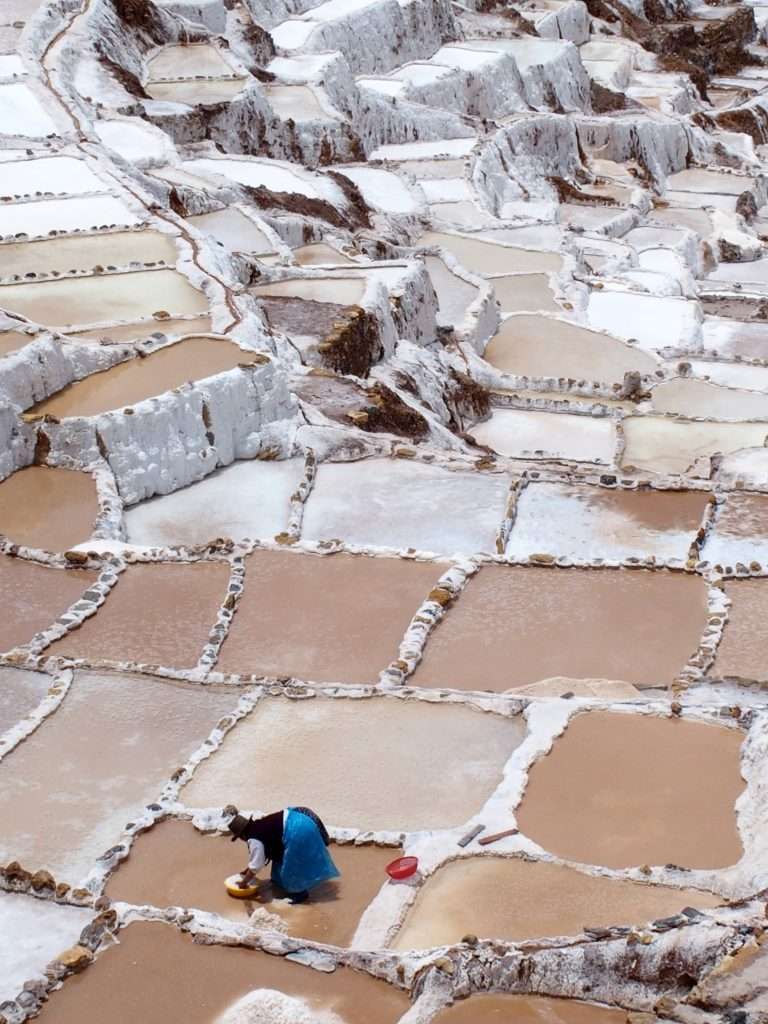
Travelers from the following nations can enjoy this privilege: Antigua and Barbuda, Argentina, Barbados, Belize, Bolivia (Plurinational State of), Brazil, Canada, Chile, Colombia, Commonwealth of Dominica, Costa Rica, Ecuador, Grenada, Guyana, Honduras, Jamaica, Mexico, Panama, Paraguay, Peru, Saint Kitts and Nevis, Saint Lucia, Saint Vincent and the Grenadines, Suriname, Trinidad and Tobago, the United States of America, the United States of Mexico, and Uruguay.
There are no specific requirements to fulfill for the Tourist Visa Exemption Scheme. It offers a hassle-free way for eligible travelers to explore Peru.
As this is an exemption scheme, there is no need for travelers to complete an application. The process simply involves arriving in Peru for the allowed duration.
The Tourist Visa Exemption Scheme has no formal processing time, as it is applied automatically upon entry to the country.
This visa exemption comes at no cost, making it an attractive option for tourists wanting to explore the wonders of Peru.
T ourist Visa
For those entering Peru for tourism or who come from visa-exempt countries, a tourist visa provides an opportunity to extend their stay beyond the initial visa-free period. Because of its generous stay duration, this is the closest you can get to a Peru digital nomad visa.
Tourists entering under visa-free agreements can enjoy a maximum stay of 183 days, except for nationals of the Schengen Area member states and associated countries who are permitted to stay up to 90 days within 180 days without a visa. Costa Rican and Panamanian citizens can stay for a maximum of 90 days per visit.
However, individuals from countries that are not visa-exempt must apply for a tourist visa to explore Peru further.
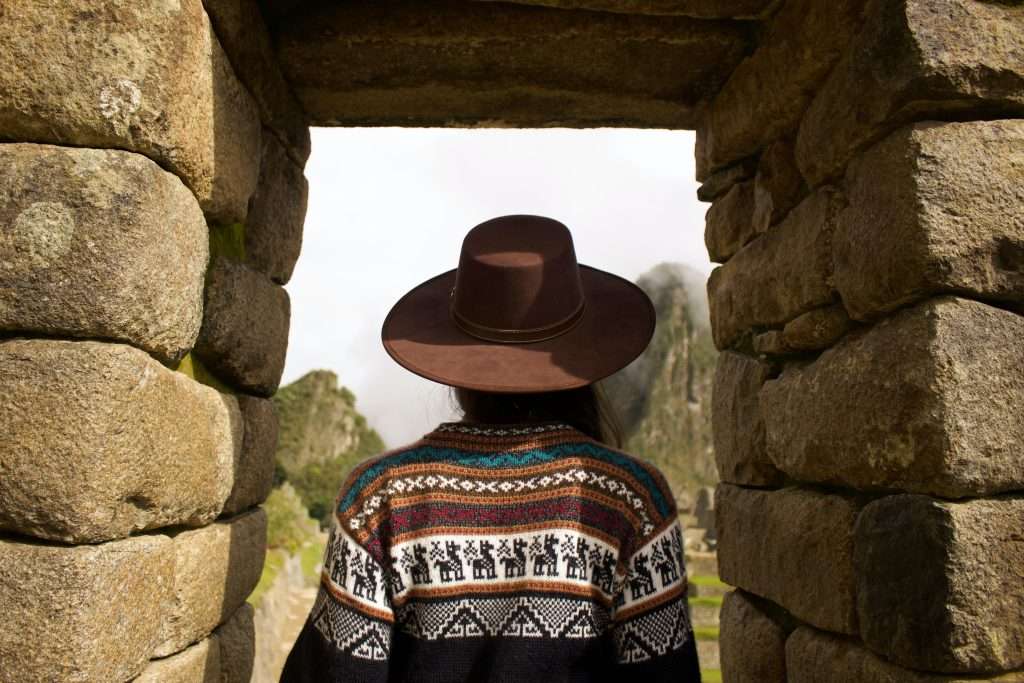
Requirements for tourist visas may vary depending on your country of origin. In the case of Canada, applicants should complete the following steps:
- Download and fill out the Form DGC005 .
- Present your current passport or Canadian Permanent Resident Card if you are from Canada.
- Provide a reservation or round trip ticket.
- Include either a hotel reservation, a reservation for a tourist package, or a letter of invitation.
- Submit two (2) photographs of 35 x 45 mm, taken within the last six months. The photos should feature a plain white background with your face and shoulders centered and squared to the camera. Your eyes should be open, clearly visible, and looking straight at the camera, with a closed mouth (no smiling or frowning). Avoid wearing glasses, hats, or head coverings, except those worn daily for religious beliefs.
- Present sufficient financial documents to demonstrate economic solvency.
- Pay the required consular fees.
The application process varies depending on your country of residence. Here are some general guidelines:
- In Canada , you can either book an in-person appointment or send your application by mail.
- In Australia , the entire process can be completed digitally by sending scanned documents to the Peruvian consulate’s email.
- In the US , it is preferable to schedule an appointment due to the requirement for a personal interview.
The processing time for tourist visa applications generally ranges from 15 days to 3 weeks, depending on your country of origin.
The cost of applying for a tourist visa is 45 CAD (Canadian dollars) or 32 USD (United States dollars).
Rentista Visa
The “Rentista Visa” is one of the most popular residence visas in Peru, particularly among retirees and even remote workers with passive income. It is designed for individuals who can demonstrate a source of income or financial means to support themselves without engaging in work within the host country. The term “rentista” is derived from the Spanish word for “pensioner” or someone who receives regular income, such as a pension or retirement funds.
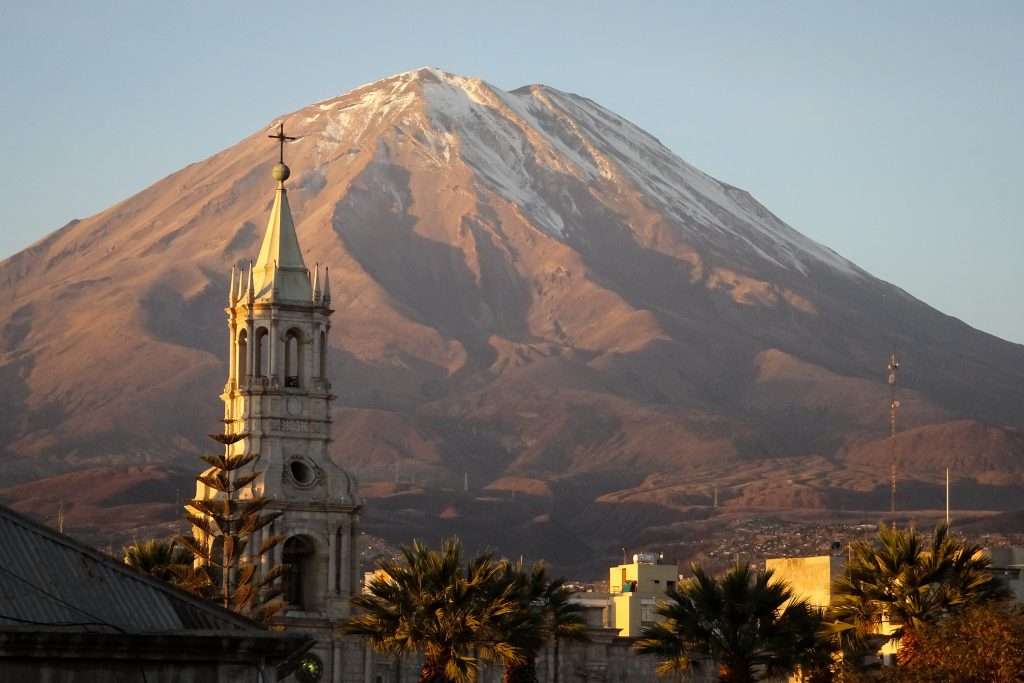
The Rentista visa in Peru offers the possibility of citizenship eligibility after residing in the country for two years, provided a minimum of 183 days are spent in Peru each year and proficiency in Spanish is demonstrated.
Alternatively, applicants not pursuing citizenship can opt for permanent residency after three years, allowing indefinite living in Peru; however, work is not permitted.
The application process is quick, with no investment or donation requirements.
To retain the visa, spending at least six months in Peru annually is necessary. Holders are granted a Carné de Extranjería, facilitating local banking, mobile phone purchase, and internet access.
To qualify for a Peru Retirement Visa, applicants must demonstrate a source of passive income amounting to at least $1,000 per month ($12,000 per year) or its equivalent in another currency. This monthly income must originate from outside of Peru and enter the country through a bank. Employment income or salary is not considered as passive income; it must be a consistent and permanent income source.
Additional eligibility criteria include:
- Residing outside of Peru to acquire immigration status.
- A clean police, criminal, and judicial record in both your country of origin and any other place where you previously held residence.
- If you intend to include your spouse and dependents, their age must be under 25 years. However, please note that the minimum required income increases by US$500 per dependent.
The necessary documents and steps to apply for a Rentista visa are as follows:
- Complete and sign the immigration quality application form .
- Provide a simple copy of your valid passport, which should remain valid for at least another 12 months when beginning the application process.
- Obtain a document from the competent authority that certifies the absence of a judicial, criminal, and police record in your country of origin, as well as any place where you resided for the five years preceding your entry into Peru.
- If you plan to include family members on the Rentista visa, you must furnish apostilled marriage certificates or birth certificates for your children.
- This may include providing a simple power of attorney, registering the power of attorney in Public Registries with a validity of the last 30 calendar days, or presenting a consular power of attorney apostilled or legalized by the Ministry of Foreign Affairs.
- Present a current identity document (ID) if you are Peruvian or a temporary immigration card or immigration card if you are a foreigner. In the latter case, you must also attach a simple copy of the document.
- If you are a foreigner with migratory status in Peru, you should possess a valid stay or residence permit.
For income from national sources, you must also provide:
- A simple copy of the document verifying the receipt of the monthly permanent income by the applicant.
For income from foreign sources, you must also submit:
- A simple copy of the document from the country where the income originates, demonstrating that the applicant receives a minimum permanent net income of US$1,000 monthly.
- An affidavit indicating that the money enters Peru through a banking or financial entity supervised by the Superintendency of Banking, Insurance, and AFP (SBS).
To apply for the Digital Nomad Visa in Peru, follow these steps:
- Payment : You’ll need to pay a fee of 105.60 soles, using code 07567, at any agency of the Banco de la Nación branch. Keep the receipt as you’ll need the information for your application. Attach the required documents in a single PDF file.
- Translations and Police Clearance (If Applying in Peru) : If applying within Peru, get your documents translated to Spanish. Consider obtaining an Apostille and using government-approved translators from the Peruvian government website. Also, obtain a “Ficha de Canje Internacional” or police clearance from Interpol in Peru.
There are two application methods:
- Overseas Apply for “Solicitud de calidad migratoria rentista” on Agencia Digital if you’re outside Peru and can’t enter visa-free. You’d need to pick up your visa at a Peruvian consulate, but this process may lack detail.
- Within Peru While the initial steps can be done online, you’ll need to be in Peru for the later stages. Apply online through the Agencia Digital . Remember that this platform is in Spanish, and using translation programs is not recommended.
Once you have it open, select Extranjero

Complete the process, including a detailed questionnaire and document uploads. You’ll eventually reach the “Pago por derecho de tramite” page, where you must enter bank receipt information, including the receipt number, verification code, and date of the transaction.
After completing these steps, you will get to the “Registro de Solicitud de Cambio de Calidad Migratoria” which confirms your successful application. Be sure to download and/or print the form and keep it safe.
Your application will have a unique file number, sometimes referred to as “Numero de expediente” or “Numero de tramite,” which consists of two letters (typically an abbreviation for the Migraciones office where you applied, such as LM for Lima) and nine numbers.
Additionally, the application date and a verification code will be displayed on the first page, underneath the signature/fingerprint field. Afterward, you’ll receive confirmation and your file details.
You can check the status of your application on Agencia Digital or access your Buzon Electronico . Once approved, arrange to get your biometric data taken and you will receive a notification about your visa status. If approved, you’ll be asked to collect your Carné de Extranjería.
For a more comprehensive guide, you can refer to this step-by-step instruction .
The processing time for a Digital Nomad Visa application is approximately 30 business days. However, in reality, it often takes 2-3 months to receive an official notification of visa approval.
To apply for the Digital Nomad Visa, you’ll need to remit a fee of 105.60 soles to Banco de la Nacion, a Peruvian bank.
Remote workers and expats are increasingly drawn to Peru for a multitude of reasons, including:

- Adventure and Exploration Peru is an adventure playground. You can explore the famous Inca Trail , go surfing by the coast, and do lots of outdoor activities in your free time.
- Affordable Living Living in Peru doesn’t cost a lot. It’s one of the cheapest places in South America , where you get a good life without spending too much.
- Great Food Peru is celebrated as the world’s culinary capital. Its food scene is a delightful fusion of indigenous ingredients and diverse culinary traditions. The famous ceviche, a zesty seafood dish, is just one example of the mouthwatering offerings that await your taste buds.
- Diverse Climates Peru’s climate spans from the arid deserts of the coast to the subtropical rainforests of the Amazon basin. This climatic diversity means you can experience everything from warm, sun-soaked summers to snowy winters, providing a little something for everyone.
- Rich Culture Peru’s cultural richness is a result of its intricate blend of Hispanic and indigenous influences. Music and dancing are a big part of life, and each region has its own style.
- Beautiful Nature Peru has stunning natural places. You can see deserts, rainforests, mountains, and volcanoes. If you love the outdoors, Peru is perfect.
- Warm Hospitality Peruvians are renowned for their warmth and openness to newcomers. The welcoming atmosphere and friendly nature of the people add immeasurably to the overall appeal of life in Peru. Whether you’re in bustling cities or remote villages, you’ll find the same open-hearted spirit.
- Good Healthcare Peru has good and affordable healthcare, which is important for retirees and expats looking for quality medical services.
All these things make Peru a fantastic choice for remote workers and expats who want an affordable, tasty, diverse, and friendly place to live.
Need to Always Stay Connected?

We recommend using the Airalo eSIM while traveling as a digital nomad. Airalo is the world’s first eSIM store that solves the pain of high roaming bills by giving travelers access to eSIMs in over 200+ countries.
Peru is a great place to be in but be aware of potential drawbacks as well:
- Language Barrier While Spanish is the official language, not everyone in Peru speaks English fluently. If you’re not proficient in Spanish, communication can be a challenge, especially in smaller towns.
- Bureaucracy Dealing with government agencies and paperwork can be slow and cumbersome. It’s essential to have patience when navigating bureaucratic processes, such as visa applications.
- Traffic and Transportation In larger cities like Lima, traffic congestion can be a significant issue. Public transportation can be crowded, and road conditions in some areas may not be ideal.
- Safety Concerns Petty crime, such as pickpocketing, is common in crowded areas and tourist destinations. While violent crime rates are relatively low, it’s crucial to stay vigilant and take necessary precautions.
- Healthcare in Rural Areas While urban areas offer excellent healthcare facilities, rural regions may have limited access to quality medical care. Expats with specific healthcare needs should consider proximity to medical facilities.
- Altitude Sickness If you plan to live in high-altitude areas like Cusco or Arequipa, you may experience altitude sickness. It’s advisable to acclimatize slowly to avoid health issues.
- Income Disparities Peru faces economic disparities, and poverty can be visible, particularly in rural areas. The cost of living might be low for expats, but many locals struggle with economic challenges.
- Environmental Concerns Pollution can be an issue in some urban areas, affecting air quality. It’s essential to consider environmental factors when choosing your place of residence.
- Cultural Adjustment Adapting to a new culture and its customs can be challenging. While Peruvians are generally welcoming, cultural differences may take time to get used to.
- Natural Disasters Peru is prone to natural disasters like earthquakes and flooding. Being prepared and informed is vital, especially if you live in areas susceptible to such events.
Despite these drawbacks, many expats have found a fulfilling life in Peru by taking these factors into account and making the necessary adjustments.
Peru offers several cities and regions that are ideal for remote workers and expats due to their unique combination of affordability, lifestyle, and amenities:

- Lima The capital city, Lima, is the country’s economic and cultural hub. It provides a bustling urban environment with a wide range of housing options, international cuisine, and excellent healthcare facilities. Neighborhoods like Miraflores and Barranco offer a vibrant expat community, making it a convenient choice for remote workers.
- Arequipa Known as the “White City,” Arequipa combines a rich cultural heritage with a more relaxed pace of life. The city boasts beautiful colonial architecture, a pleasant climate, and a lower cost of living compared to Lima. It’s particularly appealing to those who prefer a smaller, less hectic city.
- Cusco If you’re looking for a unique and historically rich setting, Cusco is an excellent choice. The former capital of the Inca Empire offers stunning mountain views and access to cultural sites like Machu Picchu . While it’s a bit more touristy, it’s a great base for digital nomads who love history and nature.
- Cusco Sacred Valley Located near Cusco, the Sacred Valley is an attractive option for those who want to immerse themselves in the Peruvian Andes. This peaceful area offers a serene environment, excellent hiking opportunities, and a tranquil lifestyle.
- Trujillo This coastal city provides a quieter atmosphere and a lower cost of living. With beautiful beaches nearby and a strong historical presence, Trujillo is an emerging destination for remote workers.
- Huanchaco Just north of Trujillo, Huanchaco is a beach town that combines surf culture with a laid-back lifestyle. It’s ideal for those who want to work by the sea and enjoy a close-knit expat community.
- A jungle city (e.g., Iquitos) For those who prefer a more adventurous setting, a city in the Amazon jungle can offer a unique experience. Iquitos, for instance, is the largest city in the world inaccessible by road. It provides a different way of life close to the Amazon rainforest.
When choosing a place to live as a remote worker in Peru, consider factors like climate, cost of living, and proximity to essential amenities. Each location has its charm and unique offerings, so it ultimately depends on your lifestyle preferences and work requirements. Be sure to visit these places to get a feel for what suits you best before making a decision.
Peru provides various visa options for remote workers and expats looking to reside in it. The tourist visa suits those seeking short stays, while the Rentista visa offers a path to long-term living. The possibility of acquiring citizenship after two years of continuous residence is an appealing prospect for those aiming to make Peru their permanent home.
Whether you’re attracted by Peru’s affordability, diverse climates, delectable cuisine, or the, breathtaking landscapes, there’s a visa choice that aligns with your needs. If anything, the tourist visa alone is already generous with its 183 day stay limit.
Ultimately, the choice of visa depends on your specific circumstances, and it’s essential to carefully consider the requirements, benefits, and limitations of each option.
Can I have multiple visas?
The Peruvian visa recognizes dual citizenship, so yes you can
Should I apply for a tourist visa or rentista visa?
It depends, if 183 days is enough for you in a year, a tourist visa will do just fine but if you intend to stay longer than that then a rentista visa is a good option. Although it is important to note tha you will lose your rentista visa if you do not meet the residency requirements.
Does Peru have a digital nomad visa?
Peru does not have digital nomad visa, but their tourist visa offers a maximum of 183 day stay, which is generous. The other option is their rentista visa whose requirements are not as strict as most countries’ digital nomad visas or alternative visas.
How much money do they expect to be in your bank account?
For the tourist visa, the government is mostly concerned whether you have enough funds to meet the minimum cost of living in the country. For the rentista visa, they do not generally check for the amount on your bank account but they need proof that you are a recipient to a monthly stipend or have a passive source of income of at least USD 1,000 per month
How long can I stay in Peru for each type of visa?
With the visa exemption, you can generally stay for up to 90 days. With the tourist visa, the maximum for any nationality is 183 days. However, if you get the rentista visa, you can stay indefinitely
Do digital nomads with rentista visa pay taxes in Peru?
If you’re granted a retirement visa in Peru, you are not liable to pay taxes in Peru. The amount of your permanent and monthly income originating from one of the sources mentioned above doesn’t matter. However, you may have to pay taxes in your country of origin.
Is it possible to extend your stay if you’re holding a visa-exempt passport?
Yes, you can extend your stay by applying for a tourist visa, however, the most you can stay in a calendar year is 183 days
How long does it take to complete the visa application process?
The tourist visa application is fairly straightforward and you can complete it within an hour.
However, the rentista visa requires more time and it requires at least two hours (appointments not included). You can get legal help but immigration lawyers, legal consultants or tramitadores charge anything between US$500 up to US$1400 for a simple visa application
Can you apply for the Peru visa while abroad?
You can apply for the tourist visa while overseas, and the same goes for the rentista visa. However, it is recommended to be in Peru when applying for the rentista visa.
Is it possible to bring a partner or children with the approved rentista visa?
Yes you can, although you’ll need to have an show that you have a higher minimum required income for each dependent
Related Posts

Peru is a country with diverse geography and climates, but this does not mean that it has great weather all year round. As a rule of a thumb, the best…

Ecuador is becoming a popular choice for digital nomads with tourist arrivals doubling in 2022 compared to the previous year. For those fortunate enough, a visa exemption might suffice. However, those…
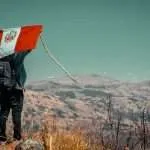
Are you wondering, "Is Peru Safe?" while planning your next adventure in this captivating South American destination? Peru, the enchanting third-largest country in South America, beckons with its iconic attractions,…
Leave a Comment Cancel reply
Save my name, email, and website in this browser for the next time I comment.
Destinations
Remote work.
© Half Digital Nomad
Ministerio de Relaciones Exteriores del Perú
- Formularios
- Asistencia Legal y Humanitaria
Barra de vínculos superior
- Pasaportes Biométricos y Salvoconductos
- Registros Civiles
- Trámites Notariales
- Asistencia Consular
- Redes de Científicos Peruanos
- Solicitud Acceso a la Información Pública
- DNIs y Pasaportes por recoger
- Proceso de Elección de Consejo de Consulta 2023-2024
- Nueva Ley de Retorno
- Como sacar una cita
Inicio rápido
- Sobre el Consulado
- Gastronomía Peruana
- Enlaces de Interés para los peruanos en el Exterior
Issuance of Tourist Visa
- It is essential that your passport is valid for at least six months from your entry into Peru.
- Citizens traveling on Canadian passports do not require a Tourist Visa to enter Peru.
- Holders of Chinese or Indian passports with permanent residence or Canadian visa valid for at least six months before entering Peru do not require a visa to travel to Peru for tourism.
- The presentation of the visa application, and supporting documentation, does not guarantee its automatic granting. Each request is individually evaluated by the Consul.
- During the processing of the application, the presentation of additional requirements may be required.
- It allows multiple entries for a maximum stay of one hundred and eighty-three (183) days in total during a period of three hundred and sixty-five (365) days. It is not extendable.
- A Visa is no longer valid if it has not been used for admission to Peru after six (06) months from the date it was issued or at the end of the approved period of stay.
- Please submit your application at least 15 days before your trip, in person or by post. Please see requirements for each case below.
- Download and complete the following: Form DGC005 .
- Present the current passport . It must be valid for at least six months from your expected date of travelling to Peru.
- Canadian Permanent Resident Card or Temporary Resident.
- Reservation or round trip ticket.
- Hotel reservation; o Reservation of tourist package; or Letter of invitation.
- One (1) photograph of 35 x 45 mm., taken no more than six months before you sumbit your application . Plain white background. Your face and shoulders centred and squared to the camera, not tilted in any direction. Your eyes should be open and clearly visible, looking straight at the camera, with a closed mouth (not smiling or frowning). No glasses. No hats or head coverings, except those worn daily for religious beliefs.
- Sufficient financial documents to proof economic solvency .
- Payment of consular fees : 45.00 Canadian dollars in cash or debit card, to be paid at our office.
- Our booking system is autonomous and independent.
- The availability of dates that you see on your screen is the same that consular officers have access to.
- It is not possible to grant appointments on dates when they are no longer available.
- Sometimes new time slots are released due to cancellation. It is up to those interested to periodically review the calendar to check availability, using the link that you will find in your confirmation email.
- In order to avoid delays, you must bring the indicated requirements.
- Only the person registered for the appointment may enter the consular premises, except in duly justified cases.
- Download, complete and sign the following: Form DGC005 .
- Send the current passport .
- Proof that you are resident in Canada.
- If you are a Permanent Resident , we need a notarized copy of your Canadian Permanent Resident Card.
- If you are a Temporary Resident , we need a copy of your Working or Study Permit . Please also be sure that your visa to Canada is valid if you plan to return to Canada after your trip.
- Reservation or round trip ticket.
- One (1) 35 x 45 mm photographs. no older than six months , white background, front view, at the height of the mid-chest, without a frame, without garments on the head except garments of a religious nature, without glasses.
- A Canada Post Xpresspost prepaid envelope , small (if more than two passports, a medium envelope is required), with your name and the address where the passport will be sent. It is recommended to write down your tracking number. The Consulate does not assume any responsibility in case of loss.
- Payment of consular fees : 45.00 Canadian dollars to be paid by "Money Order" or "Certified Check" made payable to "Consulate of Peru".
Consulate General of Peru
Attention: Visas
502 – 1166 Alberni St.
Vancouver, BC V6E 3Z3
We've detected unusual activity from your computer network
To continue, please click the box below to let us know you're not a robot.
Why did this happen?
Please make sure your browser supports JavaScript and cookies and that you are not blocking them from loading. For more information you can review our Terms of Service and Cookie Policy .
For inquiries related to this message please contact our support team and provide the reference ID below.
Peru: Peru Suspends Tourist And Business Visa Exemption For Mexican Citizens
By Supreme Decree No. 011-2024-RE, published in the Official Gazette "El Peruano" on Monday, April 8, 2024, the tourist and business visa exemption for holders of ordinary passports of the United Mexican States has been suspended. Here are the key points of this immigration provision:
1. Suspension of the tourist and business visa exemption: a. The exemption for citizens of the United Mexican States holding ordinary passports is suspended. 2. Visa application before a Consular Office: a. Citizens affected by the suspension must apply for a visa at the Peruvian Consular Office abroad and comply with relevant legal provisions. 3. Exemption from the tourist and business visa requirement: a. Citizens with a valid passport are exempt if they hold visas with a minimum validity of six months from certain countries or have permanent residence in specified countries or groups. 4. Maximum period of stay: a. The maximum stay under the exemption is 180 calendar days, either as a continuous visit or multiple visits within one year.
This Supreme Decree comes into force on April 24, 2024.
The content of this article is intended to provide a general guide to the subject matter. Specialist advice should be sought about your specific circumstances.

© Mondaq® Ltd 1994 - 2024. All Rights Reserved .
Login to Mondaq.com
Password Passwords are Case Sensitive
Forgot your password?
Why Register with Mondaq
Free, unlimited access to more than half a million articles (one-article limit removed) from the diverse perspectives of 5,000 leading law, accountancy and advisory firms
Articles tailored to your interests and optional alerts about important changes
Receive priority invitations to relevant webinars and events
You’ll only need to do it once, and readership information is just for authors and is never sold to third parties.
Your Organisation
We need this to enable us to match you with other users from the same organisation. It is also part of the information that we share to our content providers ("Contributors") who contribute Content for free for your use.

Peru’s Foreign Ministry reversed a previous decision on Wednesday to require visas for Mexican visitors. In a press statement, originally published in Spanish, officials stated the rationale for the reversal was a potential negative impact to the country’s tourism sector and a commitment to the free movement of people and goods.
The decision to abandon the April 8 Supreme Decree that removed visa-free travel for Mexican citizens was framed as an economic choice. Peru’s tourism sector , as of 2019, accounted for nearly four percent of the country’s gross domestic product and employed around 725,000 people. The number of people employed represented about 4.1 percent of the total workforce. Furthermore, the sector is seen as a key area of sustainable growth for Peru as it seeks to diversify the economy from reliance on natural resource extraction.
Additionally, Peru is a member of the Pacific Alliance . The organization promotes the “free mobility of goods, services, resources and people.” Both Peru and Mexico are members.
The Supreme Decree to remove visa-free travel for Mexican citizens was issued after a similar measure was enacted by Mexican authorities on April 4. Mexican officials stated their decision to impose the visa requirements was in response to a significant increase in the number of Peruvian nationals entering Mexican territory to engage in activities not authorized under their visitor status.
New visa requirements highlight the surge of migrants and asylum seekers coming through Central America and Mexico on their way to the US. Migrants have been increasing stranded in Mexico as US border states like Texas and Arizona have passed restrictive immigration policies.
Republic of Ireland Act enters force
On April 18, 1949, the Republic of Ireland Act went into force, creating a republic in the state of Ireland. The Act repealed the Executive Authority Act , which had given governing authority in Ireland to the King of England.
Treason charges against poet Ezra Pound dropped
On April 18, 1958, treason charges against American poet Ezra Pound, first laid in 1943 in connection with his wartime broadcasts for the Italian Fascist government of Benito Mussolini, were dropped. Read Jonas Doberman, The Treason Debate: Ezra Pound and his Rome Radio Broadcasts [PDF].

Peru changes its mind over tit-for-tat visa requirement for Mexico visitors
L IMA (Reuters) - Peru will not require Mexican visitors to secure a visa to visit the South American nation, officials said on Wednesday, in a reversal after insisting last week it would match Mexico's newly-approved visa requirement for Peruvian visitors.
In a statement, Peru's foreign ministry pointed to pressure from the country's key hospitality sector for the government's about face. Local tourist trade group Apotur has estimated that a visa requirement for Mexican visitors could trigger some $250 million in losses.
The visa rule for Mexican nationals had been set to take effect on April 22.
Late last week, Mexico's government announced it will require a visa application for Peruvian nationals seeking to enter Mexican territory, amid a recent surge of largely U.S.-bound migrants from the South American country.
The Mexican measure is set to take effect at the end of next week, according to the announcement in the government's official gazette.
(Reporting by Marco Aquino; Editing by Marguerita Choy)
Perú da marcha atrás y revoca el decreto que exigía visa a los mexicanos por miedo a perjudicar el turismo
Boluarte había aprobado la visa a los ciudadanos de méxico después de que lópez obrador hiciera lo mismo con los peruanos, pero ha rectificado por temor al impacto en el sector.
/cloudfront-eu-central-1.images.arcpublishing.com/prisa/G4TQHXMFLUHLTQNQB5C34AKCSY.jpg)
Los vínculos diplomáticos entre México y Perú viven en continua tensión desde que Dina Boluarte asumió el poder hace un año y medio. Las relaciones quedaron reducidas a encargados de negocios después de varios desencuentros entre Boluarte y su par, Andrés Manuel López Obrador, quien se ha resistido a reconocer su investidura presidencial y dilató hasta cuando pudo la entrega de la presidencia pro témpore de la Alianza del Pacífico.
El último viernes, México anunció una medida de carácter temporal que crispó los ánimos del Gobierno peruano: establecer como un requisito la visa a todos los ciudadanos andinos que deseen viajar a tierras aztecas, requerimiento que se había suprimido en noviembre de 2012. El principal fundamento de la Gobernación: el aumento exponencial de los flujos migratorios irregulares de quienes tienen como destino final el norte del continente, vale decir Estados Unidos. “El objetivo es proteger la seguridad y bienestar de quienes se encuentran en situación de movilidad humana, así como colaborar en la lucha contra las redes de tráfico de personas”, explica el comunicado.
La respuesta de la Cancillería peruana no se hizo esperar: al día siguiente, con el principio de reciprocidad a modo de justificación, anunciaron que también solicitarían visa a los mexicanos que planeen visitar el Perú. “Lamentamos esta decisión de México que menoscaba los esfuerzos por mejorar las relaciones bilaterales y afecta los compromisos programáticos asumidos en la Alianza del Pacífico para facilitar el libre movimiento de personas entre ambos países”, dice el oficio. El decreto supremo se publicaría en breve y el requisito entraría en vigencia desde el 23 de abril.
A diferencia de los países vecinos, la cartera encabezada por Javier González-Olaechea no había expuesto razones de peso y parecía ser una reacción drástica más que una decisión meditada. Según un artículo del politólogo Will Freeman, publicado en Americas Quarterly, las autoridades mexicanas detuvieron a casi 144.000 peruanos que intentaron cruzar las fronteras de manera irregular entre el 2021 y el 2023. En el último tiempo se ha desatado un fenómeno de emigración: en 2022 más de 400.000 peruanos se marcharon del país sin regresar y tan solo en el primer trimestre de 2023, otros 400.000 les siguieron los pasos.
No pocos especialistas criticaron la reacción del Ejecutivo. “Se puede ser un poco más estratégico para pensar qué es lo que más le conviene al país y no simplemente entrar en esta dinámica de tú me golpeas y yo te golpeo, que en política exterior no siempre es el mejor camino”, le dijo el internacionalista Óscar Vidarte al portal de investigación Epicentro TV. El consenso del debate público indicaba que si la diplomacia es el arte de construir y mantener relaciones y negociaciones con tino, este no había sido el caso. La comunicación se había ausentado.
Un dato contundente: México fue el noveno país que más turistas le aportó al Perú en el 2023, alrededor de 76.300 visitantes, según el Ministerio de Comercio Exterior y Turismo. Antes de la pandemia, esas cifras bordeaban los 130.000 turistas. No se trata de un asunto menor. Al parecer en Torre Tagle recién han caído en cuenta de ello: este miércoles, tan solo dos días después de la publicación del decreto supremo, el Gobierno peruano dio marcha atrás y anunció que ya no le exigirá visa a los vecinos del norte.
“Esta acción responde al llamado de diversas voces del sector turismo y afines, y honra nuestro compromiso con los principios de la Alianza del Pacífico , los cuales proclaman la libre movilidad de personas entre sus Estados miembros. Asimismo, reafirma nuestro espíritu en favor de la integración regional y los lazos de amistad y de cooperación con el pueblo mexicano”, dice el documento de Cancillería.
Ante este cambio de parecer, se desprende una pregunta: ¿ha sido con la intención de que México también dé un paso atrás o básicamente se analizó mejor la repercusión de la medida? Lo cierto es que a partir del sábado 20 de abril, los peruanos que tengan en sus planes recorrer México deberán contar con una visa. El trámite tendrá un costo de 53 dólares y se dará prioridad a quienes ya tenían sus pasajes comprados. No necesitarán visa aquellos que posean una visa válida o tarjeta de residencia para cualquier país que pertenezca al espacio Schengen .
Siga toda la información de El PAÍS América en Facebook y X , o en nuestra newsletter semanal .
Suscríbete para seguir leyendo
Sobre la firma, más información.
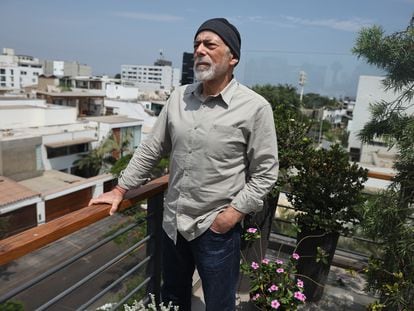
Ola de solidaridad internacional ante la embestida de la Fiscalía de Perú contra el periodista Gustavo Gorriti
/cloudfront-eu-central-1.images.arcpublishing.com/prisa/XXHJXRN4AVH3FG5MBA5BQ7VOOM.jpg)
El caso de los Rolex hace tambalearse a la presidenta de Perú
Archivado en.
- Latinoamérica
- Ciudad de México
- Dina Boluarte
- Andrés Manuel López Obrador
- Visa Internacional
- Francés online
- Inglés online
- Italiano online
- Alemán online
- Crucigramas & Juegos


IMAGES
VIDEO
COMMENTS
Call (+511) 200 1000. Visas and entry procedure. If you wish to stay longer for other reasons, such as business, studying or working, you need to request the relevant visa at a Peruvian consulate or embassy in your own country. Consulates and embassies. Directory of Peruvian.
If you are a foreign person who wants to visit Peru for recreational or similar purposes and, due to your country of origin, you require a visa to enter the country, you must apply for a tourist visa at the Peruvian consular offices of the country where you are. Citizens of some Latin American and European countries do not need this type of visa.
If you overstay your visa you will be required to pay a fine of $1.50 per day, for every day you overstay. This must be paid in cash on exit. Ensure that you have the correct money as you leave, or you could find yourself having problems. There is a limit of $30,000 USD for entry and exit. Anything higher that $10,000 USD must be declared.
Call us in Washington, D.C. at 1-888-407-4747 (toll-free in the United States and Canada) or 1-202-501-4444 (from all other countries) from 8:00 a.m. to 8:00 p.m., Eastern Standard Time, Monday through Friday (except U.S. federal holidays). See the State Department's travel website for the Worldwide Caution and Travel Advisories.
In general, tourist visa requirements include a passport with a 6-month validity minimum, a round-trip flight itinerary, hotel reservations and proof of financial solvency. This article was first published August 2021 and updated December 2023. Curious if you need a visa for visiting Peru?
Between 2008 and 2017, border hopping was an easy and popular way to "renew" your tourist visa. Back then, the Peruvian foreigner law stated that visitors can enter Peru for touristic, recreational, or health purposes for 183 days. It however didn't mention if the 183 days were per year or per visit.
Peru Visa Types. Depending on the reason behind your trip to Peru and the intended period of stay there are two types of visas for Peru: Temporary visas - mainly for those wishing to enter the country under tourism, business and other short-term purposes. The maximum stay under these visas is 183 days per year.
A Guide to Peruvian Visas. Peru is a very welcoming country and allows citizens of many countries to visit for touristic and recreational purposes visa-free. But as soon as you are planning to do business in Peru, stay longer, study, work, settle, or retire in the country, Peruvian law stipulates that you have the appropriate visa for it. Peru ...
Foreign nationals applying for a Peru tourist visa should visit their nearest Peru embassy, consulate, or foreign mission abroad. Peru Tourist Visa Processing Time. Peru visas are usually processed within 5 to10 business days, but processing times may vary, depending on the Peru foreign office where you are applying. Applicants are advised to ...
Peru is a popular tourist destination, with stunning scenery, beautiful beaches, and a diverse culture. If you are planning a trip to Peru, you will need to apply for an Peru visa. An Peru visa is a permit that allows you to enter and stay in Peru for a specific purpose. You can apply for an Peru visa online or by mail.
If you are a U.S. Citizen in Peru with an emergency, you can call our hotline at [011] (51-1) 618-2000. If you would like to contact the Cusco Consular Agency, you can call [011] (51-84) 231-474 or send an email to [email protected]. For complete contact information and hours, please click here.
The updated estimated time of tourist and business visa processing for Indian is of 7-10 working days, which are counted after the personal interview. Non-Indian nationals' applications may take around 10 additional working days to be processed. Once an application is submitted, the Consular Section of the Embassy of Peru reserves its right to ...
Visa requirements You do not need a visa to travel to Peru for tourism or short visits. If you are travelling for any other reason, check requirements with the Peruvian Consulate General in the UK .
Business Visa Application Requirements for a Peru Visa. You must provide your actual signed passport, including one copy of the personal information page of your passport. Your passport must: If your passport does not meet these requirements, please contact CIBTvisas at 800-929-2428 for further details.
There are two ways to extend Peru visa stay for tourism if you entered Peru with just a Peru TAM/ entry stamp, and without a sticker visa. Peru tourist stay can be extended for up to 90 days and up to the maximum allowed 183 days within a 365 days period. 1. Extend Peru visa online.
Peru visa requirements for US Green Card holders. When applying for a Peru visa for US citizens, ensure you have the following documents: Application form: You must submit the correctly filled-out Peru visa application form. Passport: The passport must be valid for at least 6 months from arriving in Peru.
Tourist visa extension in Peru since November 14, 2023. On November 14, 2023, a new Foreigner Law, Decreto Legislativo 1582, was published, stating that foreign tourists can stay in Peru for 183 accumulated days in a 365-day period; so, half a year within one year. It further describes that in case foreign tourists don't get the full 183 days ...
Throughout Peru you can find marvelous vestiges of the past that astonish the world's travelers. Machu Picchu is a must-see destination, but Peru is also home to Kuelap and Chavin de Huantar, Caral and Chan Chan, the Nasca Lines and Sipan … and we could name even more! See more. Cultural History.
Tourist Visa: If you plan to stay in Peru for a short period, you can enter the country with a tourist visa, which is typically valid for up to 183 days. Some nationalities are exempt from obtaining a tourist visa and can enter Peru with just a valid passport. However, it's crucial to check the specific requirements and duration of stay ...
Important Notice: Nonimmigrant Visa Processing Fee Increases. Effective June 17, 2023, the application fee for visitor visas for business or tourism (B-1/B-2) and other non-petition-based nonimmigrant visas, such as student and exchange visitor visas, increased from $160 to $185. The application fee for certain petition-based nonimmigrant visas for temporary workers (H, L, O, P, Q, and R ...
The tourist visa is a popular choice for those looking to explore Peru for a shorter duration. It allows you to stay in the country for up to 183 days within a 365-day period. Whether you're an avid traveler or a digital nomad who prefers short stays, the tourist visa is a flexible option. Rentista Visa.
Hotel reservation and/or tourism package confirmation in Peru. Proof of solvency (the 3 latest month statements showing a minimum of £1,000 plus a mini-statement from a cash machine on the day that the visa is requested). If you are a student, please provide a letter from your school confirming your studies.
Issuance of Tourist Visa. If you are a foreigner who wants to visit Peru for recreation or similar purposes and you require a visa according to your country of origin, you can apply for a tourist visa at the Consulate General of Peru in Vancouver. You must meet the requirements described below. This visa is not valid for immigration purposes ...
Peru will no longer require tourist visas for Mexican tourists, putting an end to a short-lived diplomatic move meant to reciprocate on similar restrictions imposed on Peruvian tourists traveling ...
By Supreme Decree No. 011-2024-RE, published in the Official Gazette "El Peruano" on Monday, April 8, 2024, the tourist and business visa exemption for holders of ordinary passports of the United Mexican States has been suspended. Here are the key points of this immigration provision: 1. Suspension of the tourist and business visa exemption: a.
The decision to abandon the April 8 Supreme Decree that removed visa-free travel for Mexican citizens was framed as an economic choice. Peru's tourism sector, as of 2019, accounted for nearly four percent of the country's gross domestic product and employed around 725,000 people. The number of people employed represented about 4.1 percent ...
In a statement, Peru's foreign ministry pointed to pressure from the country's key hospitality sector for the government's about face. Local tourist trade group Apotur has estimated that a visa ...
Boluarte había aprobado la visa a los ciudadanos de México después de que López Obrador hiciera lo mismo con los peruanos, pero ha rectificado por temor al impacto en el sector